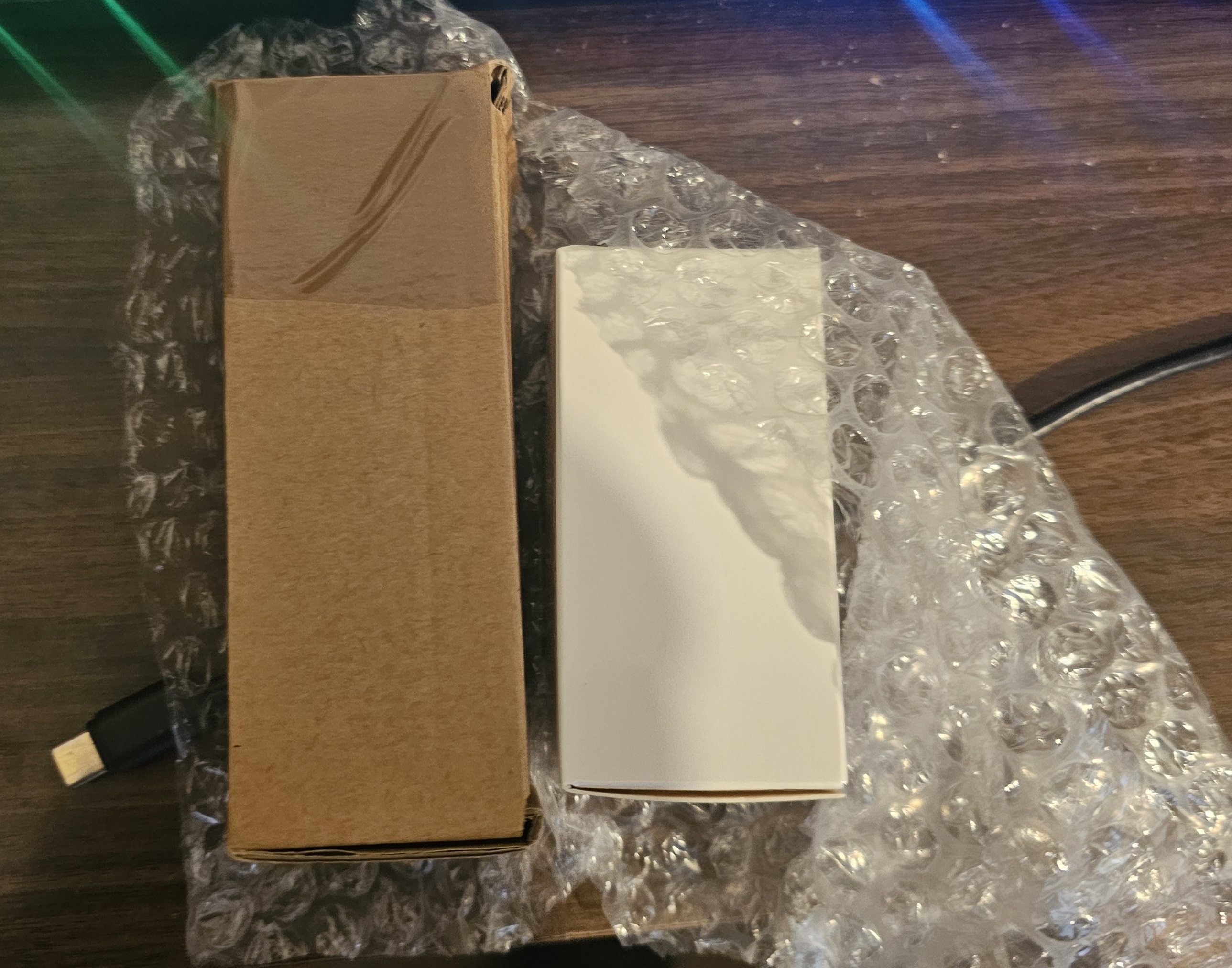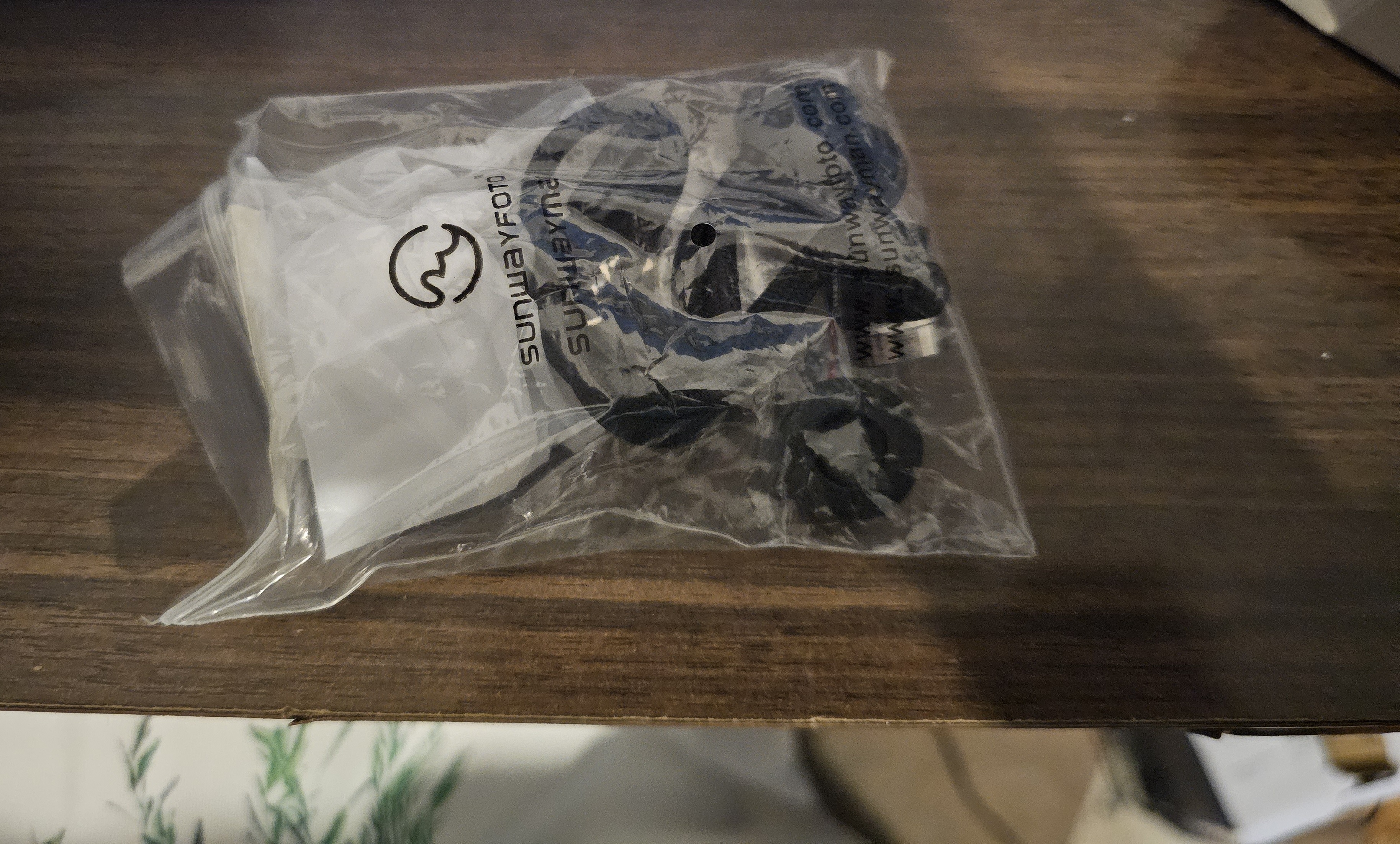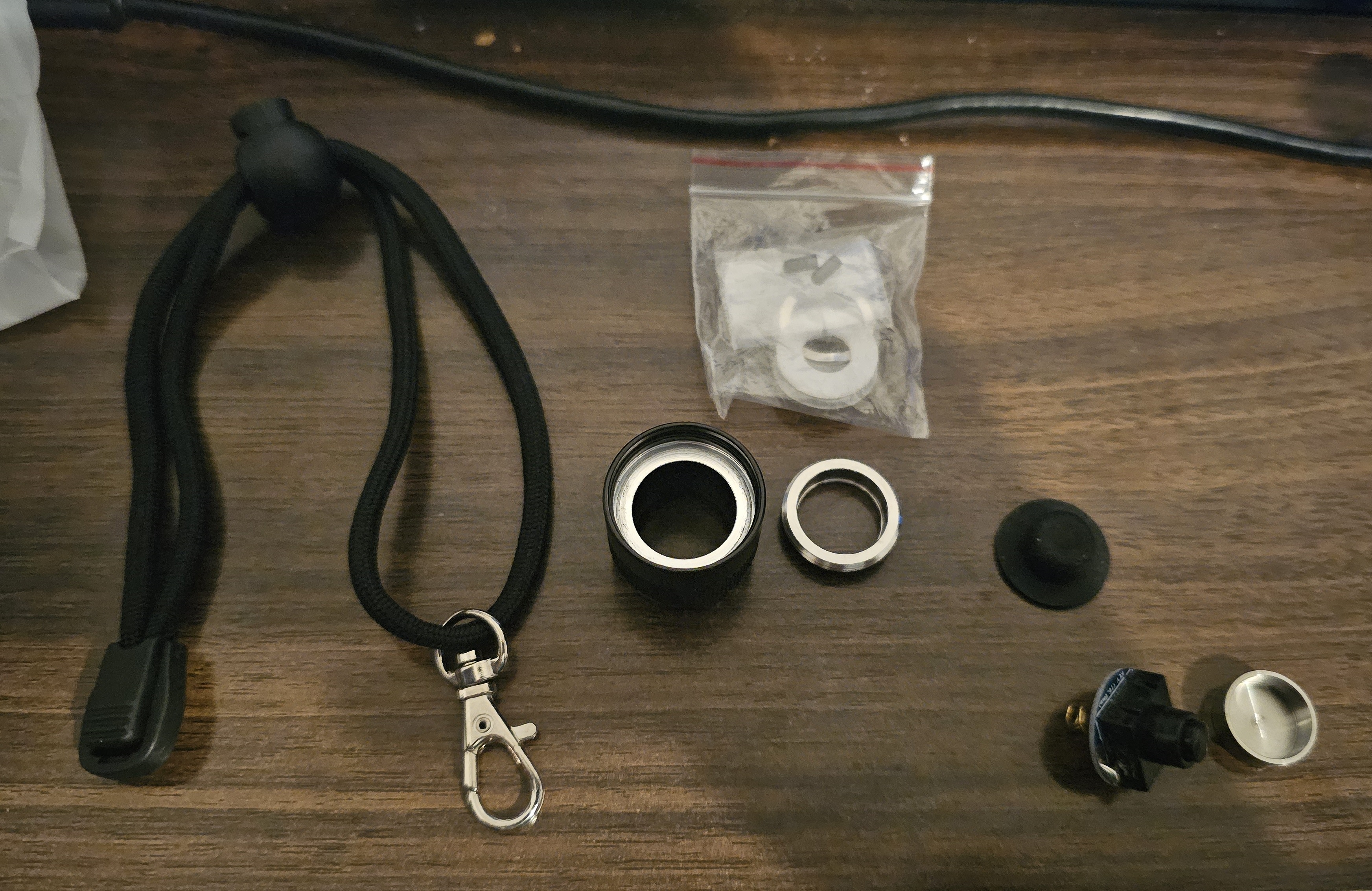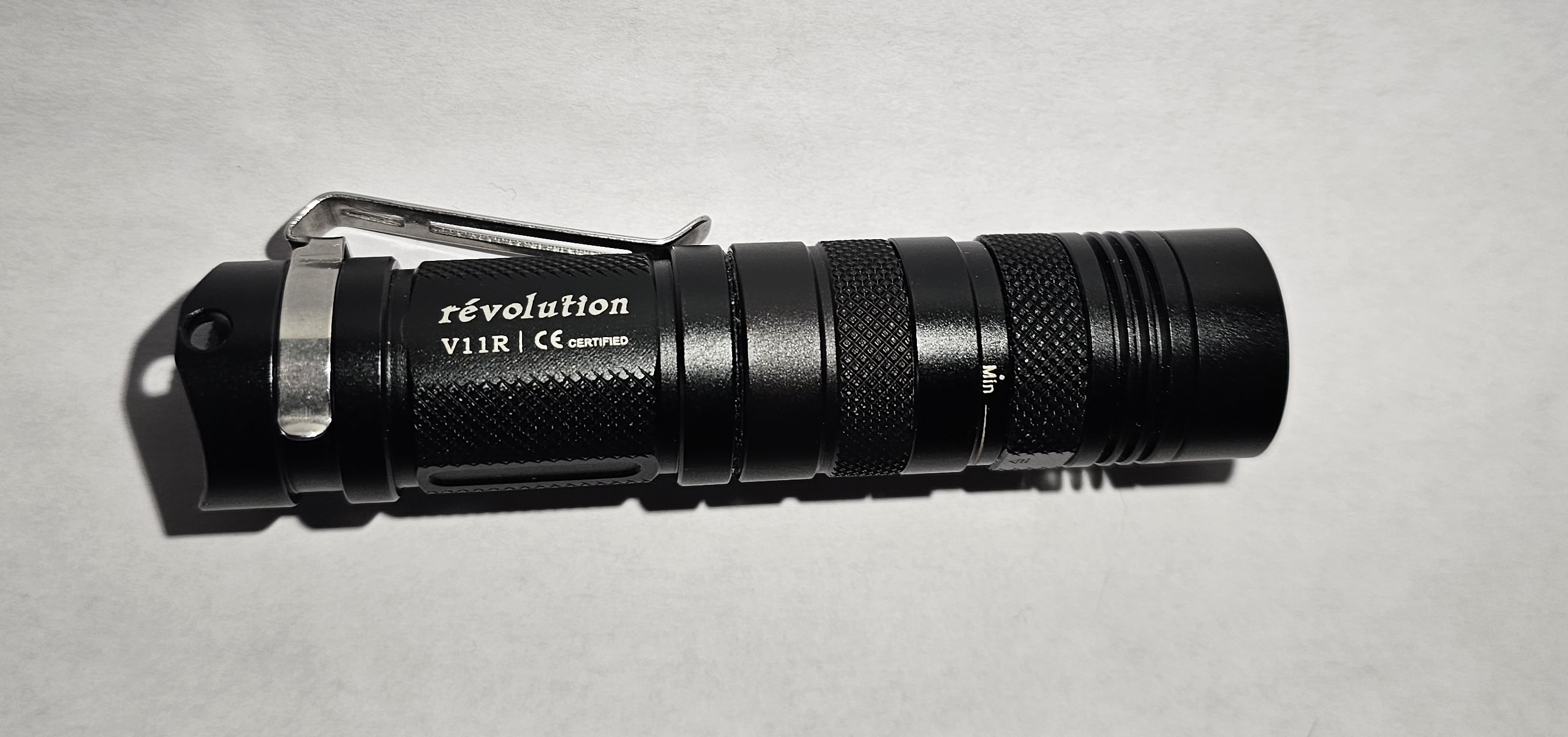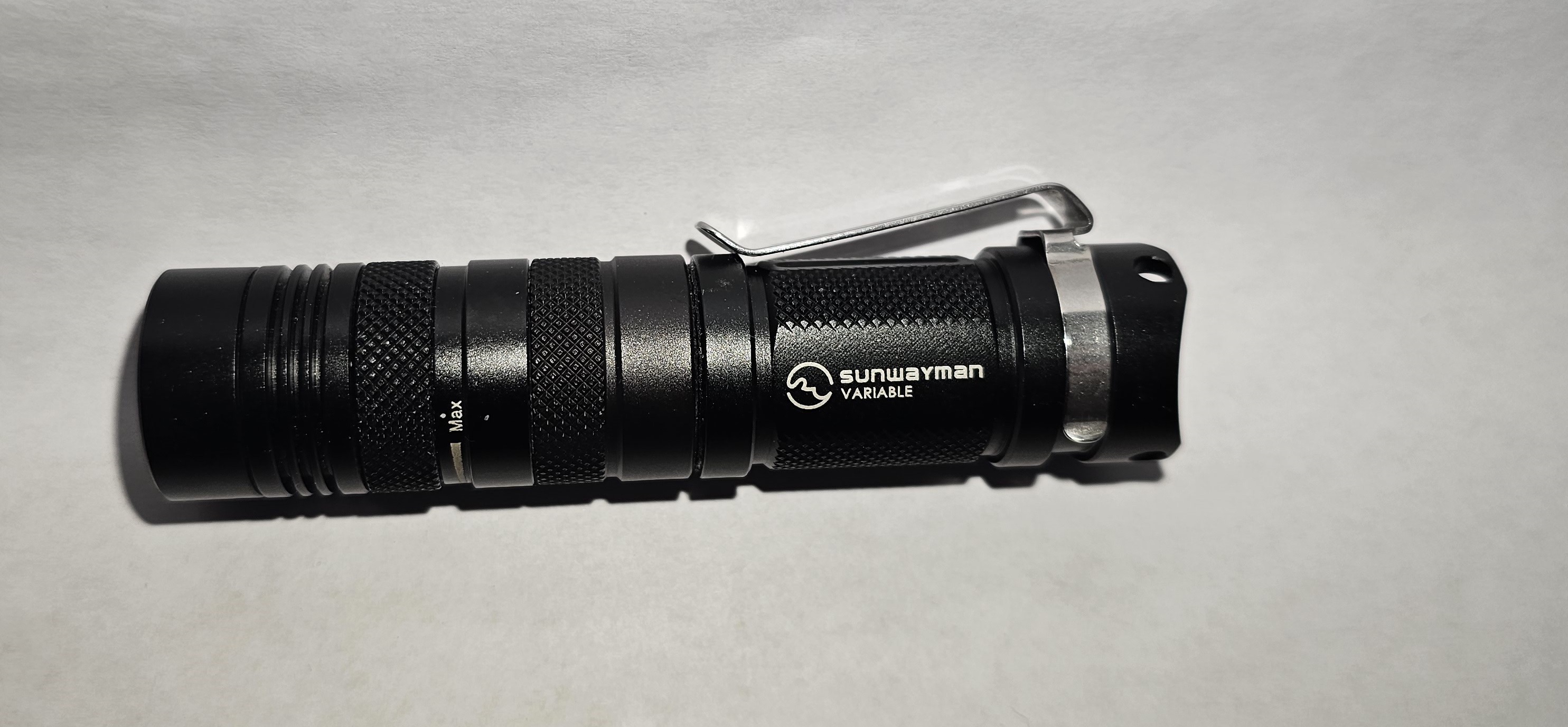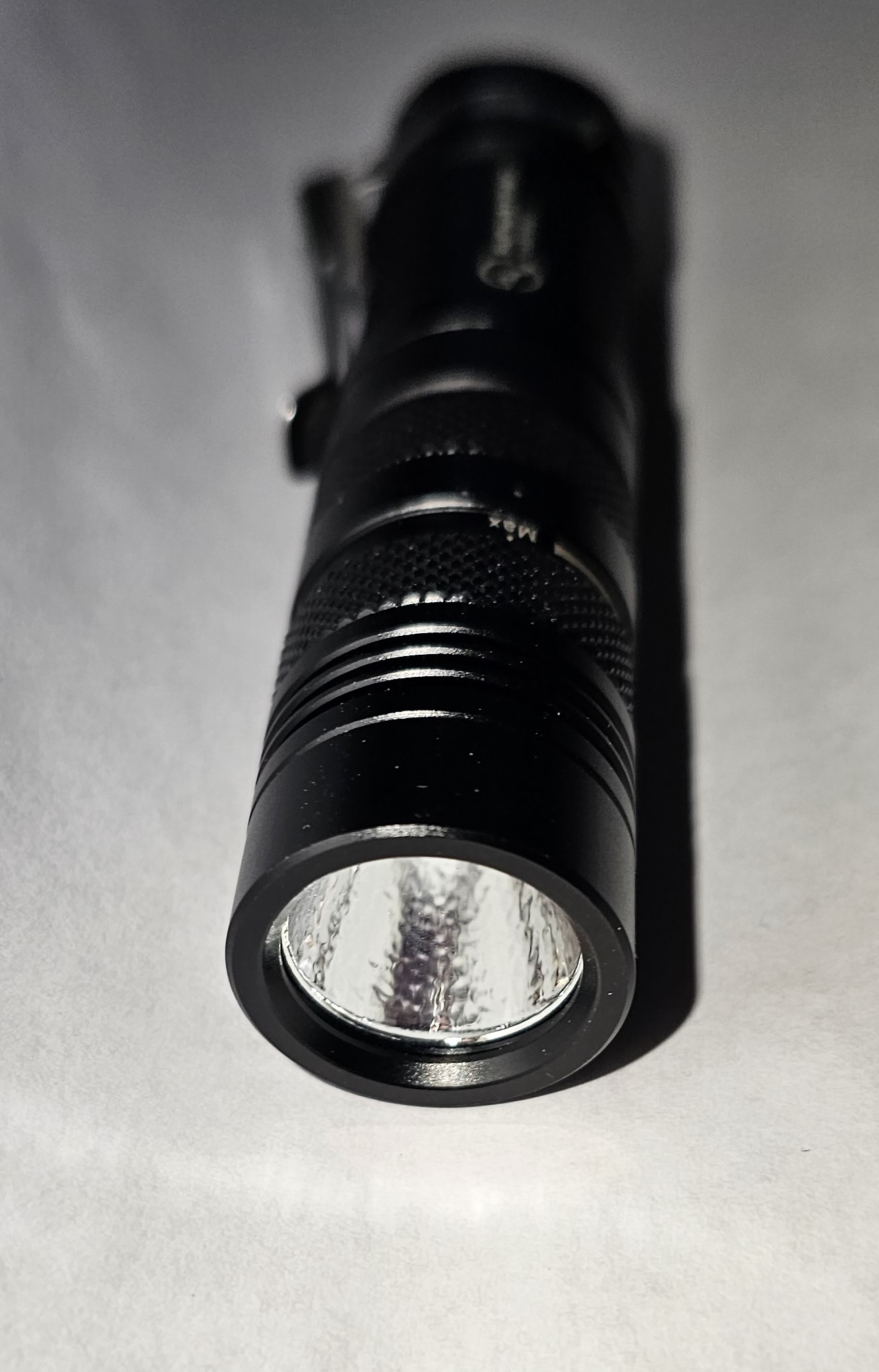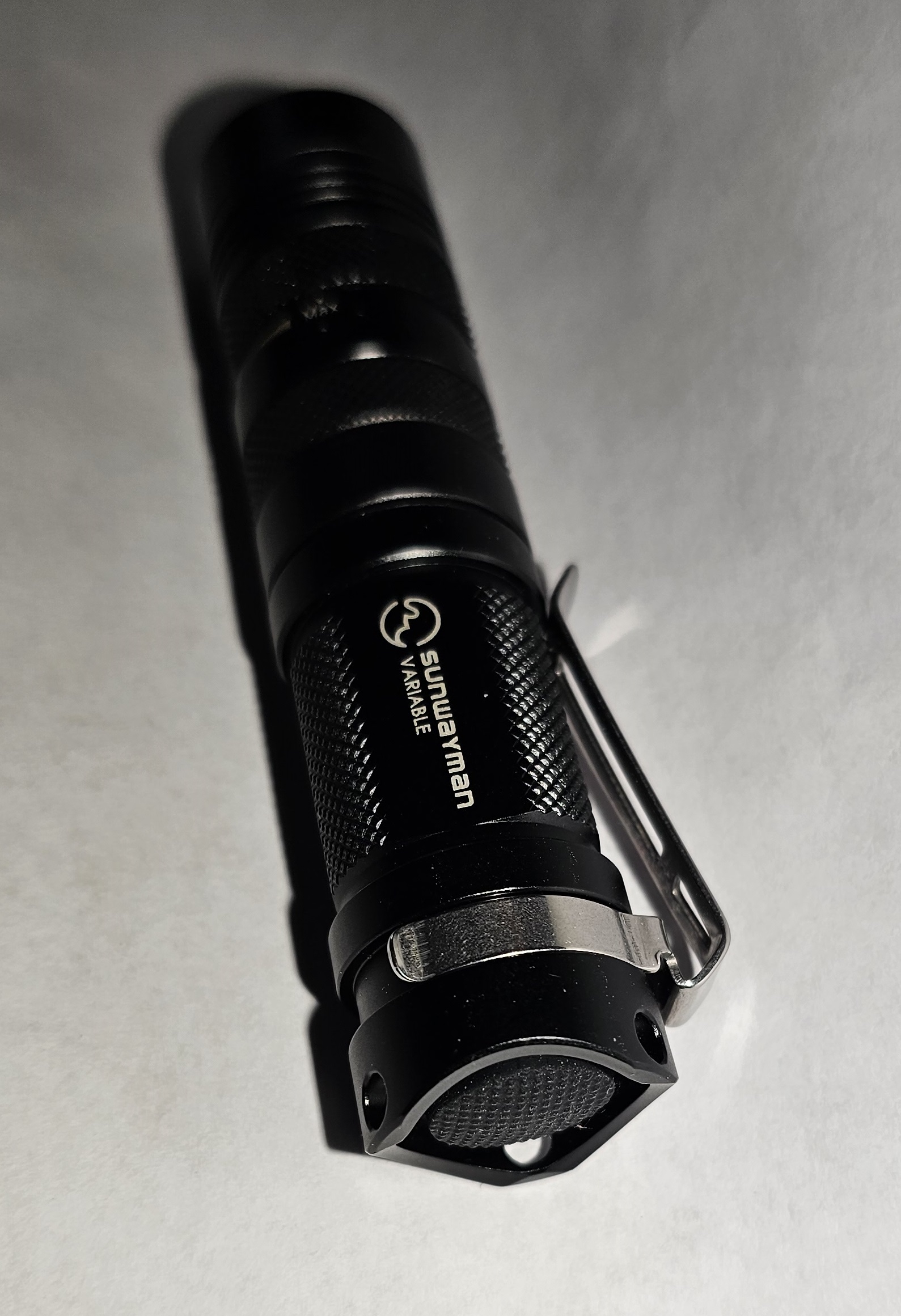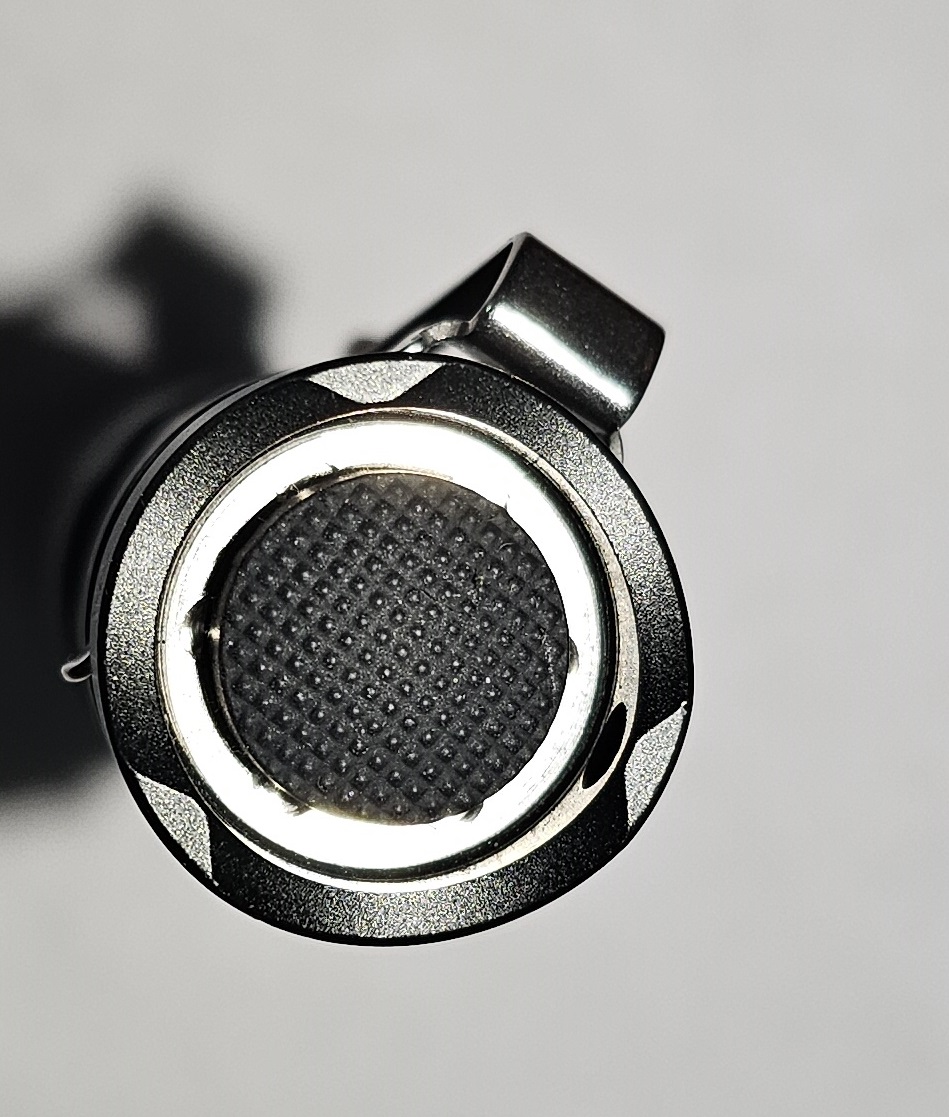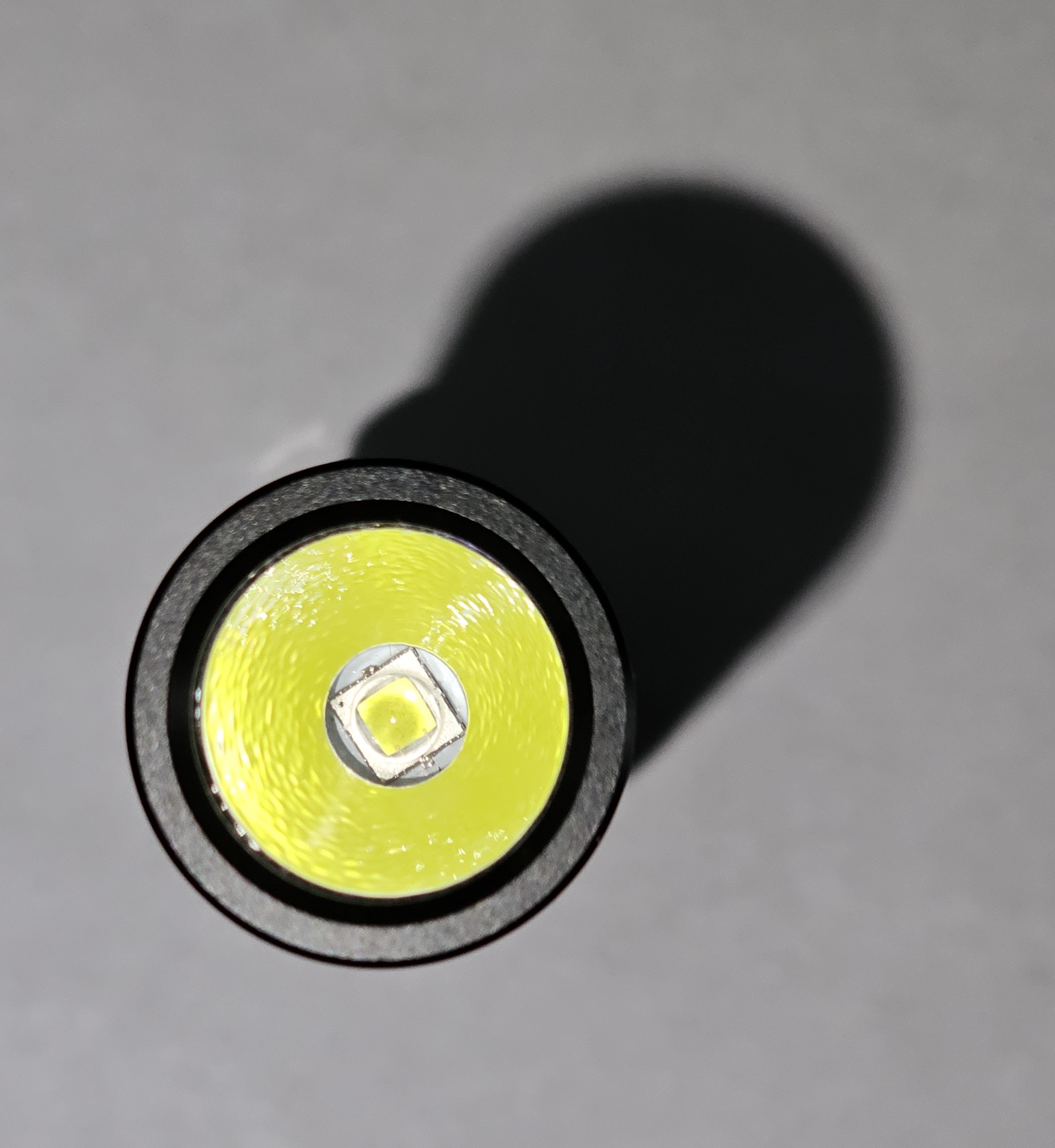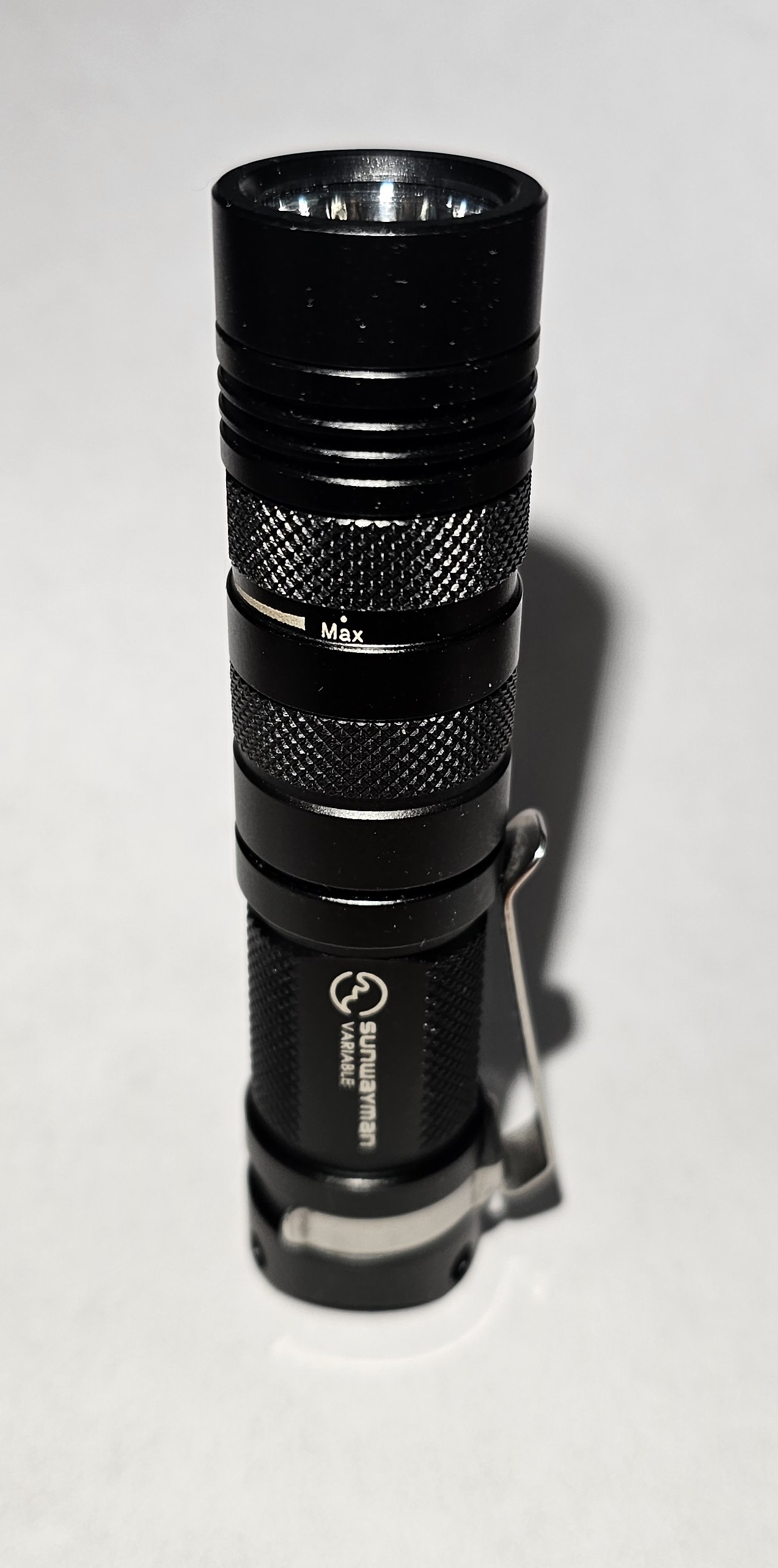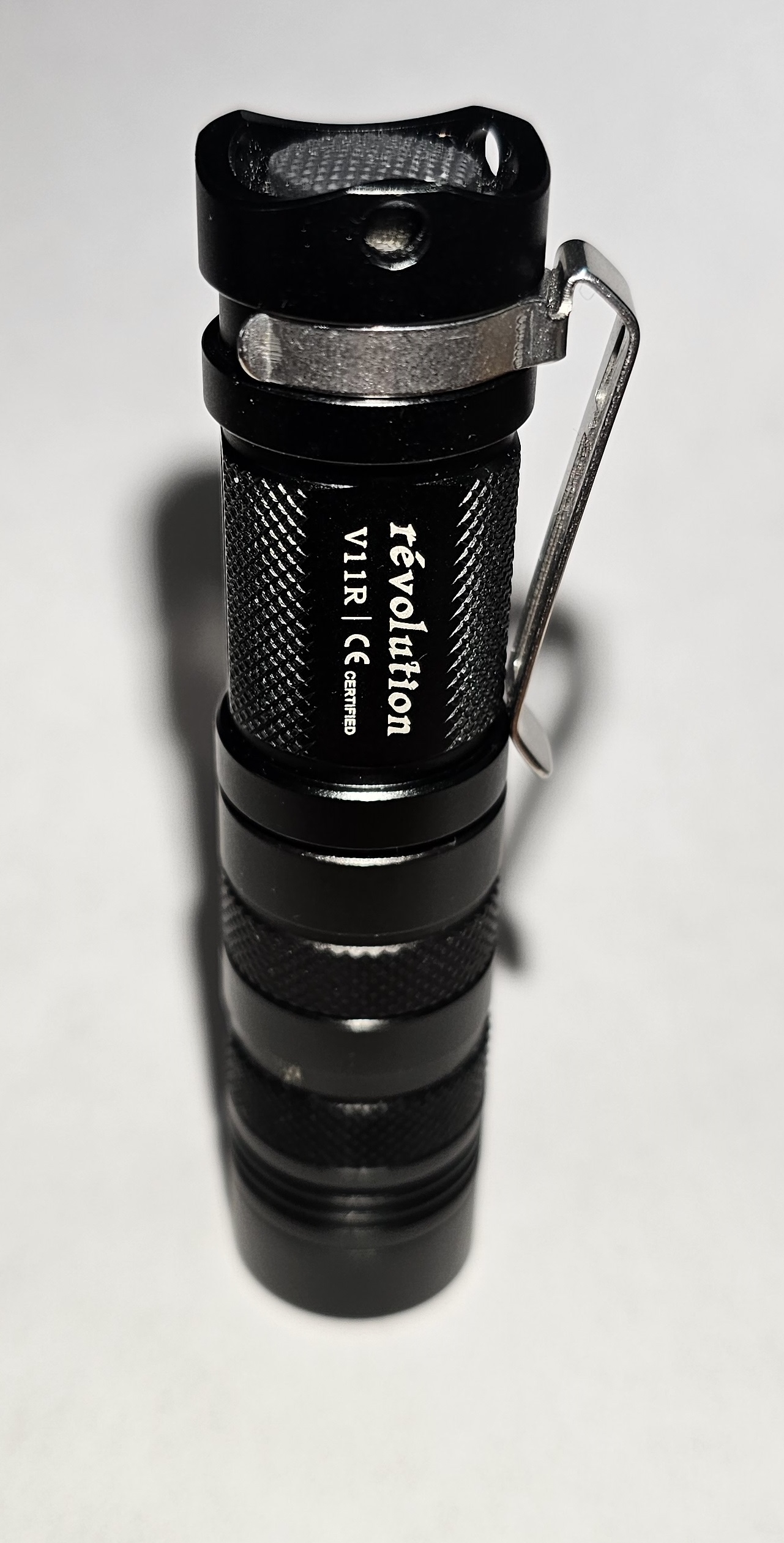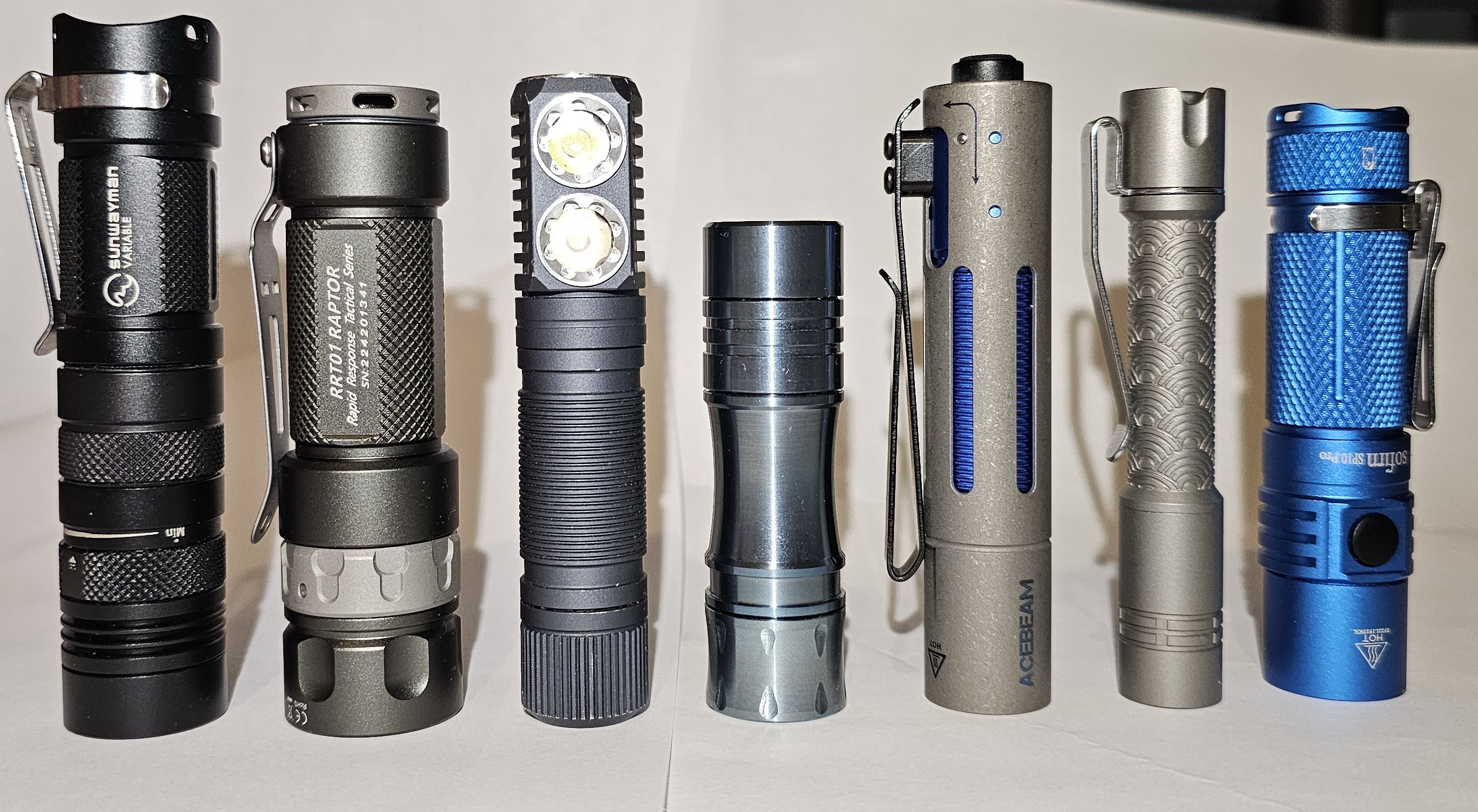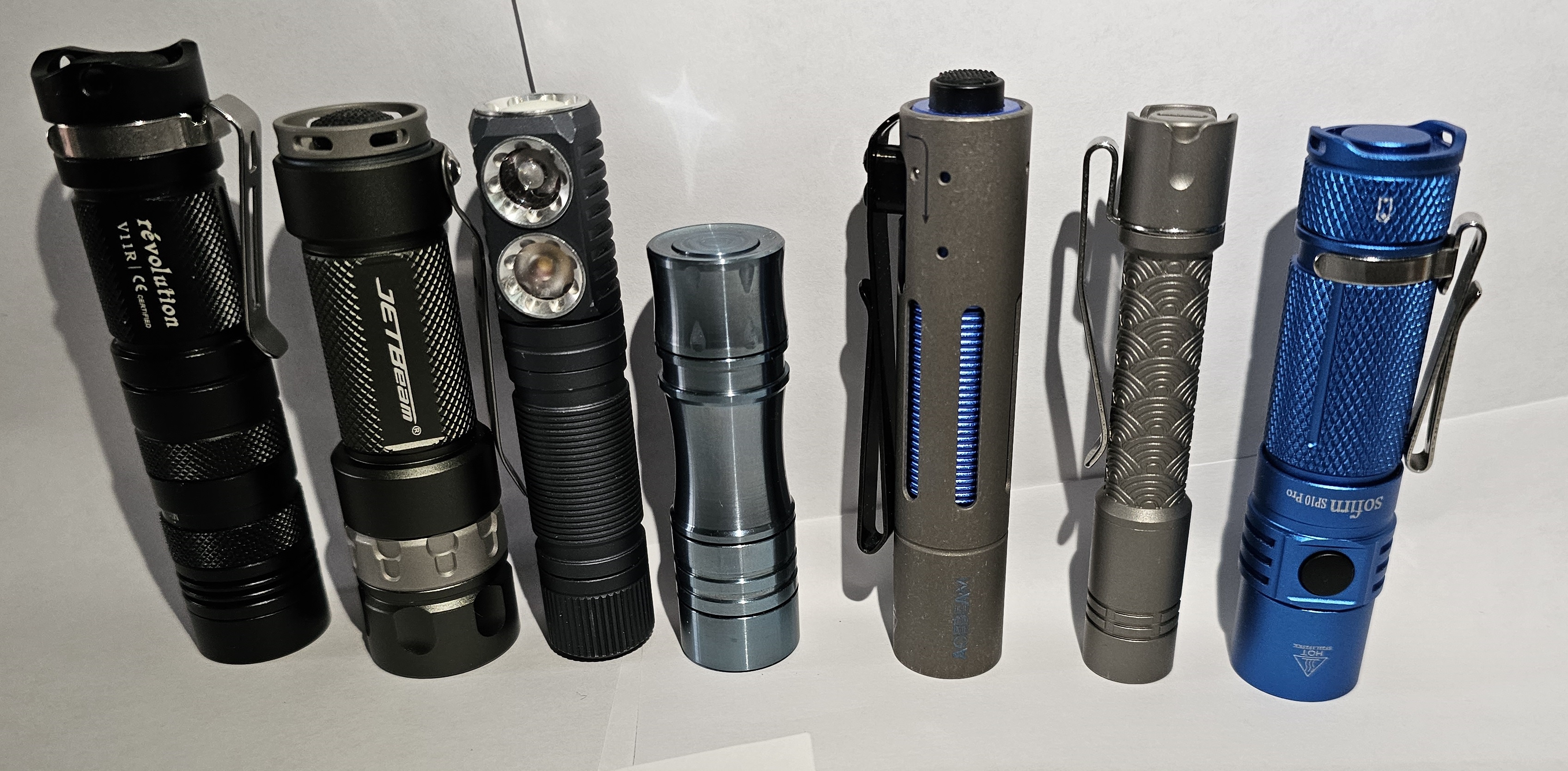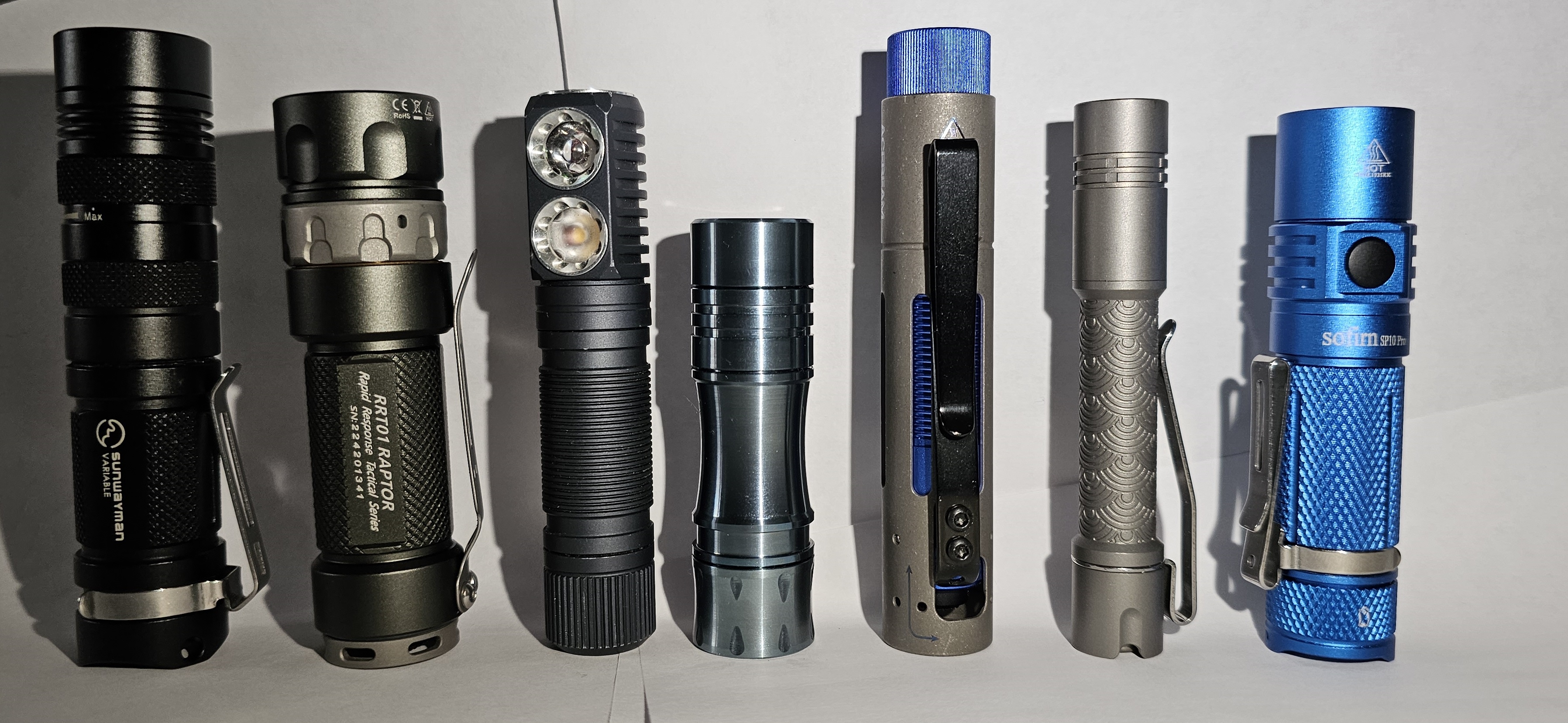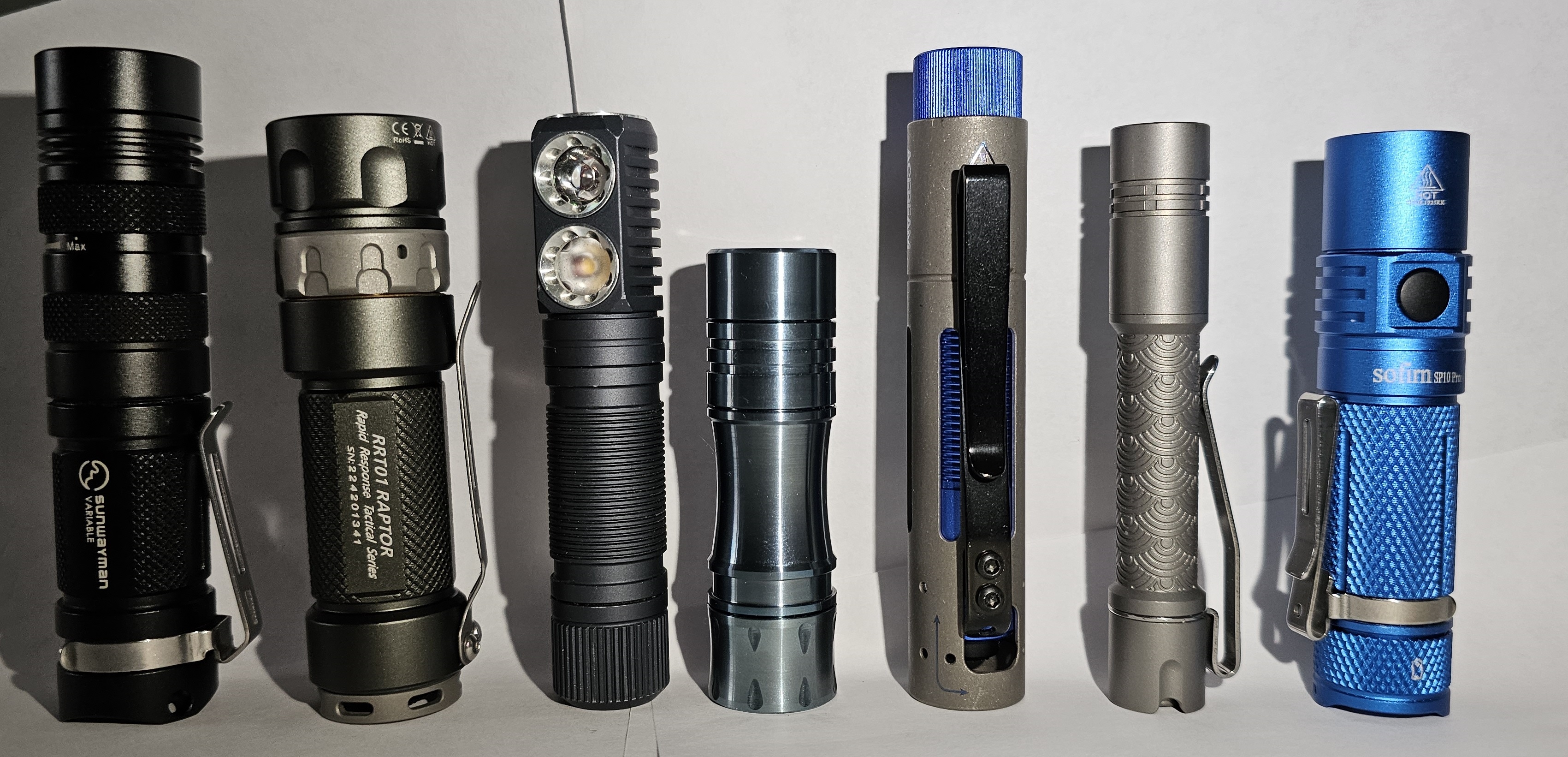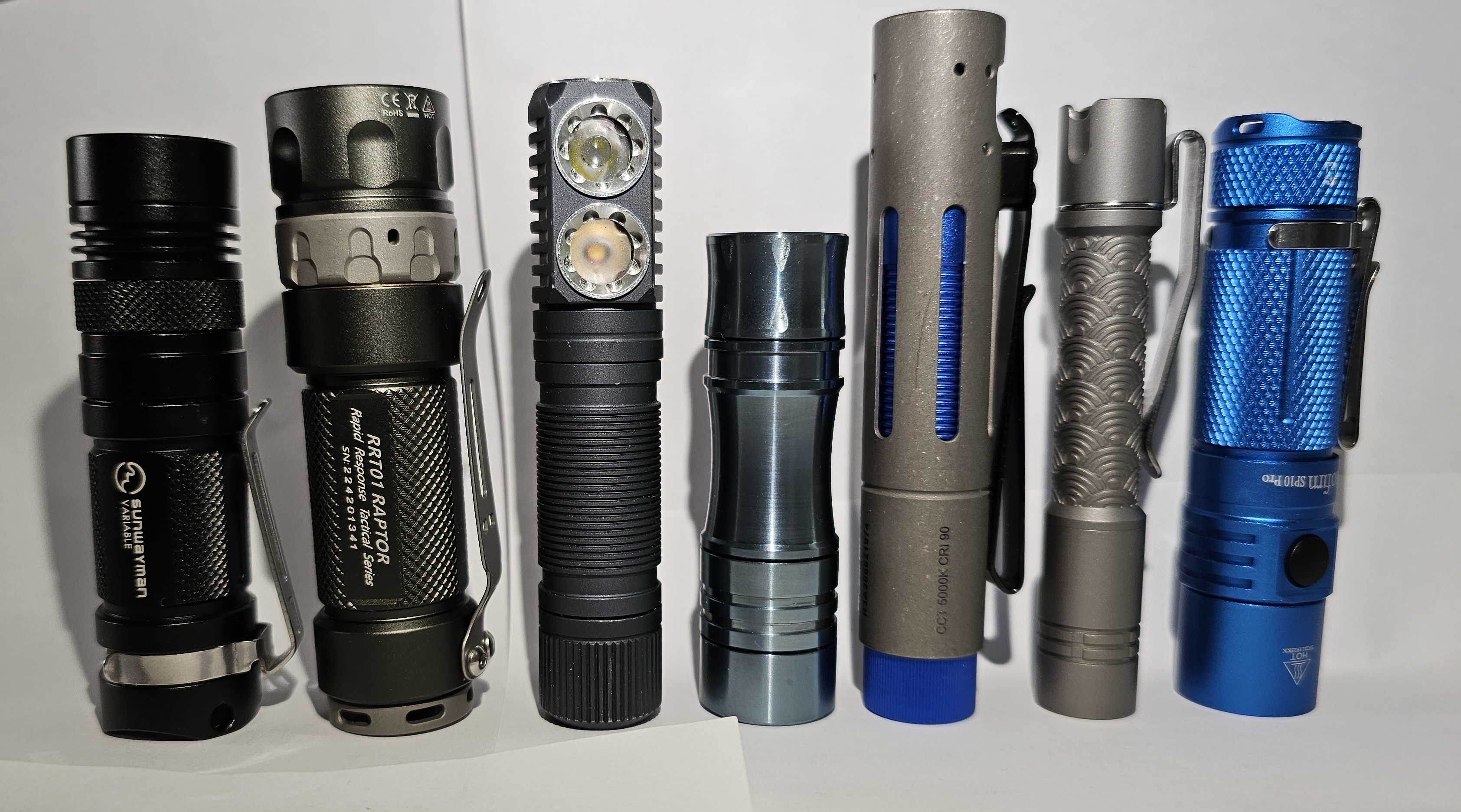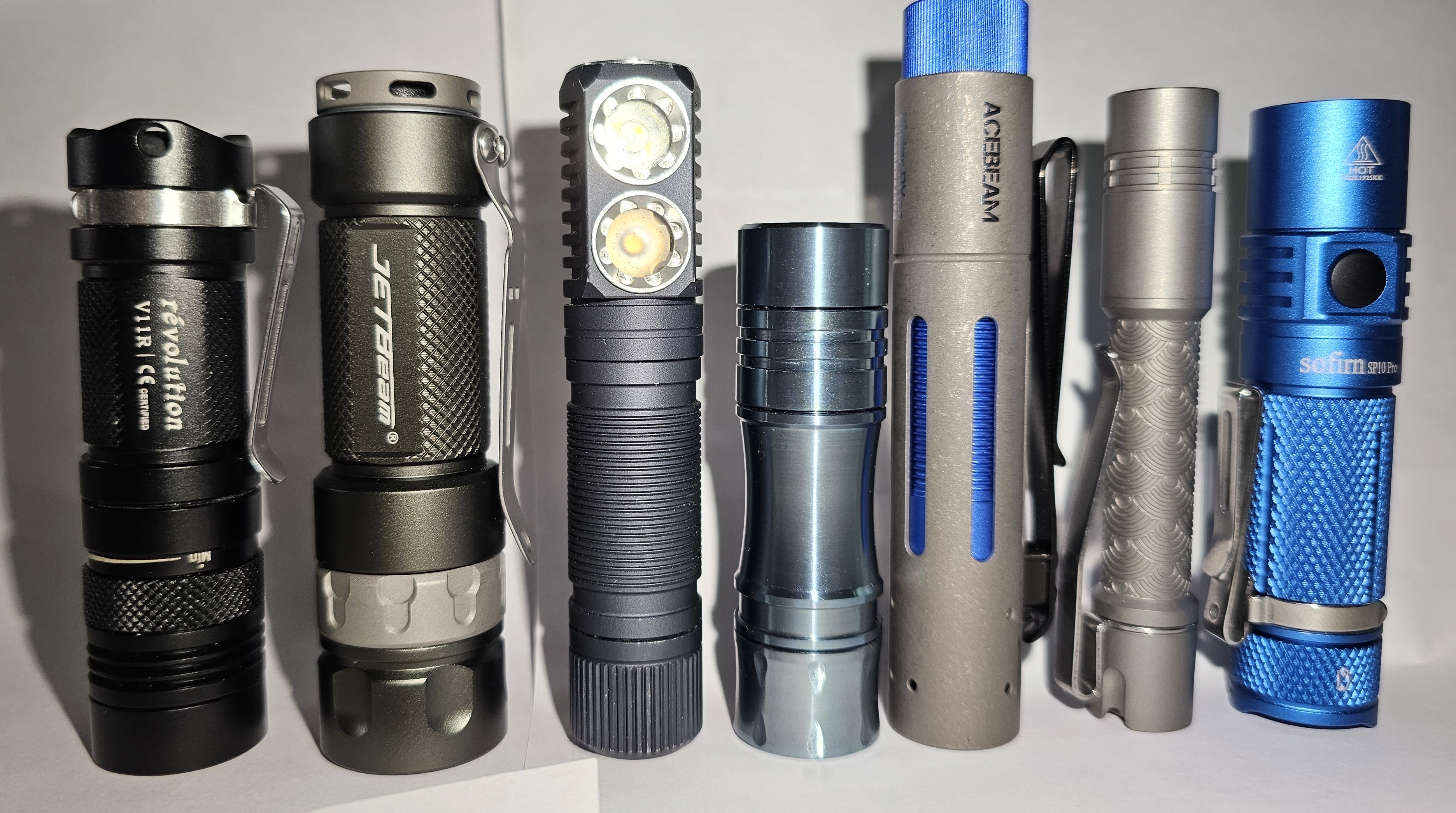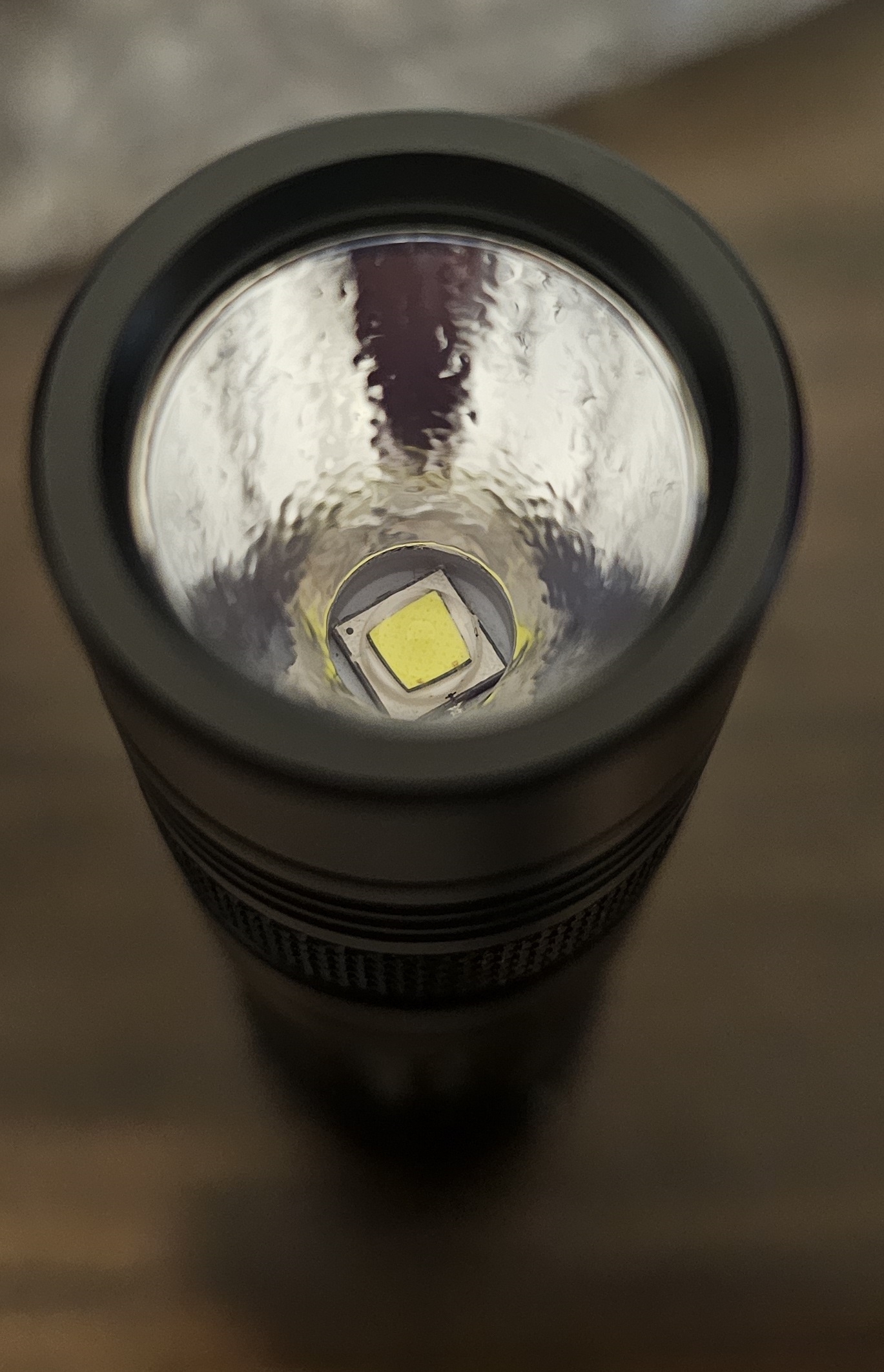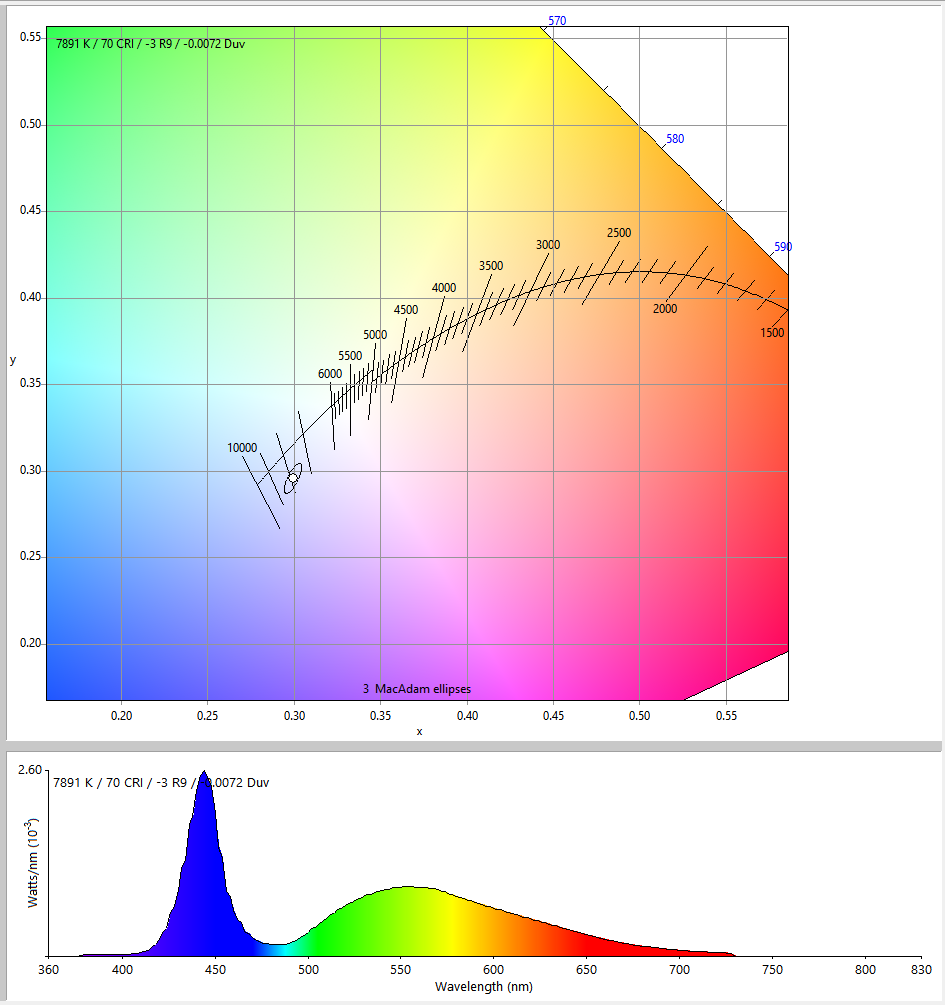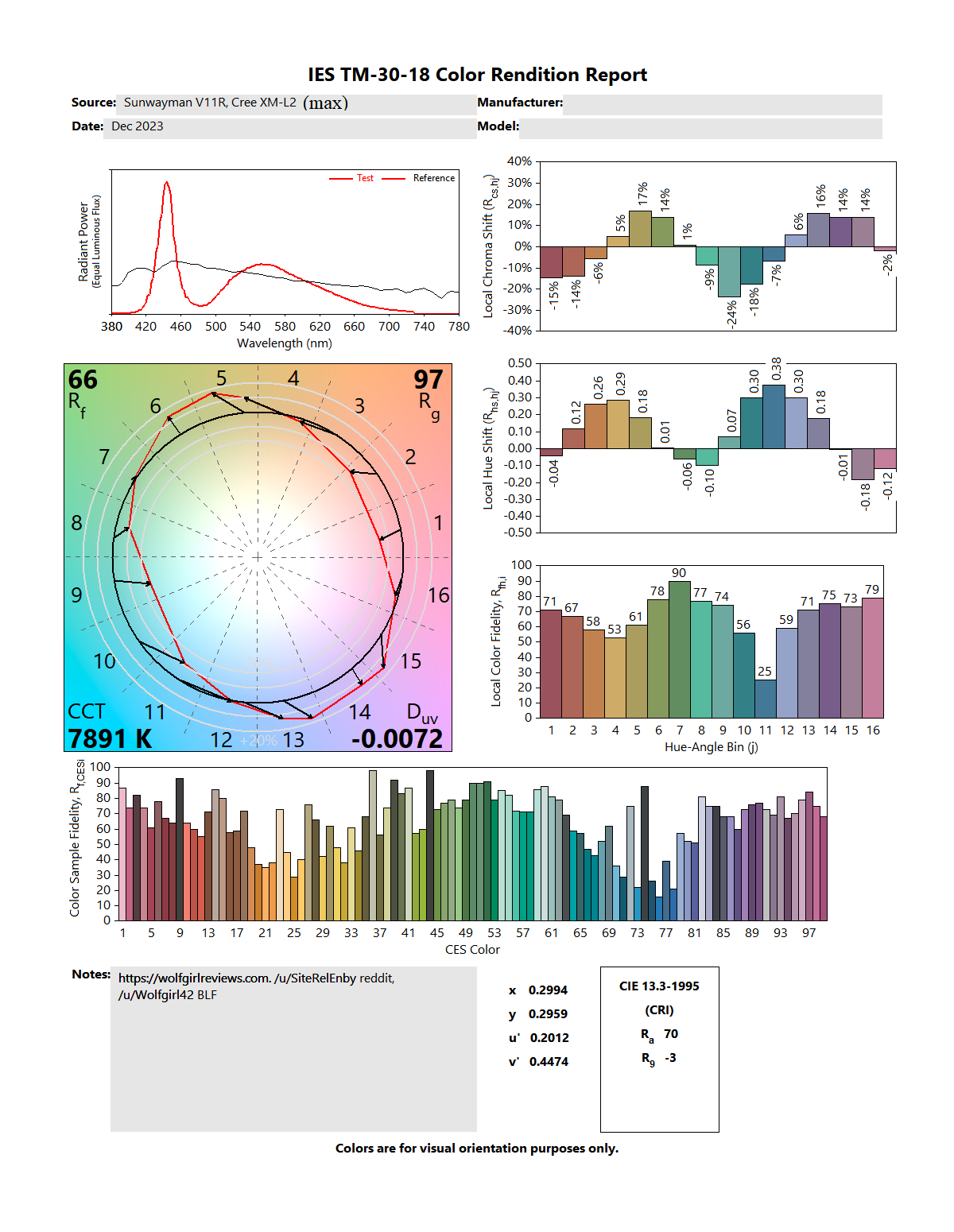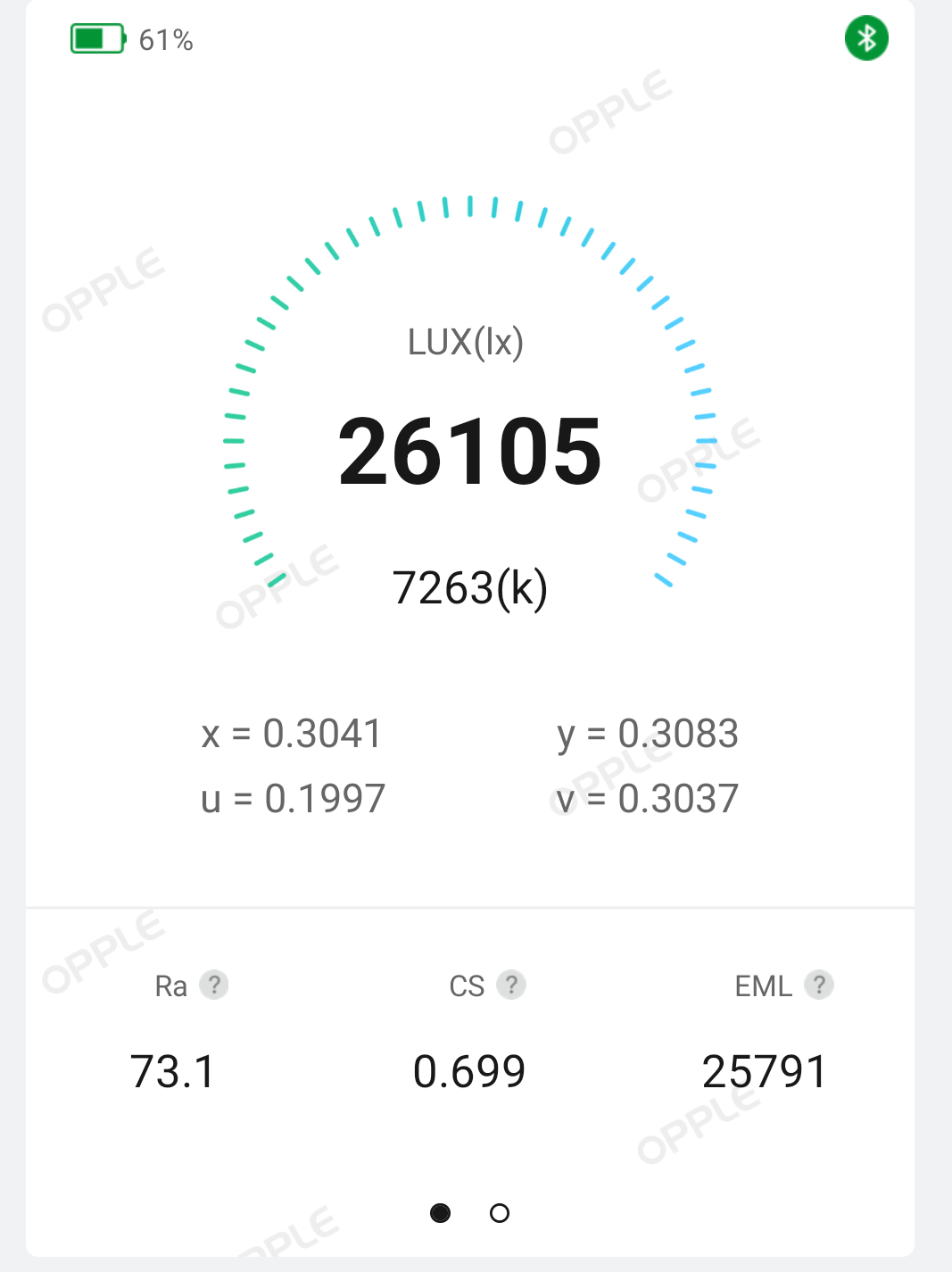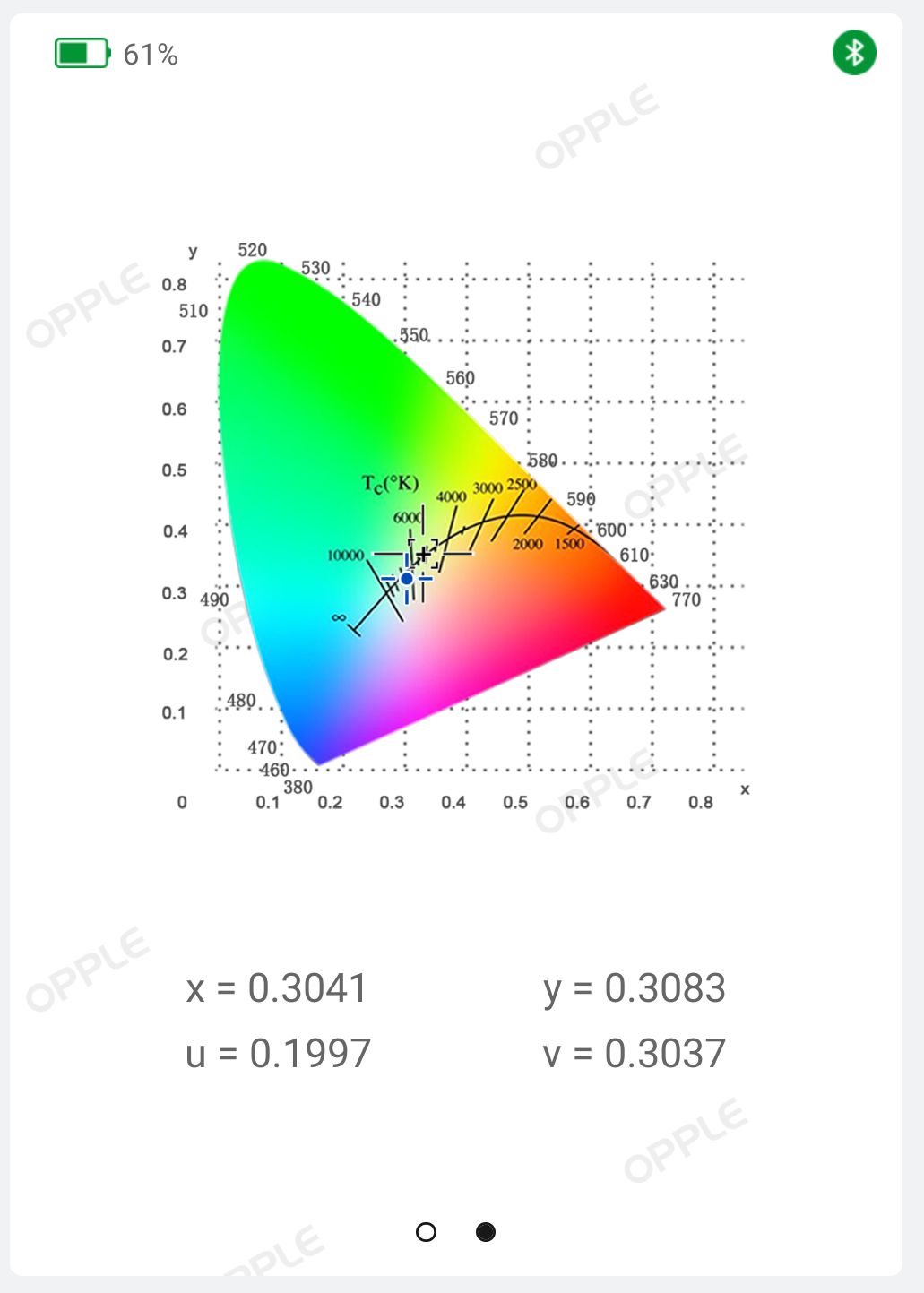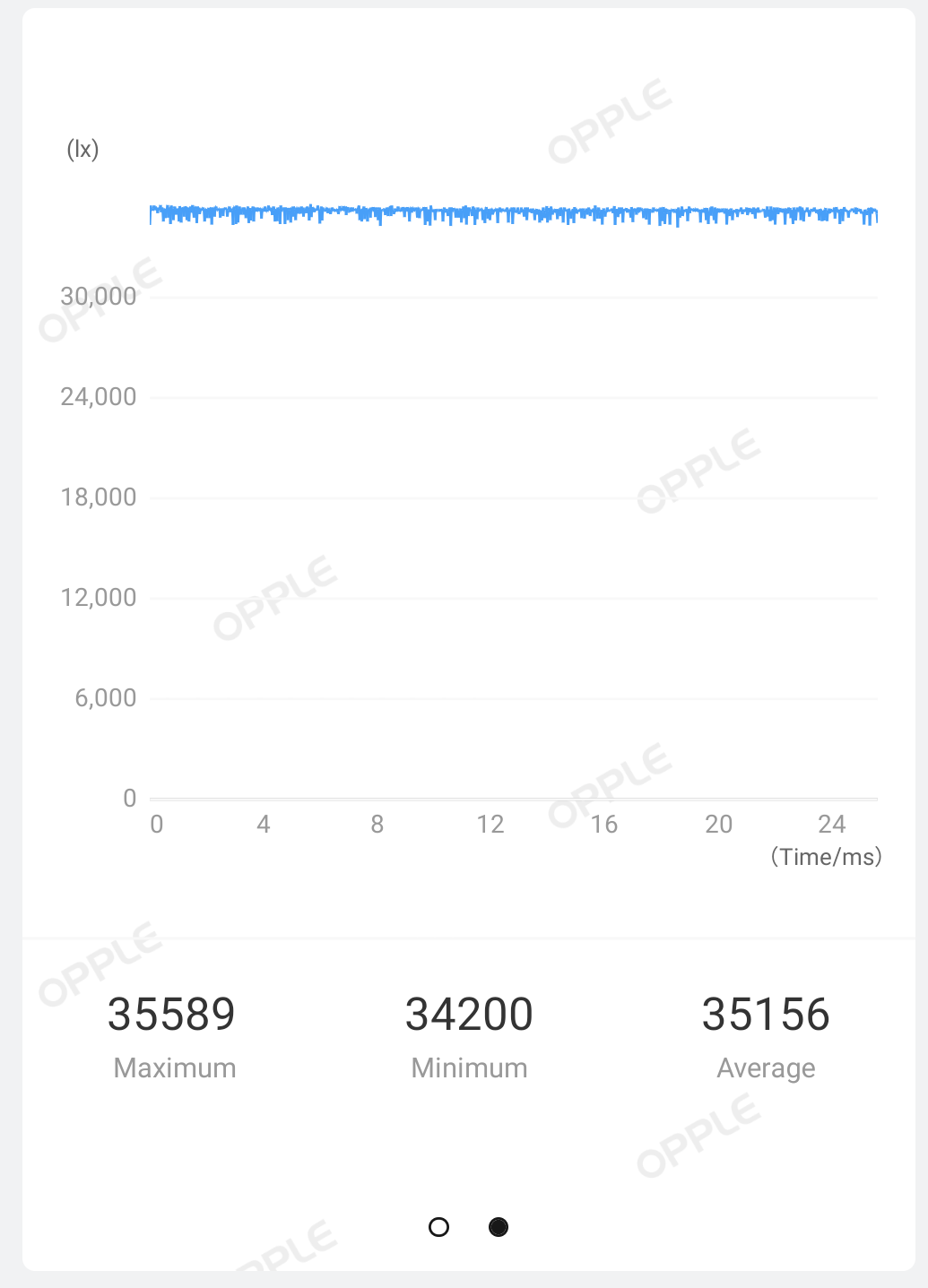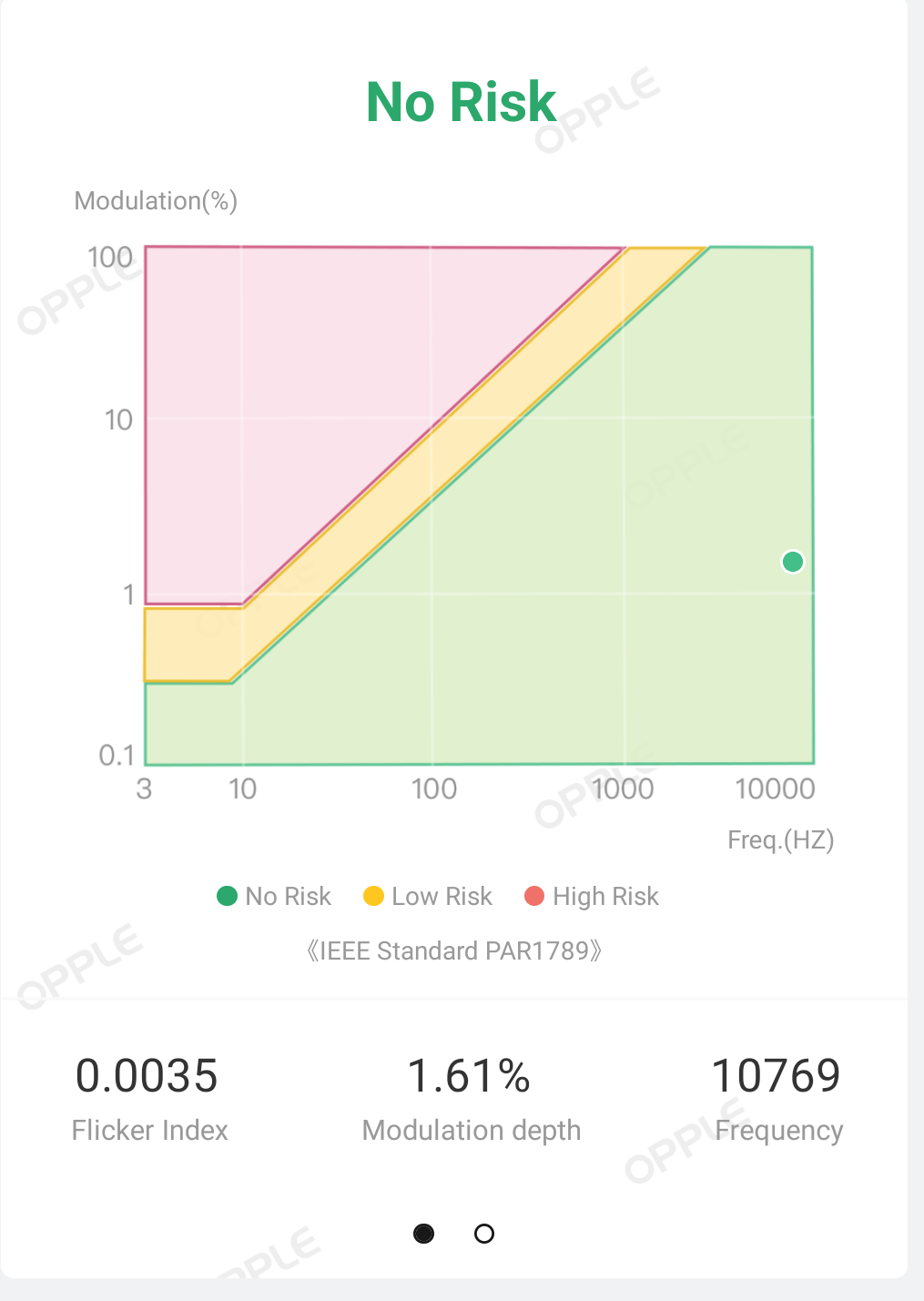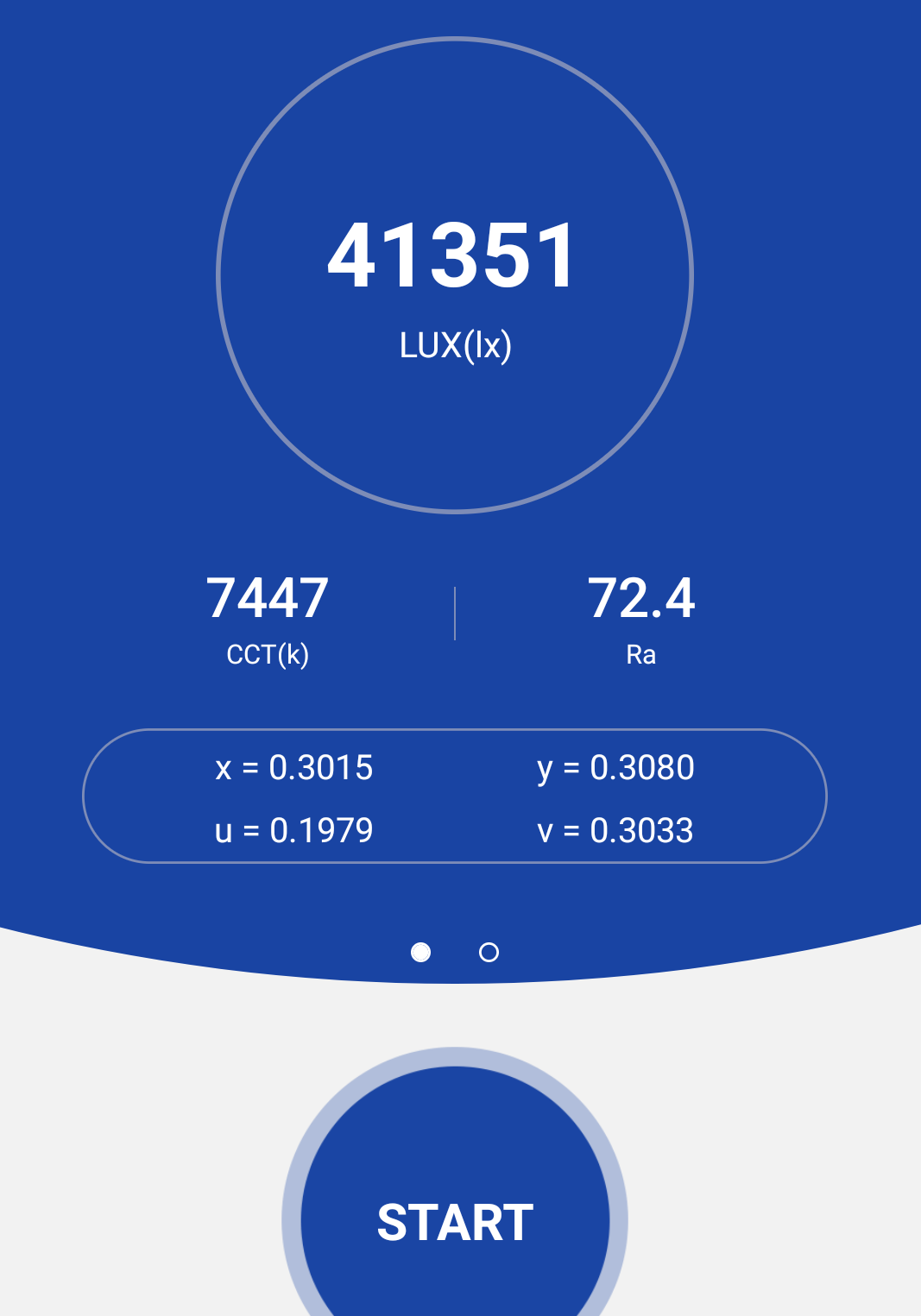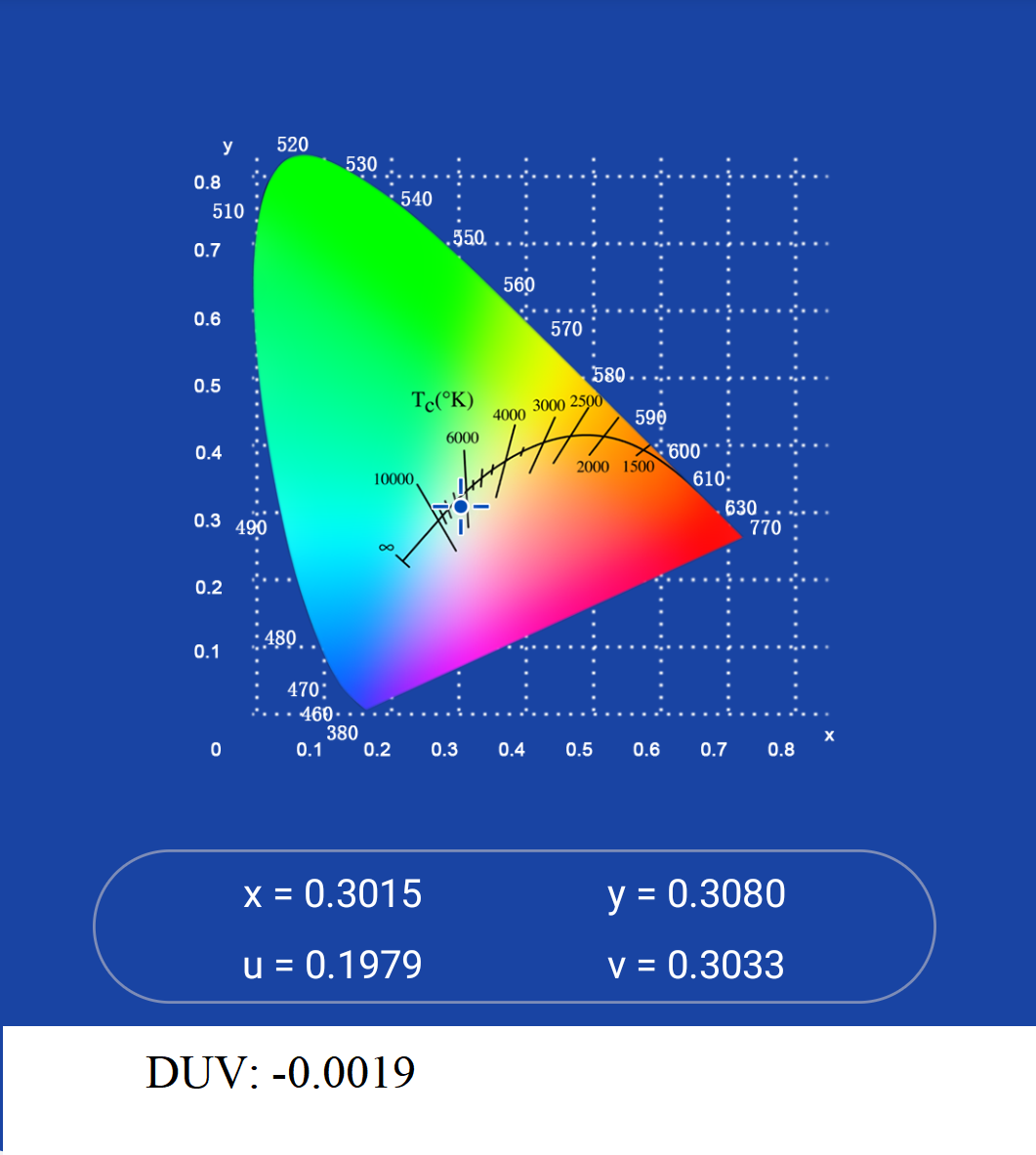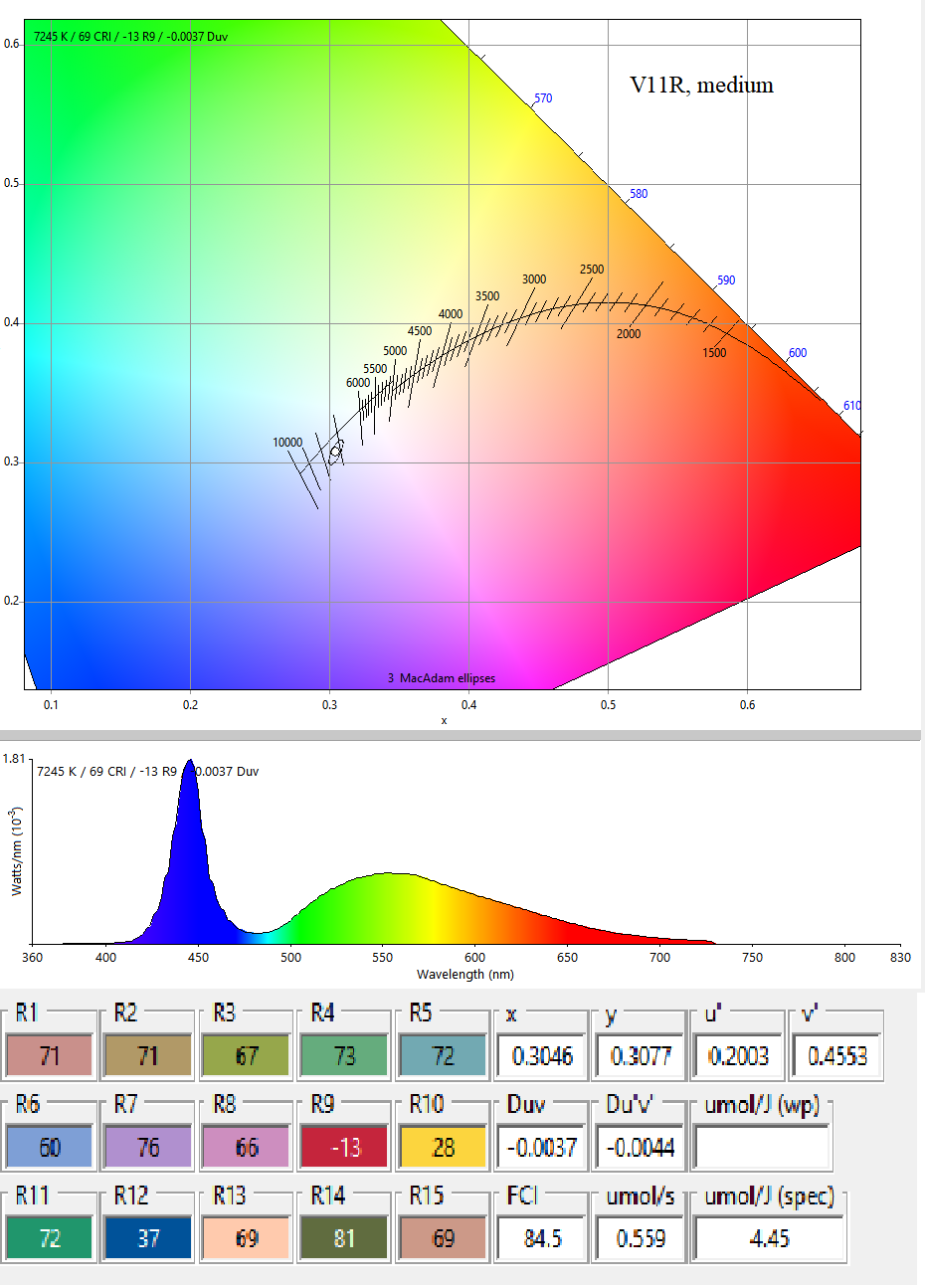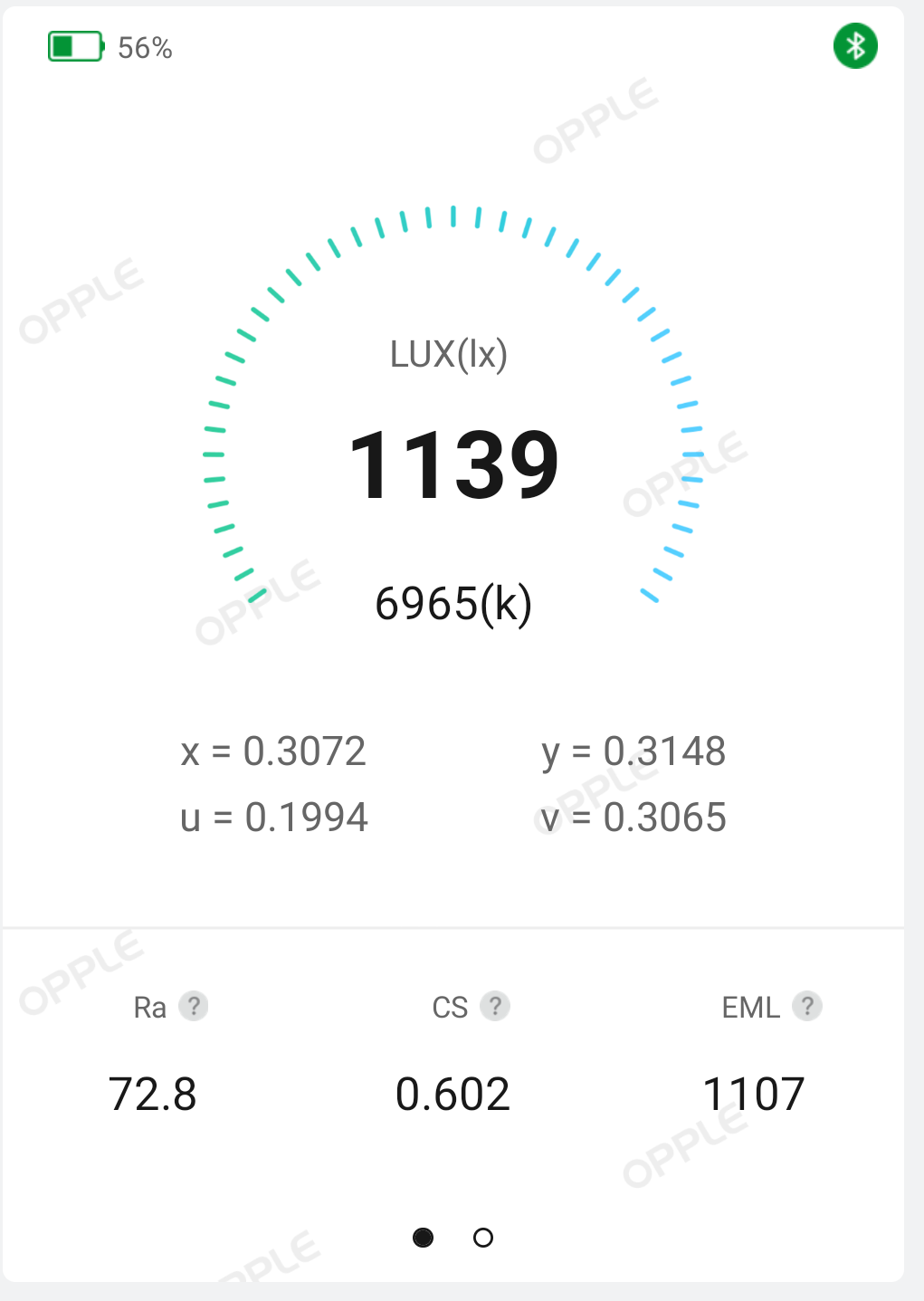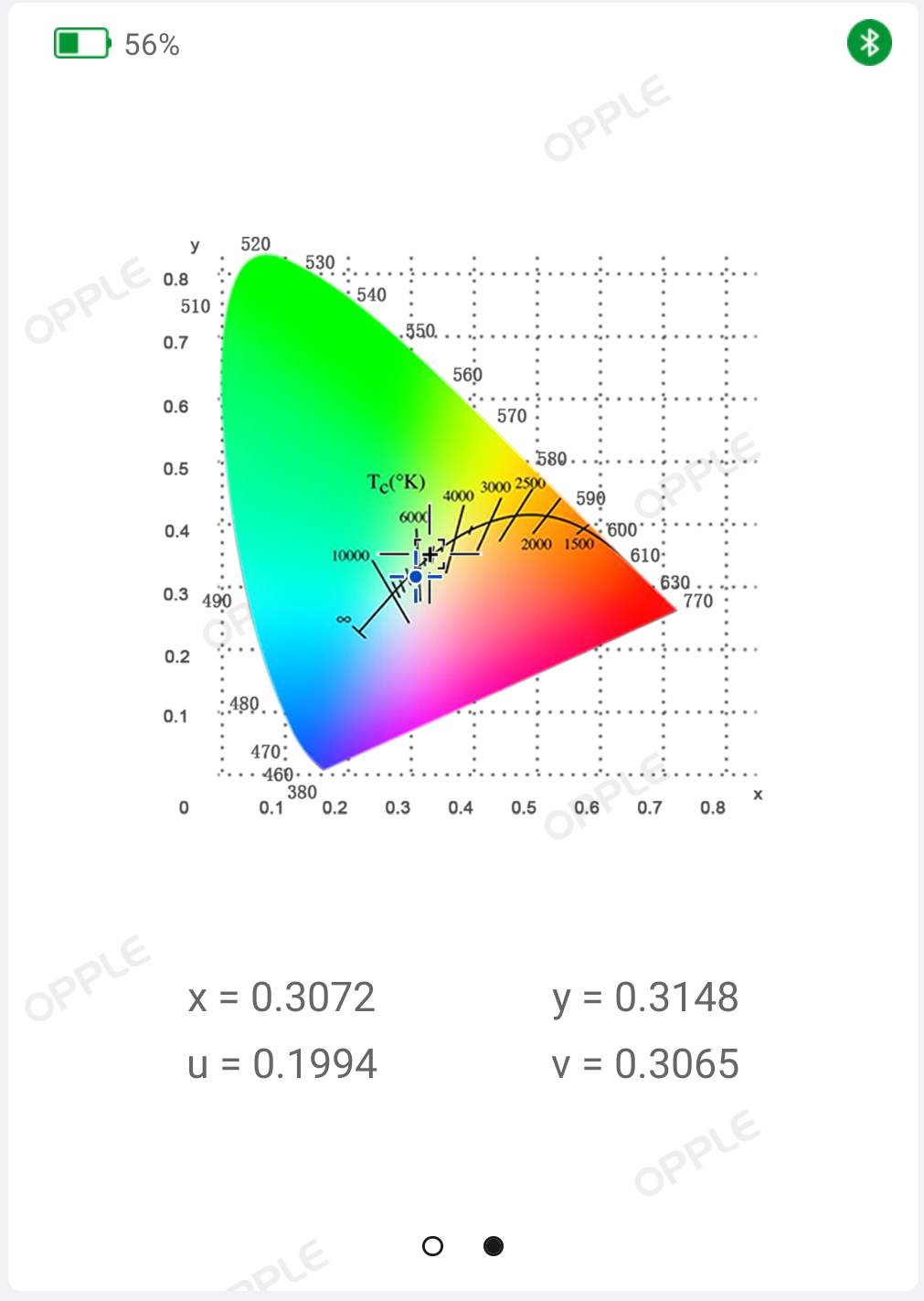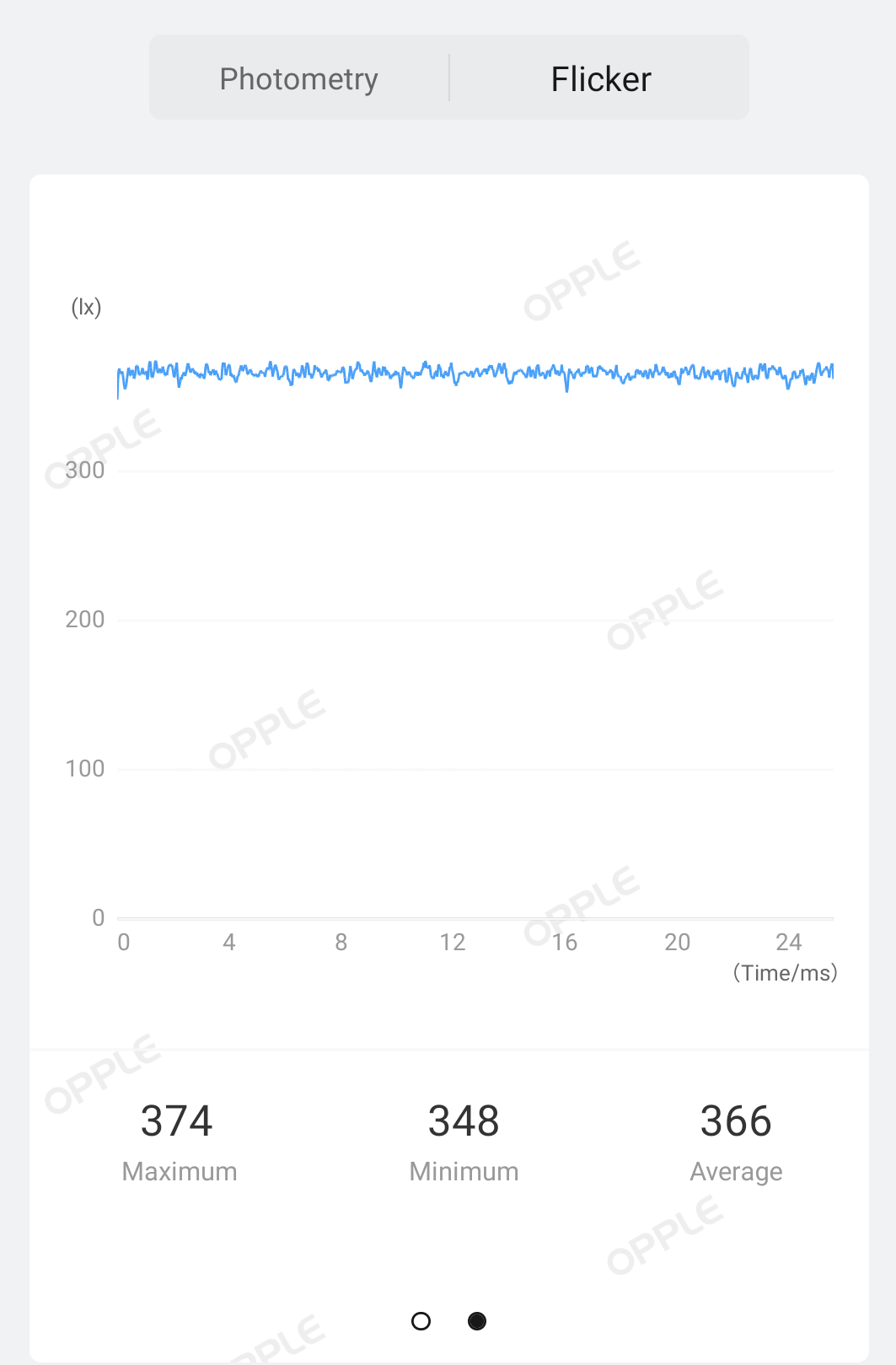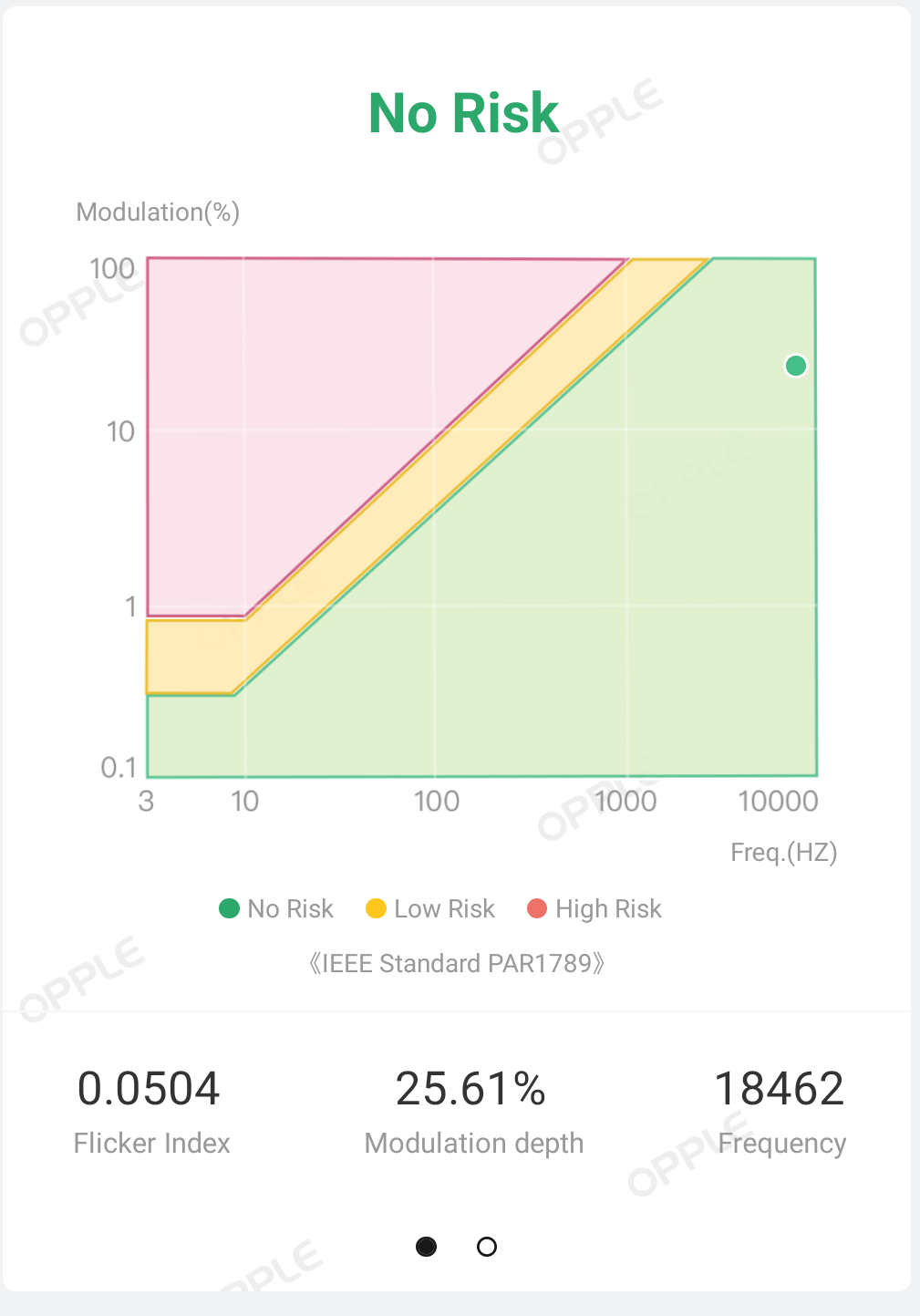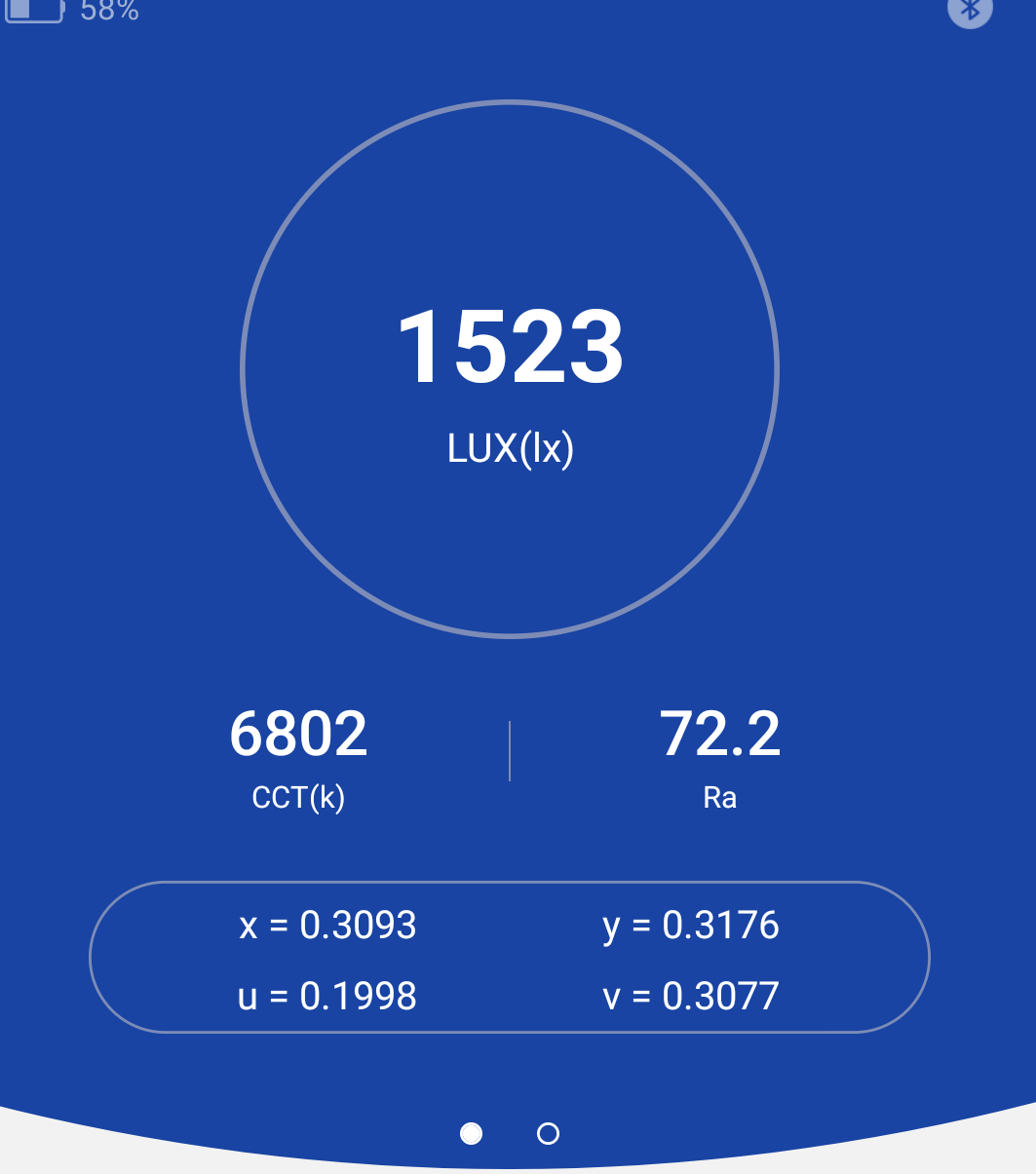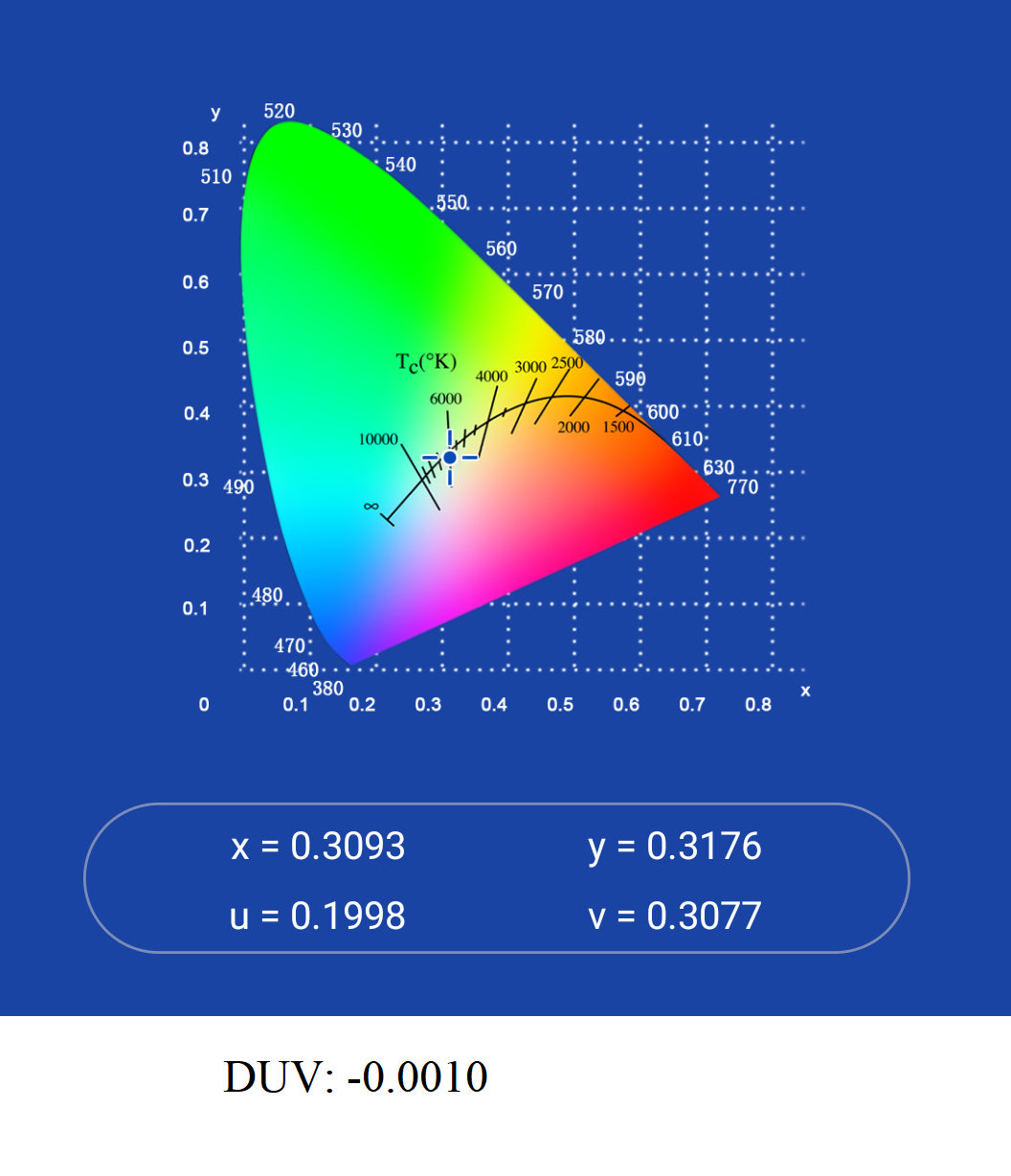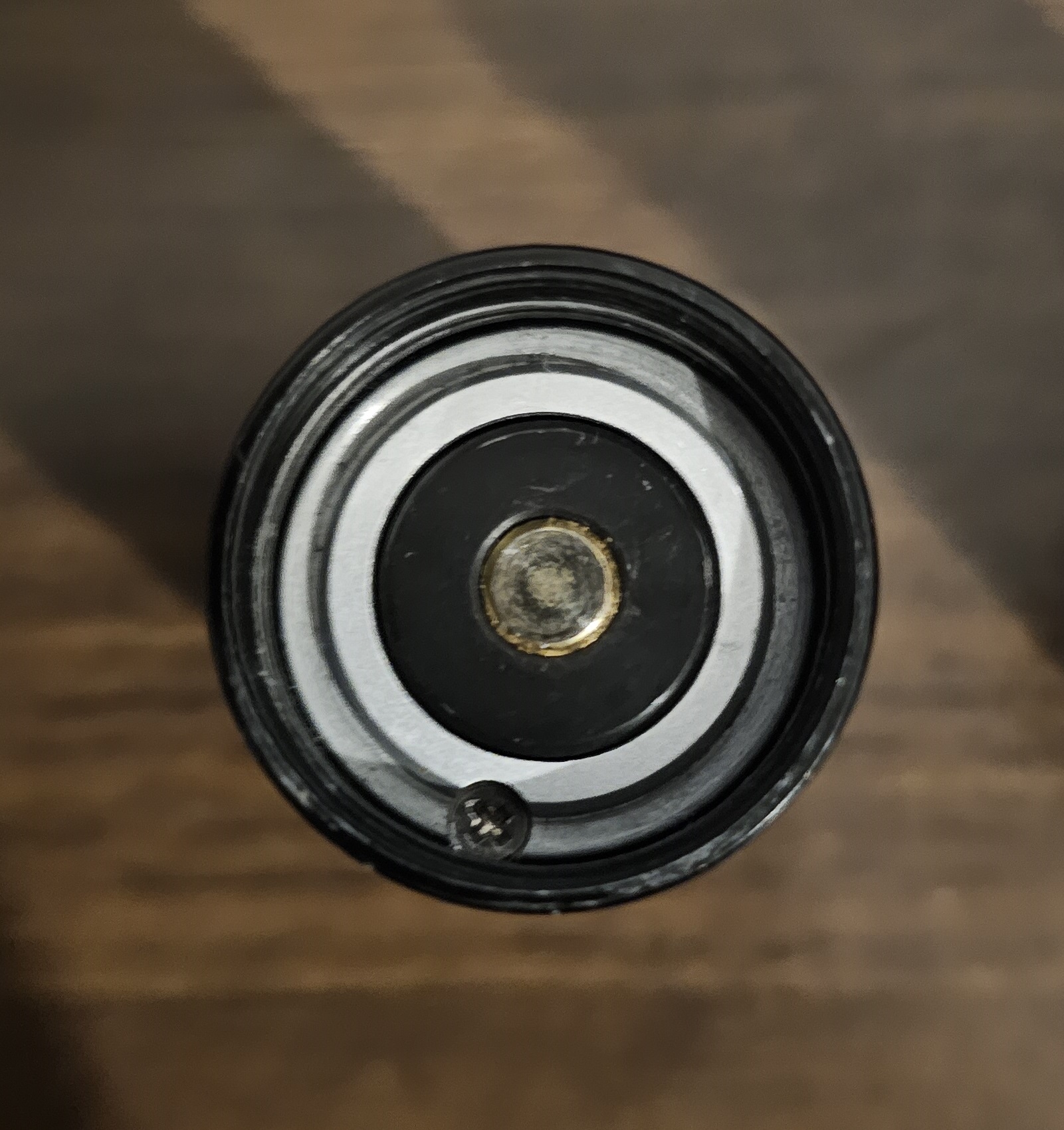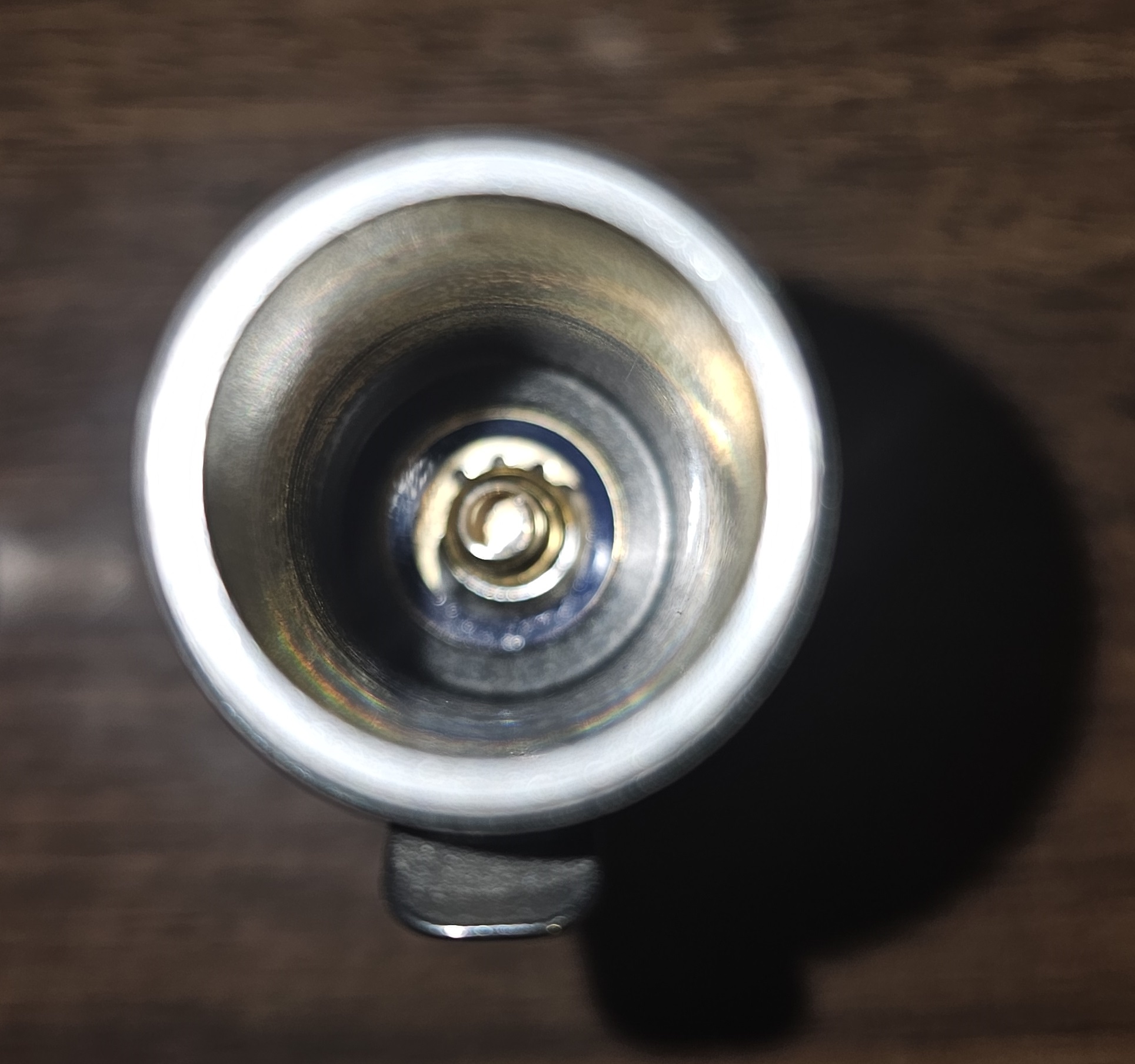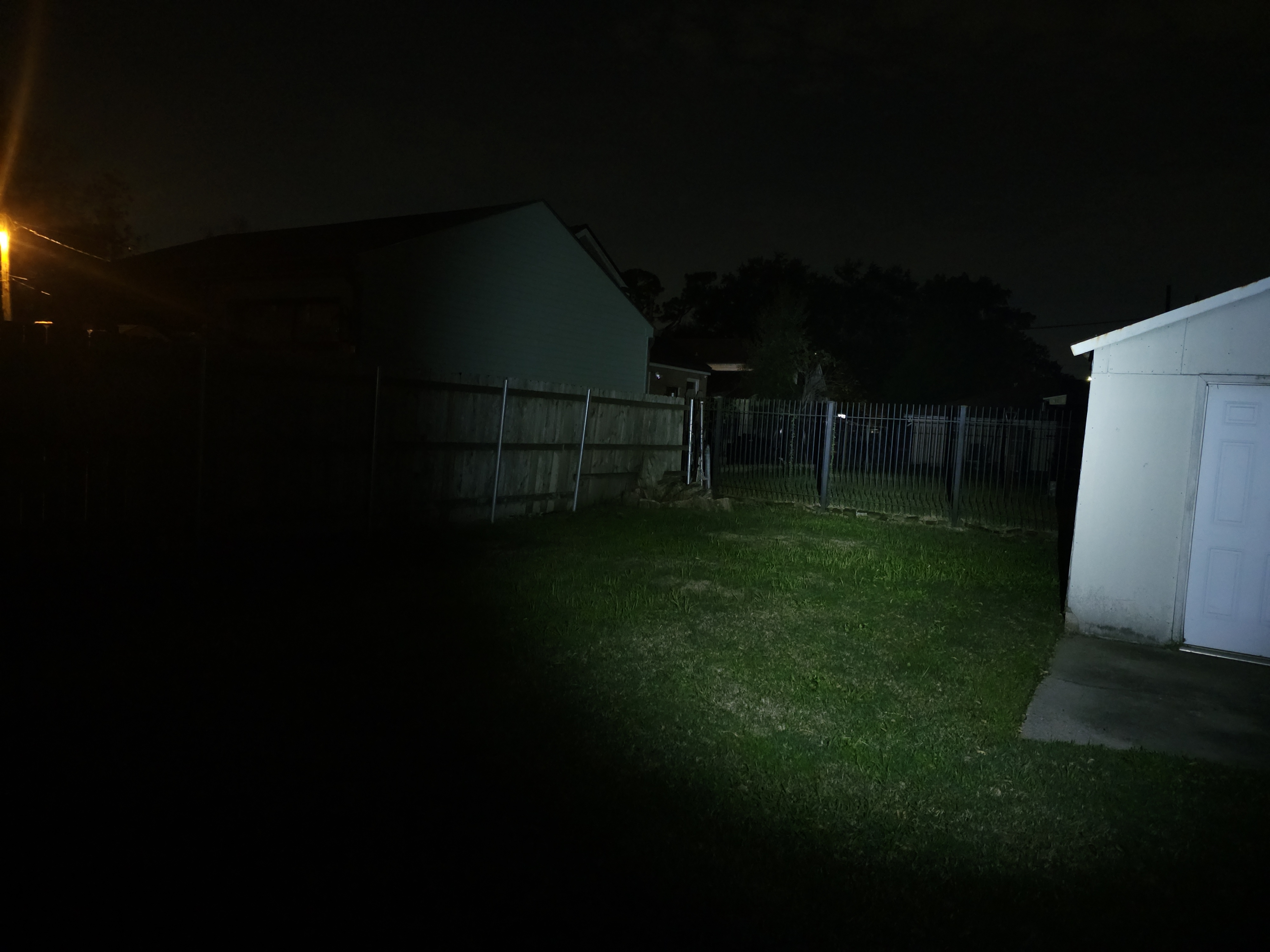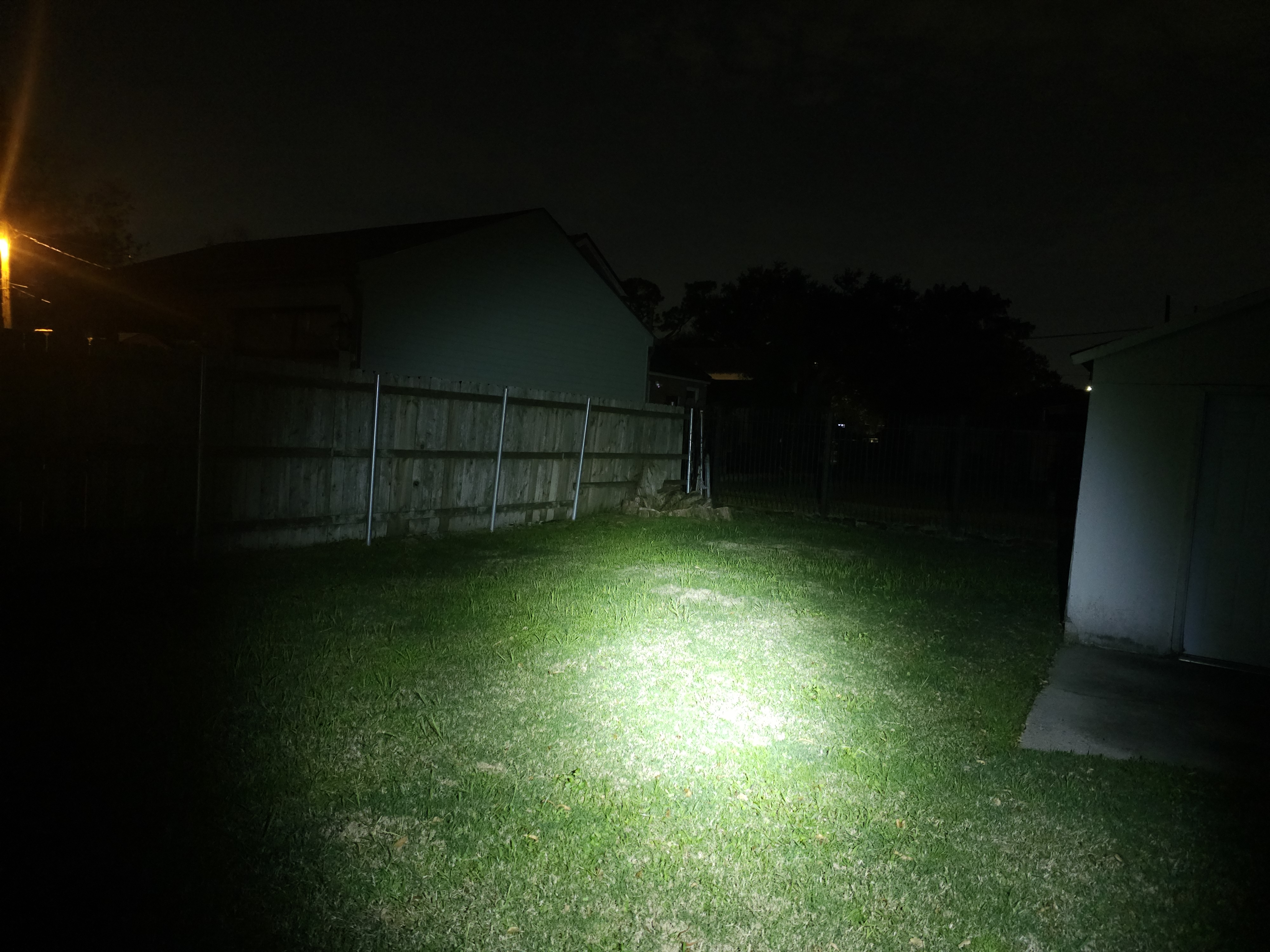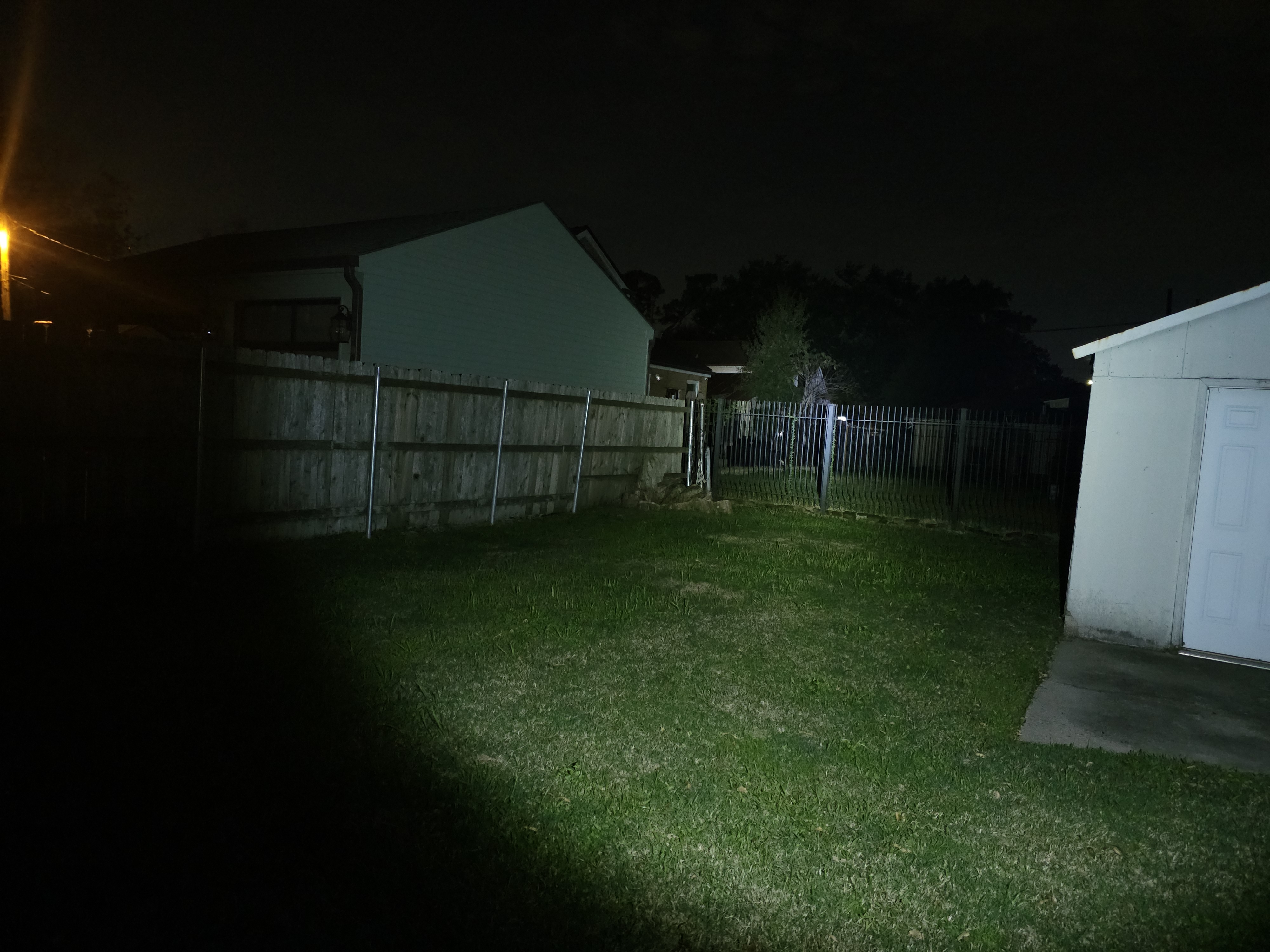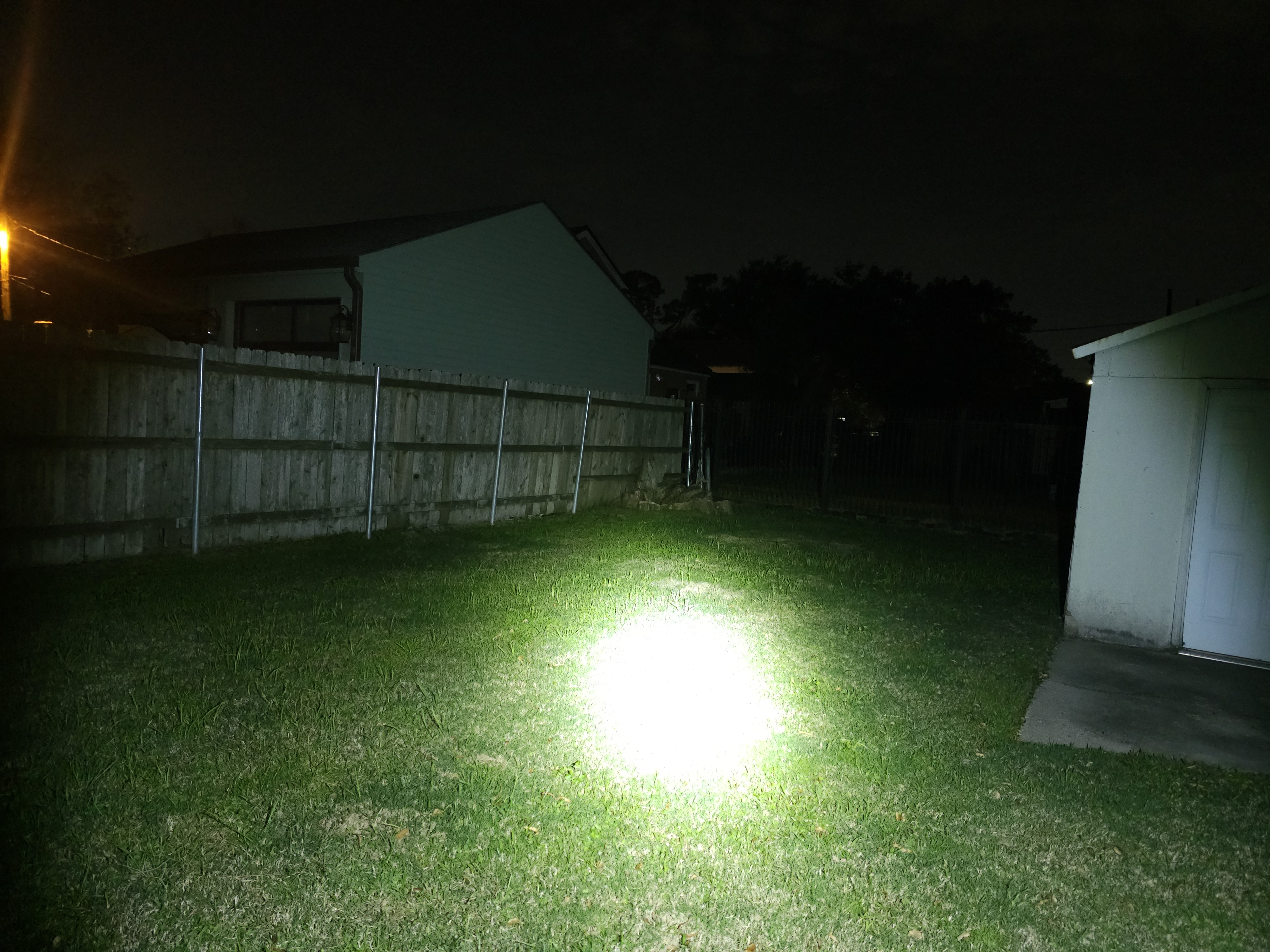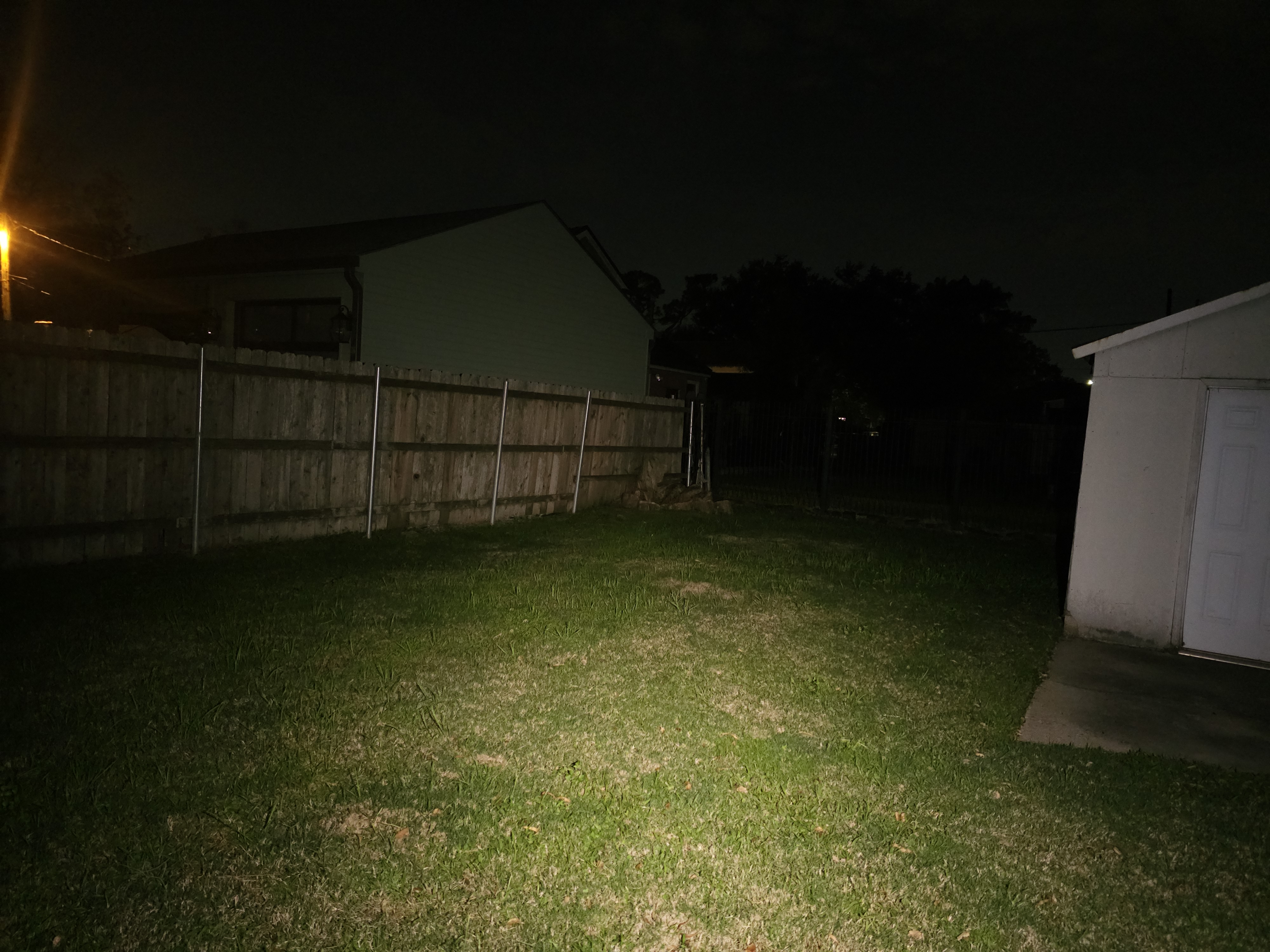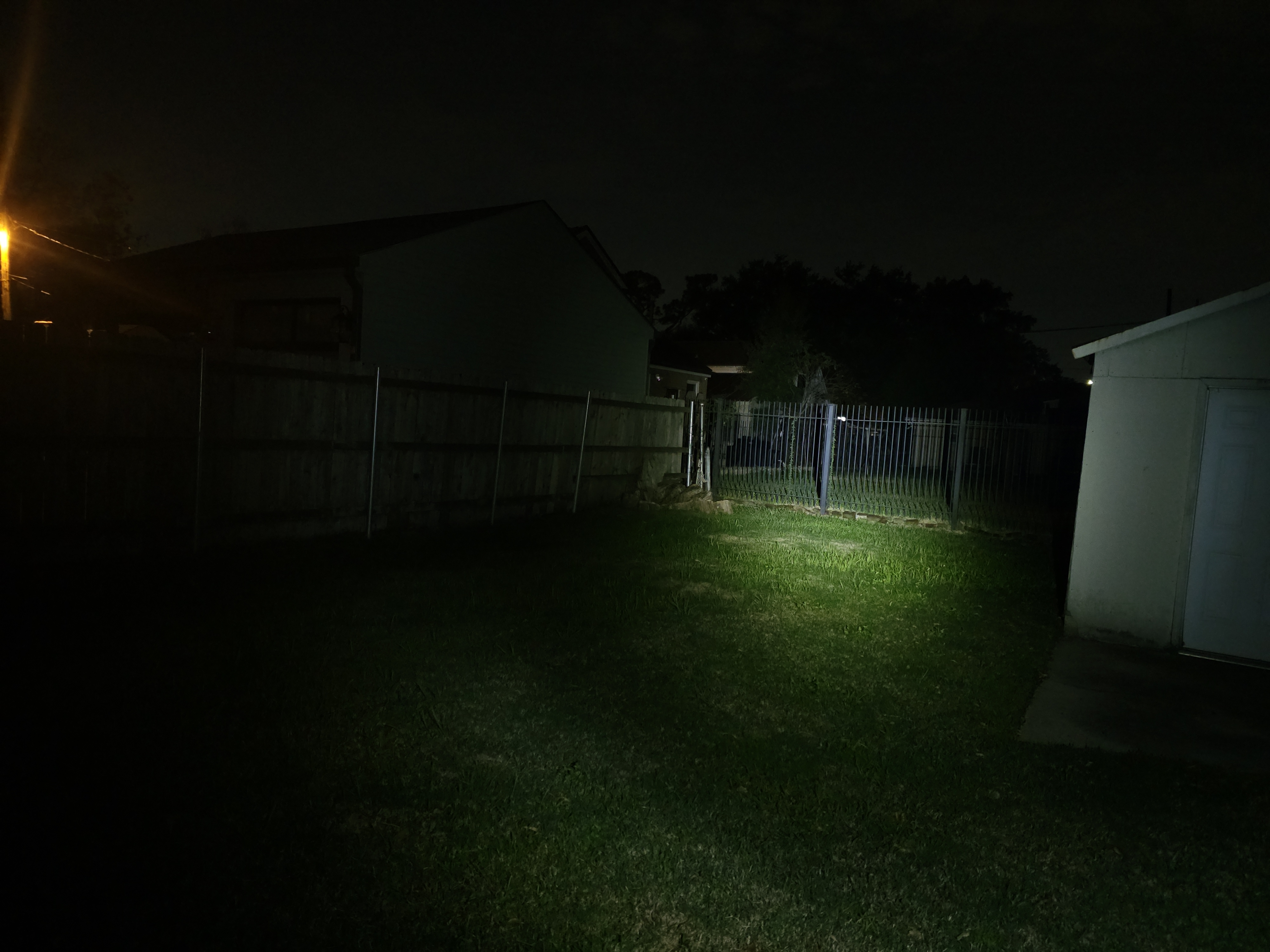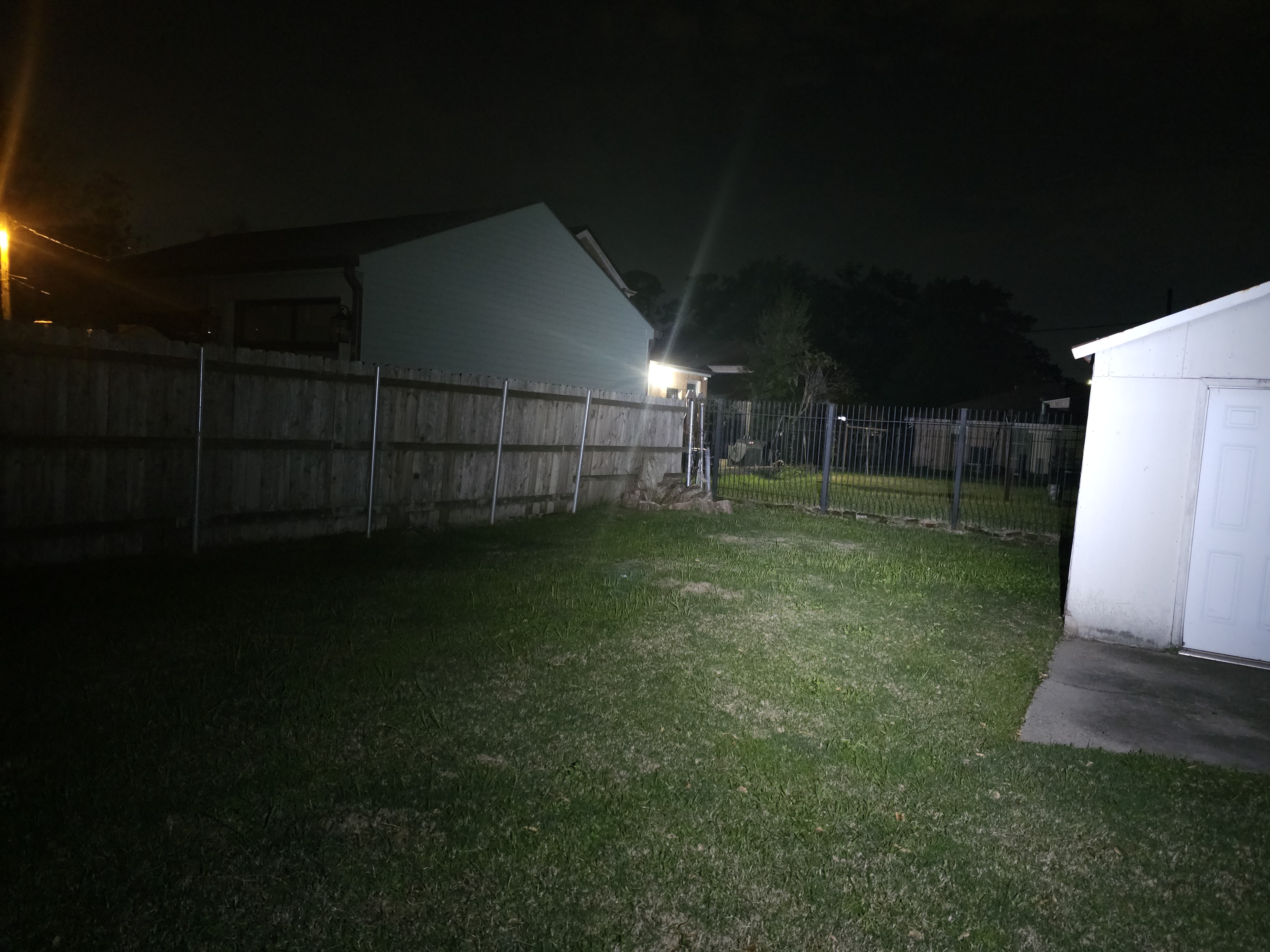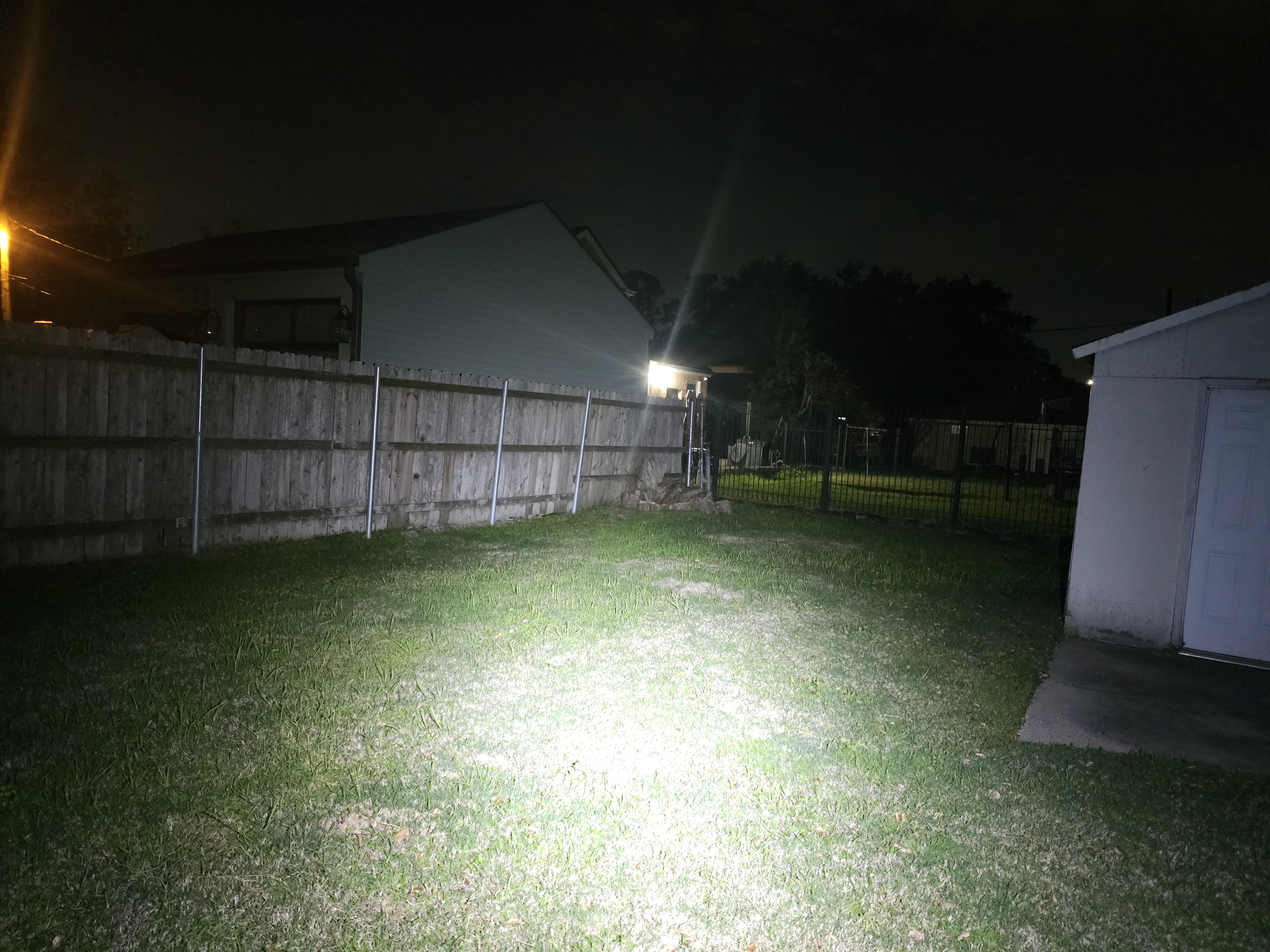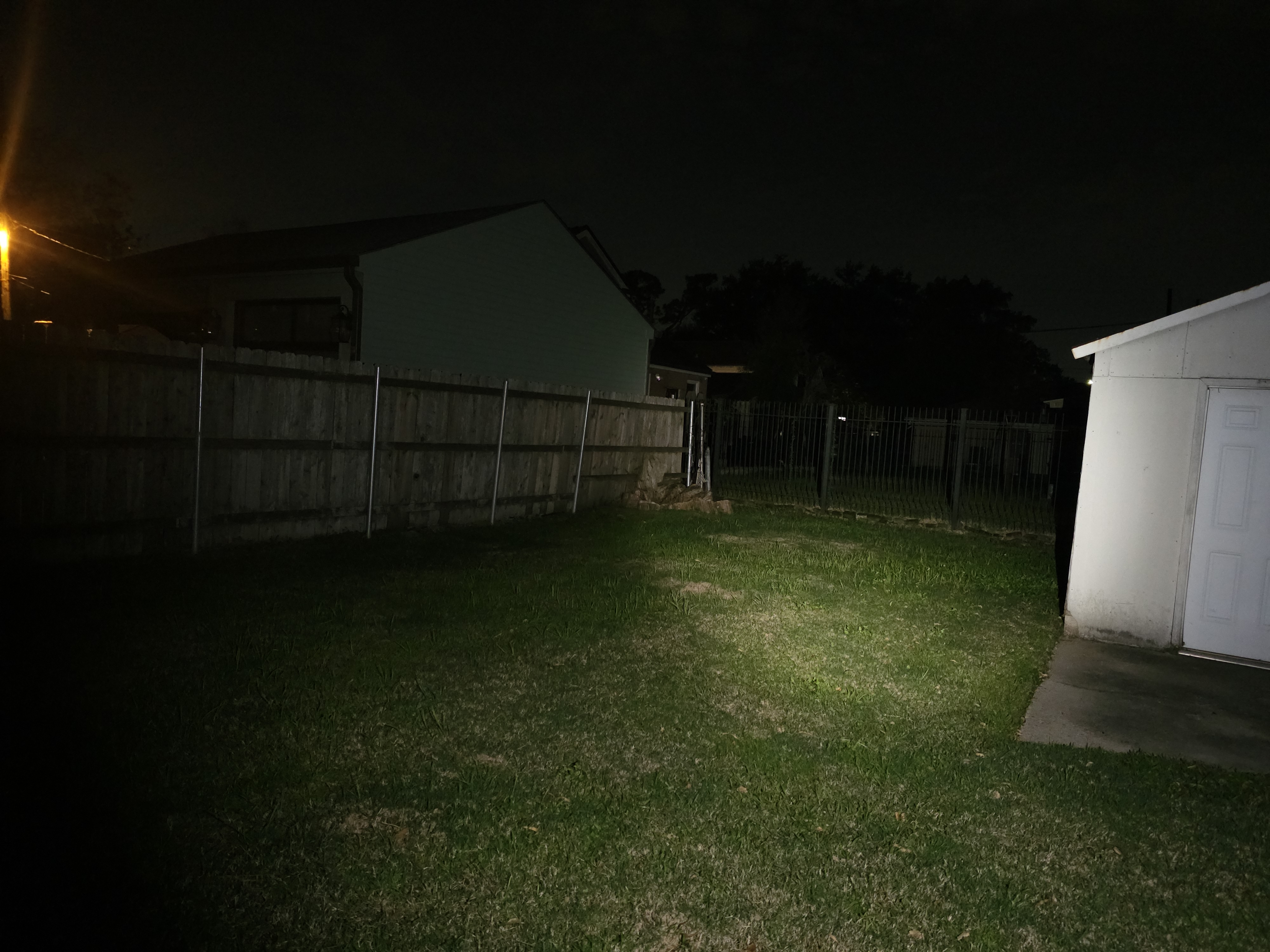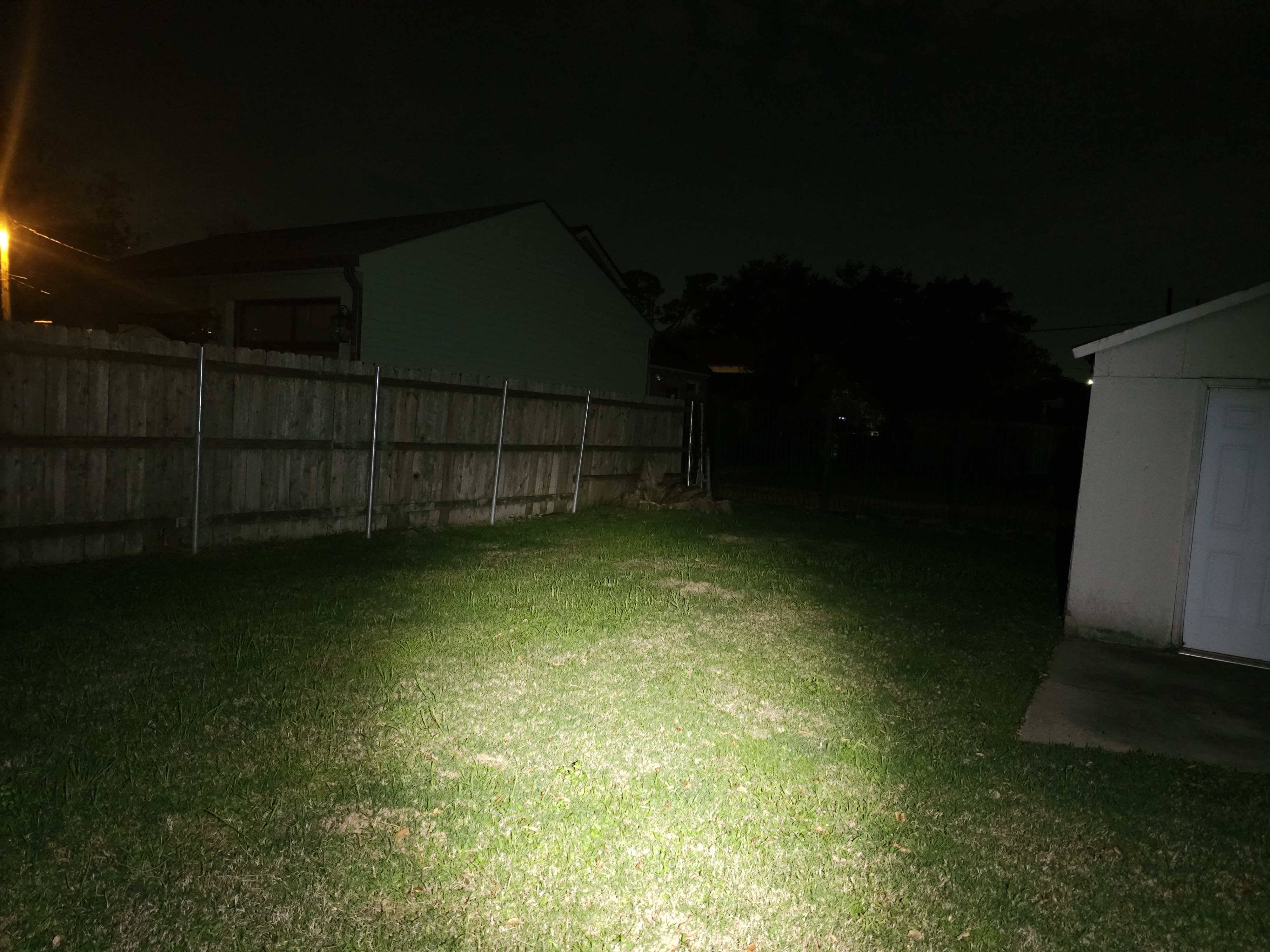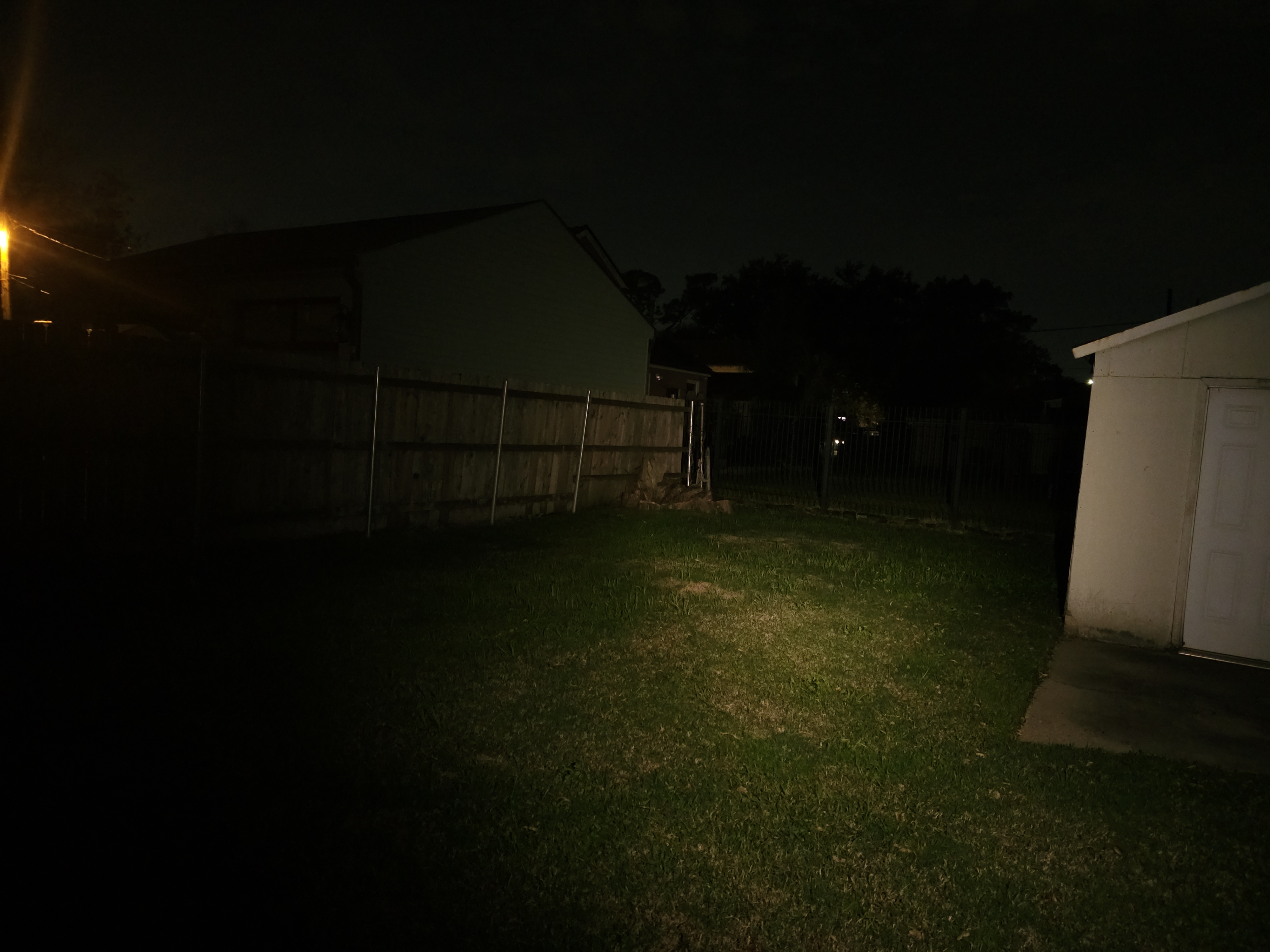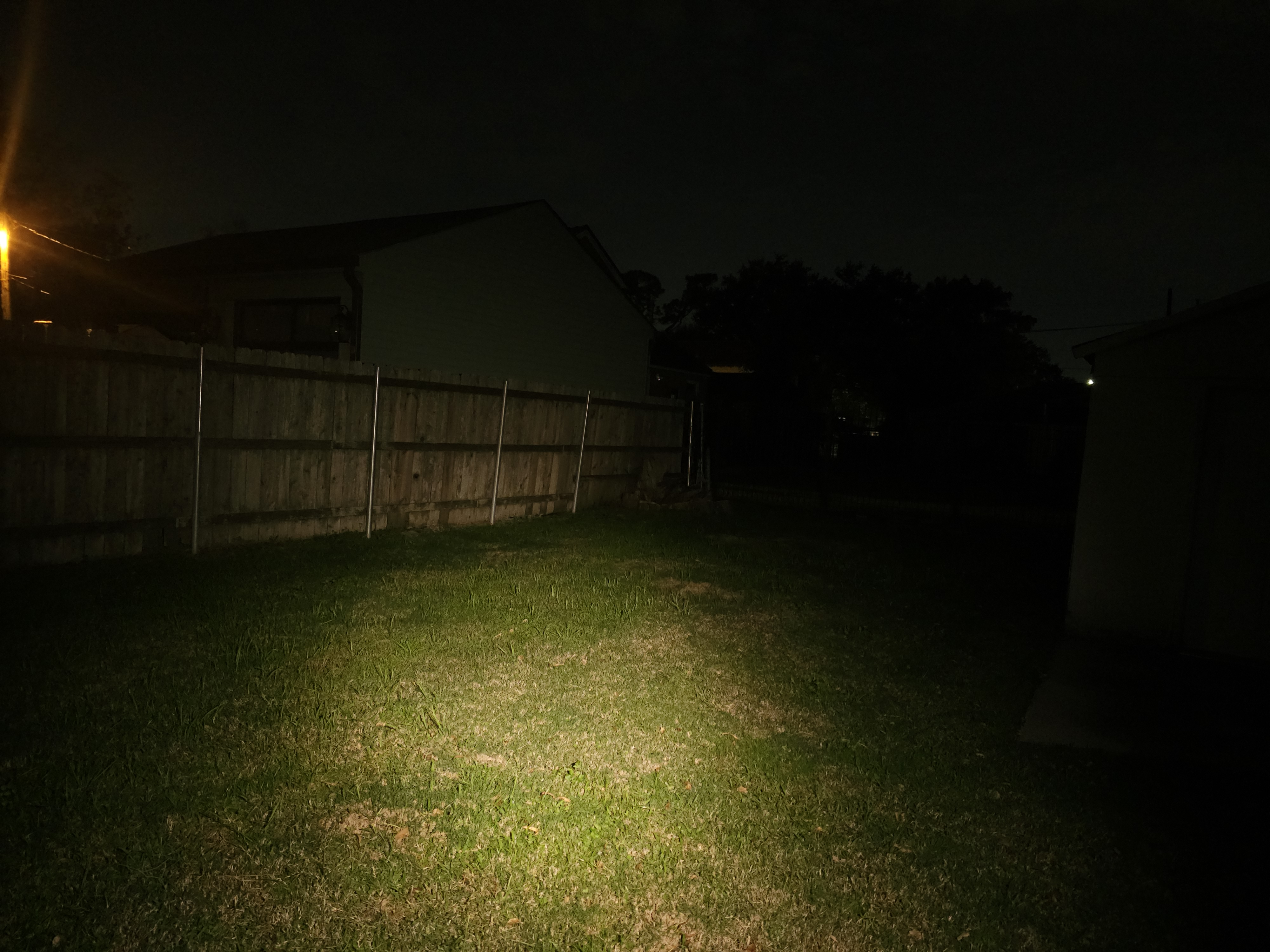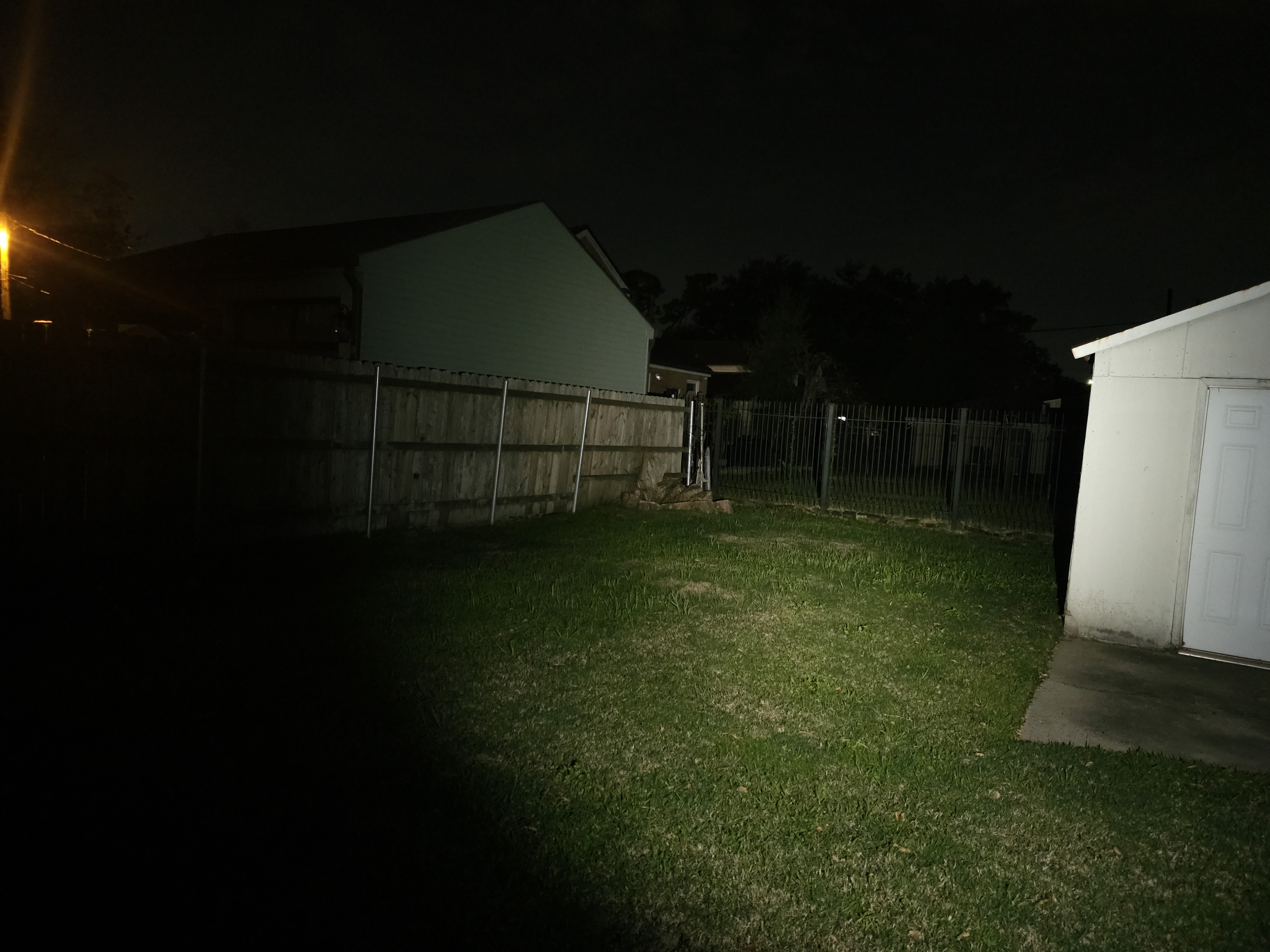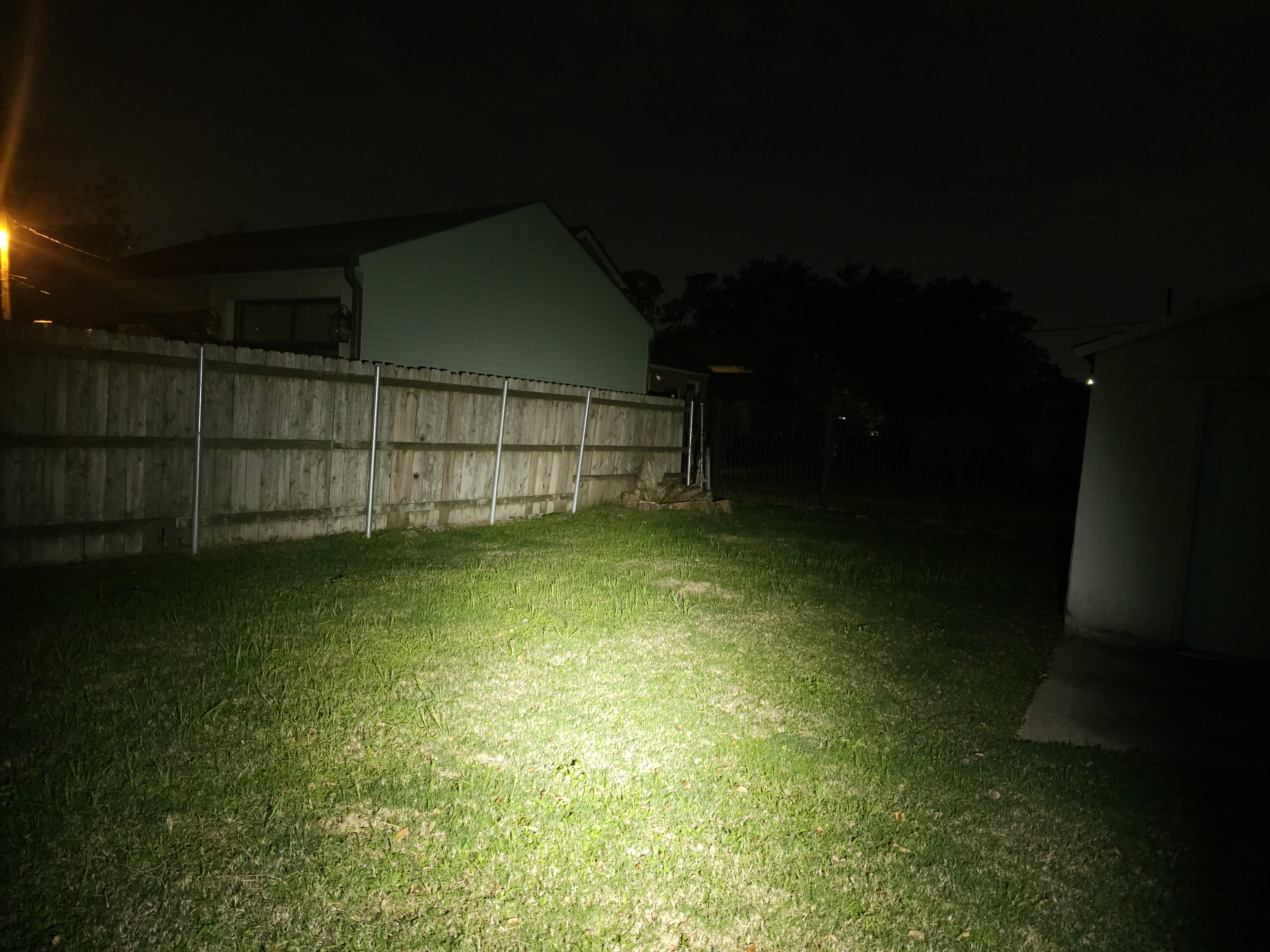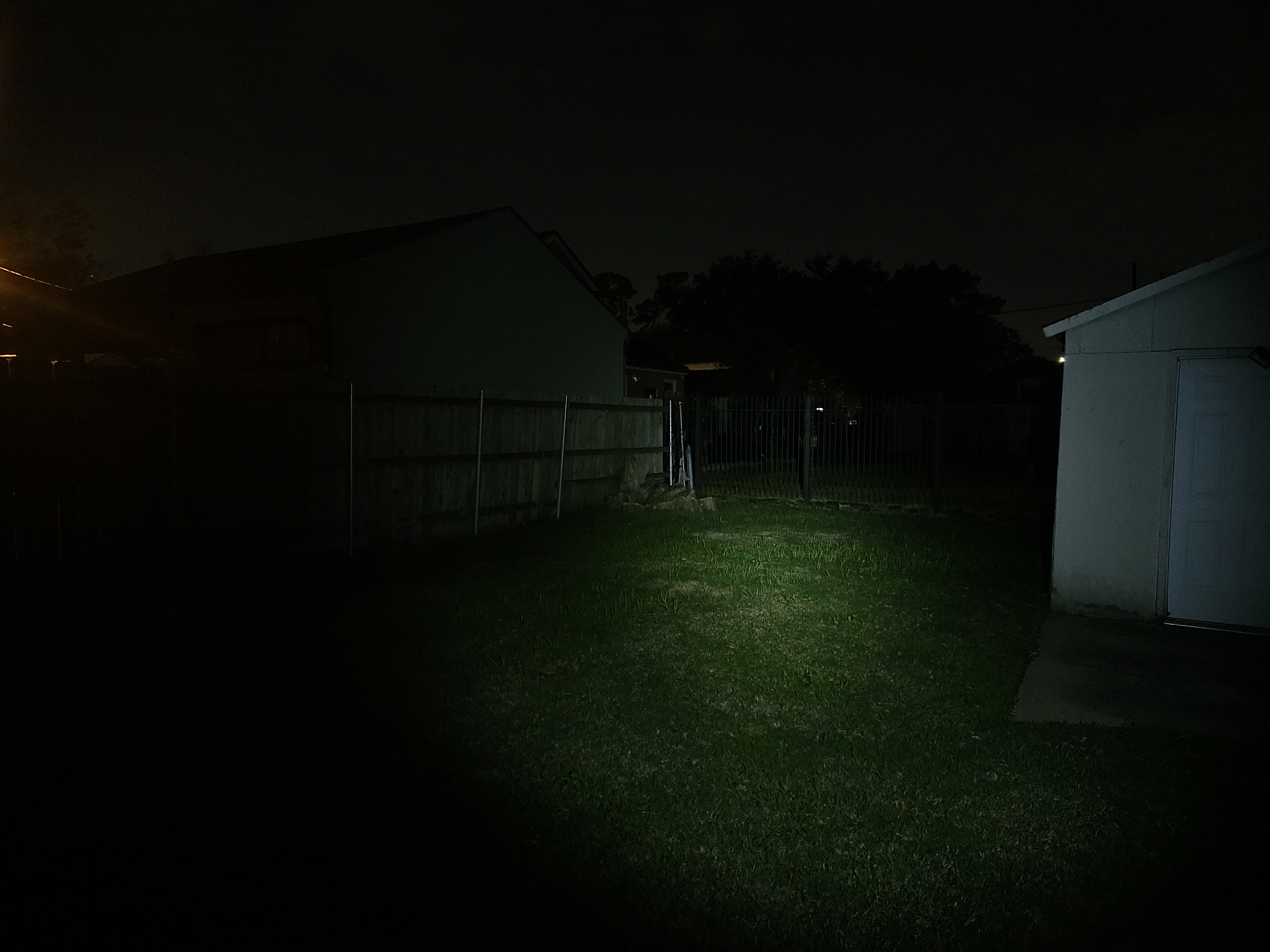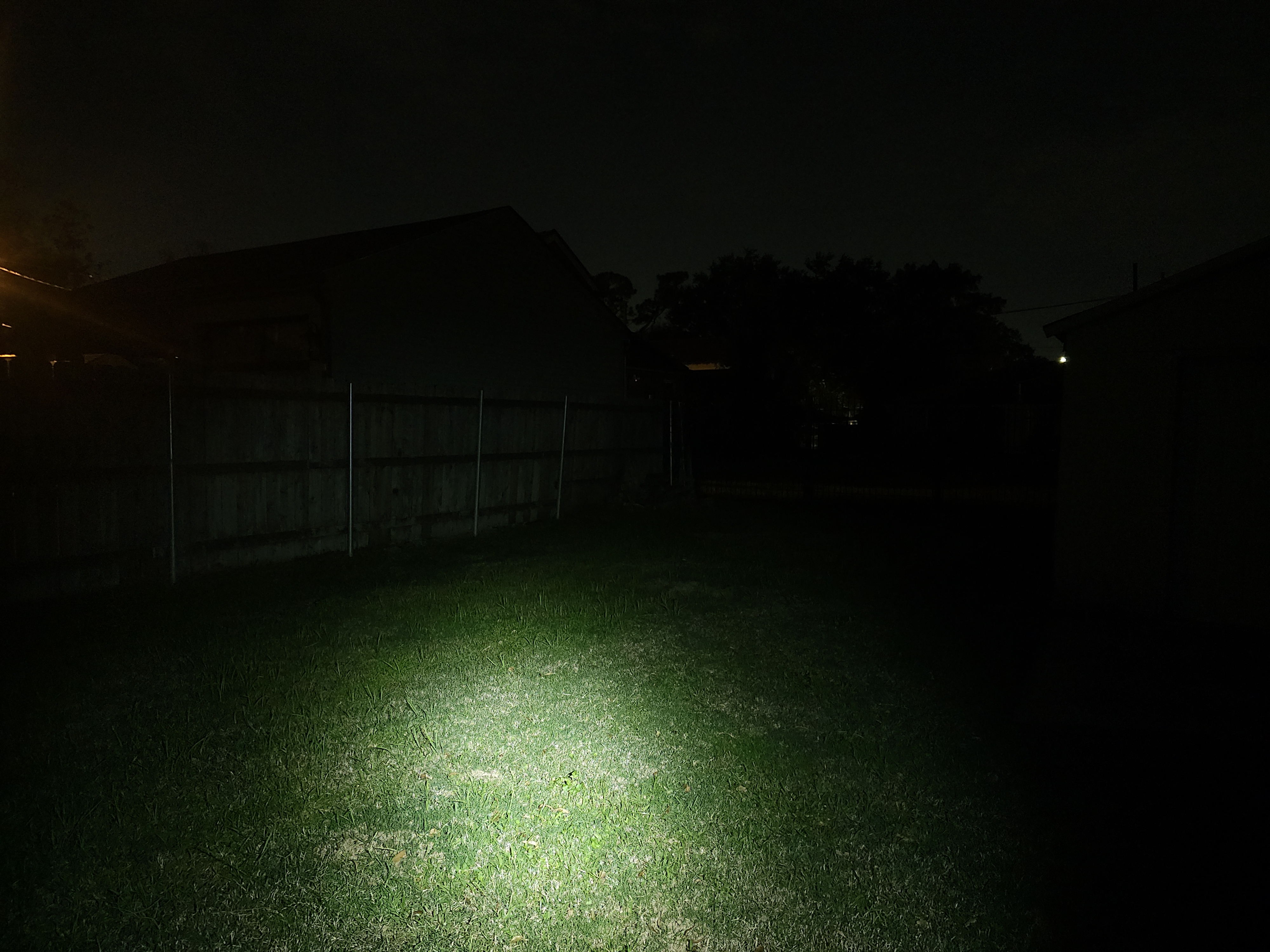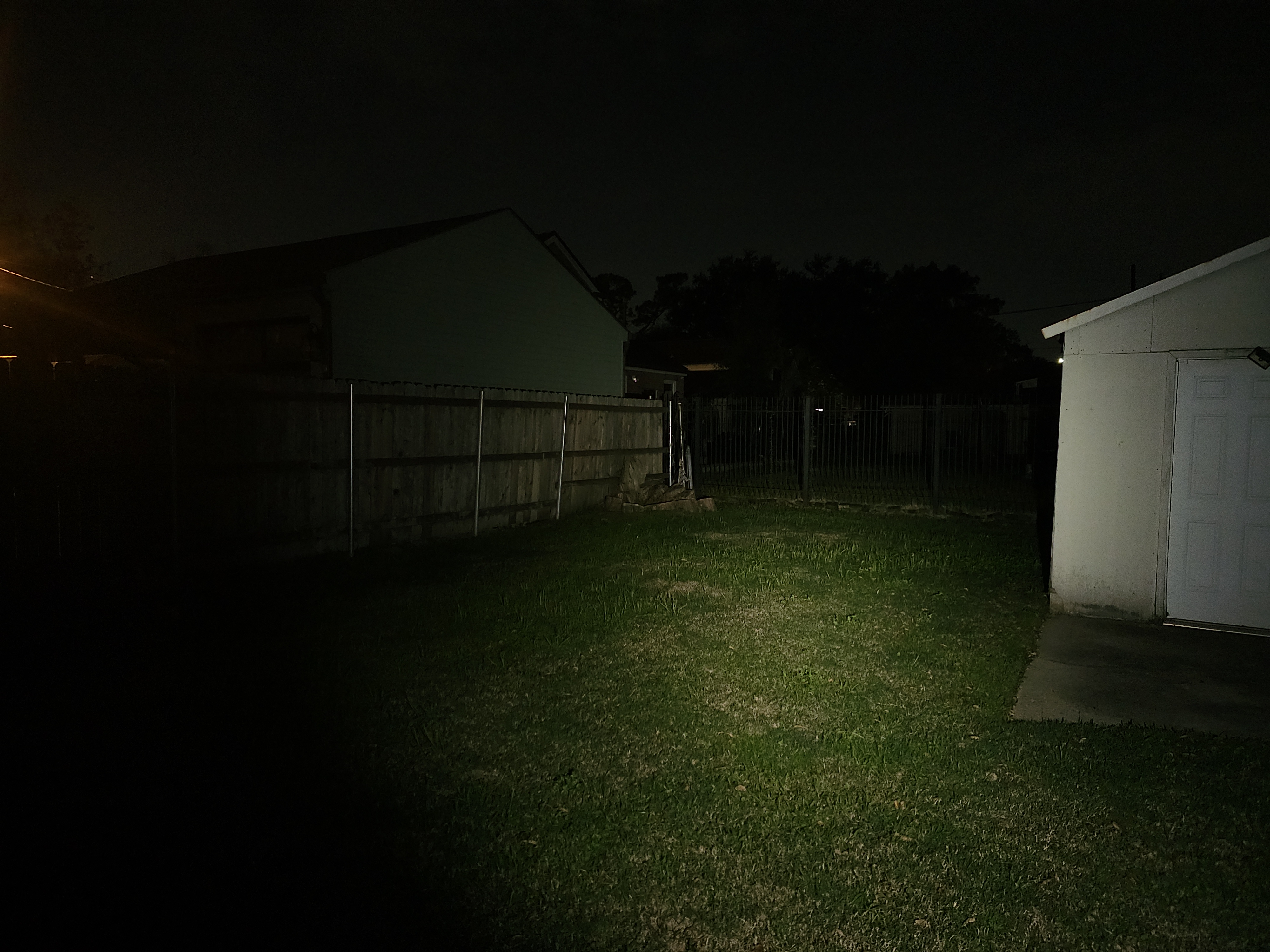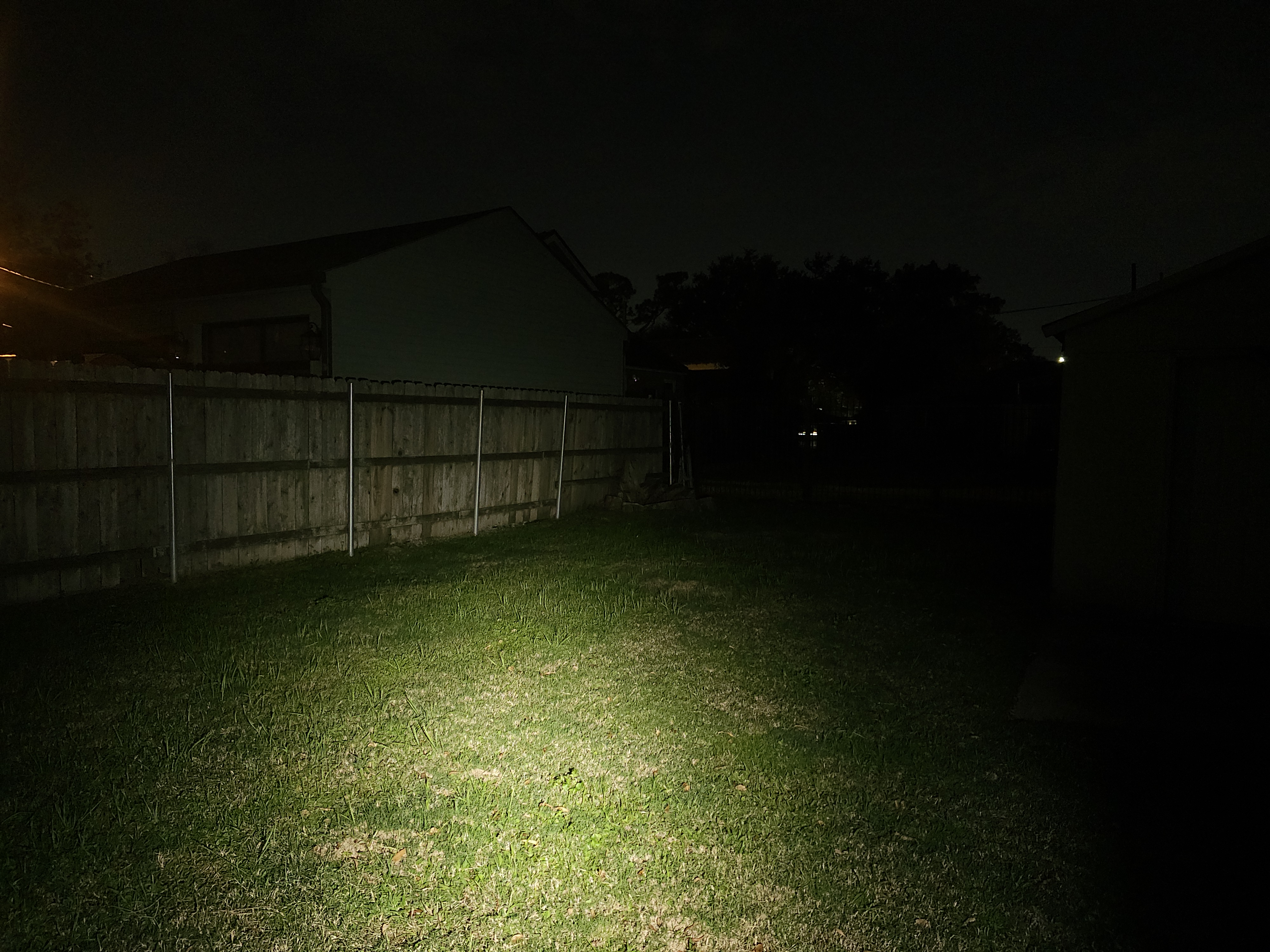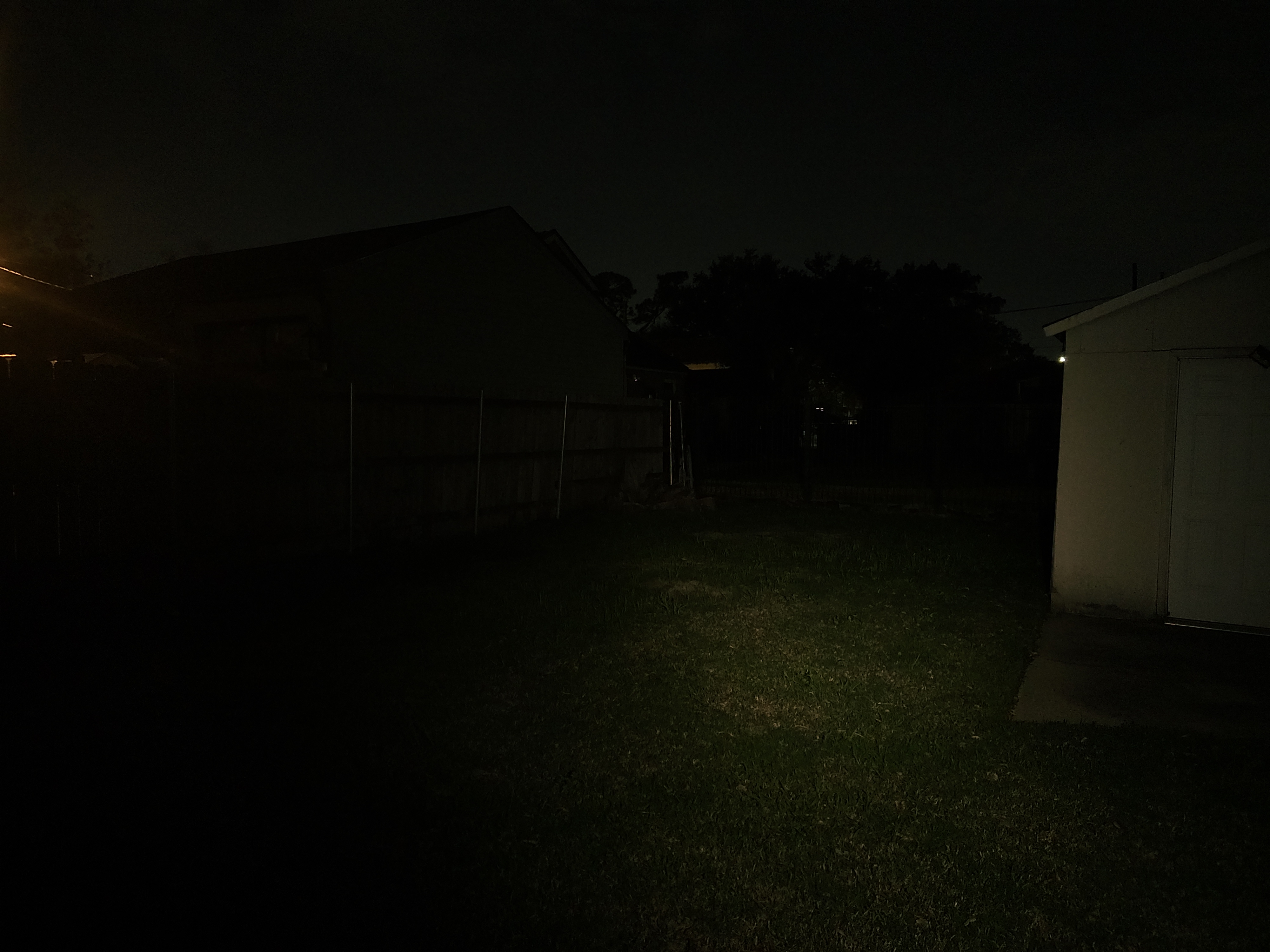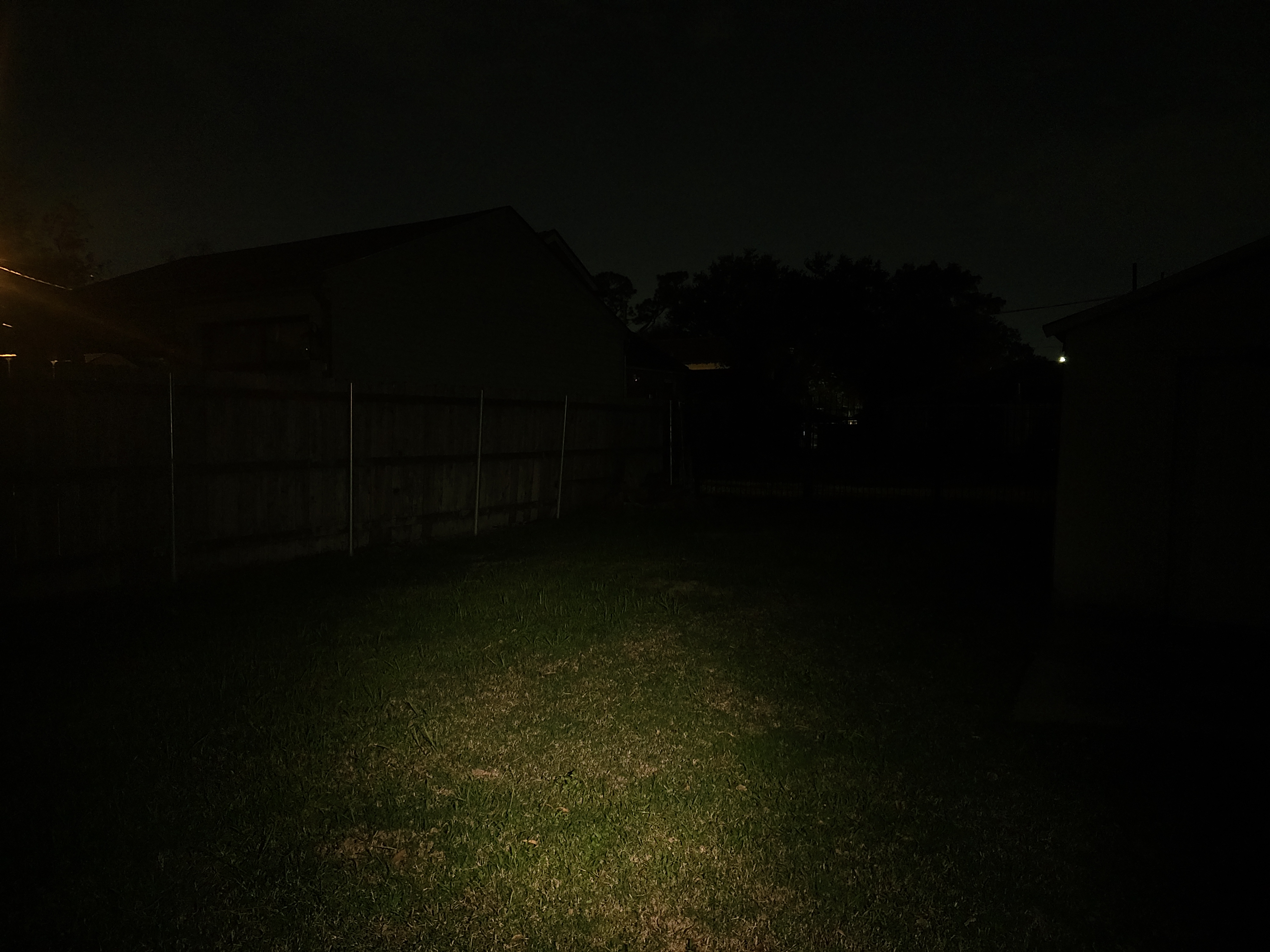"The KC1 and M8 arguably count as rotary control, and here I am doing another... Is this going to become a meme here?"
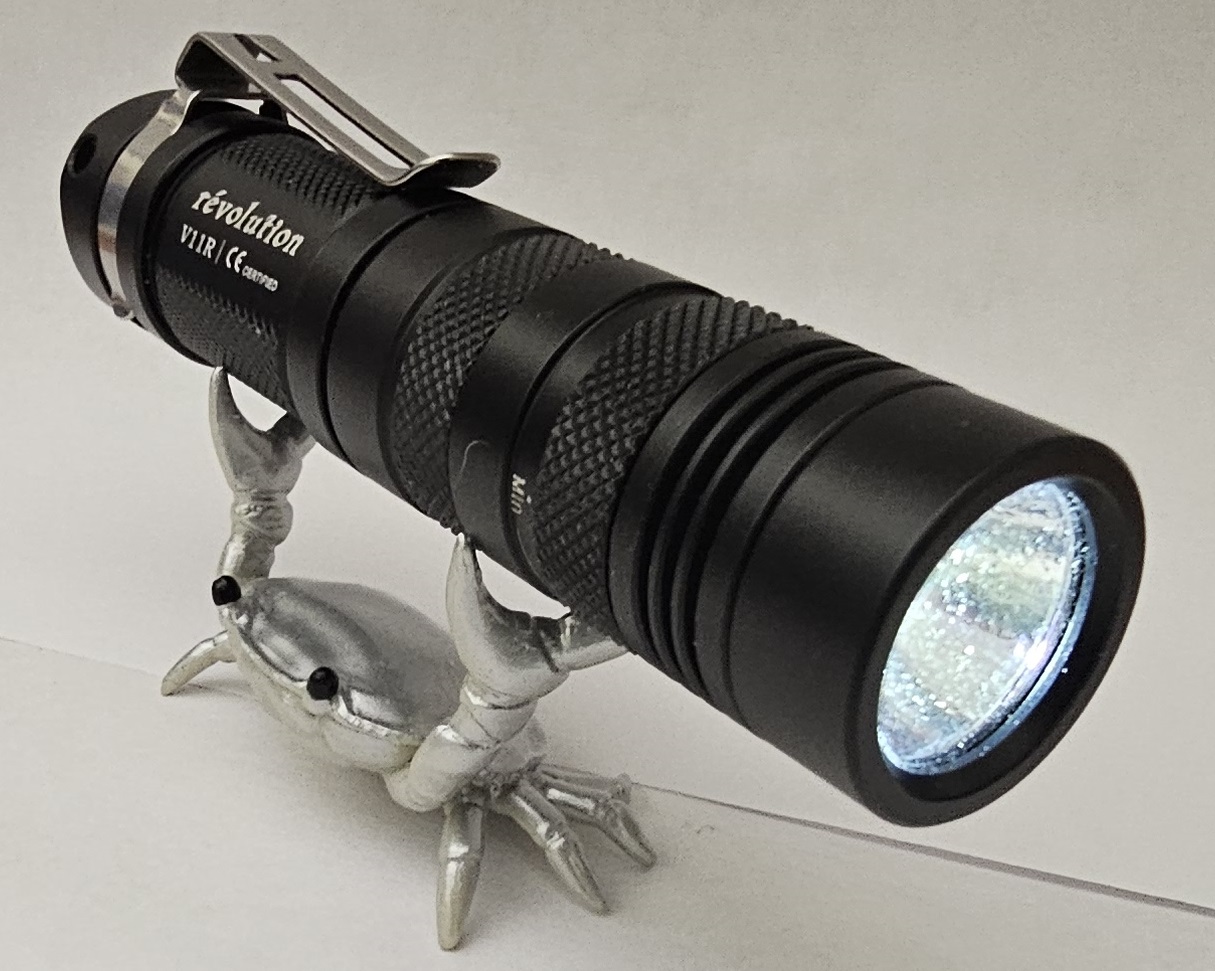 The Sunwayman V11R is a dual-chemistry light with rotary control that takes several different battery sizes; 16340 or CR123A, or using an extension tube for 14500 and AA. This is a discontinued light from the late 2010s being looked at from a 2023 viewpoint.
The Sunwayman V11R is a dual-chemistry light with rotary control that takes several different battery sizes; 16340 or CR123A, or using an extension tube for 14500 and AA. This is a discontinued light from the late 2010s being looked at from a 2023 viewpoint.
Introduction, Background, and Official Specs
The Sunwayman V11R Revolution is a single-LED light with a forward-clicky tailswitch and rotary brightness control, that falls into the "large penlight" category. The V11R uses a Cree XM-L2 (CCT measured between ~7000 and ~7800 k) with an orange-peel reflector.
This light has been discontinued since the mid-2010s and I was unable to find a definitive release date, but can be found on the used market occasionally. The main selling point of the V11R is its magnetic control ring. This allows for an infinite range of brightness adjustment with no perceptible steps of brightness. This UI is intuitive to use, although does have a few disadvantages as I will explain later. It also makes the light very fun to have in the hand and play with. Sunwayman no longer exist as a brand, having disappeared some time around the late 2020s. Sunwayman made several lights with rare and unique design concepts, and generally tending towards smaller pocketable lights. The V11R is designed for multiple different battery types, taking either CR123A or 16340 by default, and also 14500 and AA using an extension tube.
Official specs:
| Parameter | Official Value | Measured |
|---|---|---|
| Output (maximum, 16340) | 500 lm | (not tested) |
| Output (maximum, 14500) | (not specified) | 587 lm (117.4% of 16340 spec) |
| Output (minimum) | 1 lm | ~1 lm |
| Output (maximum, CR123A) | 190 lm | (not tested) |
| Output (maximum, AA) | (not specified) | 186 lm |
| Runtime (maximum, 16340) | 25 min | (not tested) |
| Runtime (maximum, 14500) | (not specified) | 48 mins @ 920mAh (comparable to 16340) |
| Runtime (maximum, CR123A) | 1.5 hrs | (not tested) |
| Range | 130m (4,225 cd; 456 ft) | 139.8m (4,886 cd; 458.7 ft) |
| Range, AA battery | (not specified) | 67m (1,165 cd; 219.8 ft) |
| Voltage | 0-9.4.2V | |
| Width | 23 mm (0.9 in) | 23.0 mm |
| Length | 84 mm (3.3 in) | 84.9 mm |
| Length with extension tube | (not specified) | 101.2 mm |
| Weight (no battery) | 49g (1.7 oz) | 49.0g without extension tube, 58.2g with |
| Weight (with 14500 battery) | (not specified) | 80.0g |
| Weight (with Eneloop AA) | (not specified) | 84.4g |
| Water resistance | IPX8 | |
| LED | Cree XM-L2 U2 | CCT: ~7000k at minimum, to ~7800k at max |
This light is owned by another community member, who allowed me to borrow it to test in return for gathering detailed output and spectrometer data on it.
First Impressions
As this is a discontinued light, how it is packaged may vary - this one came in an unmarked cardboard box which was not the original one. The original box can be seen in 1lumen's review.
The light is tube shaped, with no flare for the head, a deep orange peel reflector behind the lens, and a large rubber tailswitch with a raised surround. The surround has three small smoothly-shaped cutouts that make the switch usable in a reverse grip so the thumb falls nicely on the switch, while the raised area between each cutout allows the light to tailstand with decent stability - it will slide on a tabletop while tailstanding rather than fall over when pushed; the narrow head likely helps with stability here. There are three lanyard holes, one on each raised segment of the tailswitch surround (although there is only a single hole through the surround rather than a double, so if a lanyard is fitted, it will negatively affect the light's ability to tailstand). The pocket clip snaps into a groove on the body tube and can be rotated while on the body with medium effort. The clip itself is single-direction (head down carry) and non-reversible, and overall very stiff - it can be used without manually lifting prior to clipping, but is definitely close to being excessively stiff for this, although combined with the light's low weight, it does make for very secure feeling carry. In addition, the clip has a lanyard hole for another possible attachment point. With the clip not installed, the light will roll freely with no flat surfaces to stop it.
The body tube has some very fine diamond knurling with two flat spots for grip (although as the knurled section is inset slightly, this does not provide roll prevention), and two spots at 90 degrees to those that are smooth but still curved, where the branding is engraved; the Sunwayman brand and logo on one side and the model on the other. The knurling strikes a good balance between grippy and sharp, and the pinch point of the pocket clip is against the smooth surface at the point where the tube slightly widens, so is unlikely to cause excessive wear on pockets.
The head can be removed to insert the battery, while there is no obvious way to remove or disassemble the tailcap, although the light does come with a replacement switch and metal switch boot, so this may be possible, but I was not going to risk damaging a light that is not mine. The most likely method is the metal cutouts visible past the switch boot.
The 14500/AA extension tube fits between the body tube and head, and has a ring of the same diamond knurling as the body tube, and its own o-ring for waterproofing. The extension tube is narrower inside than the 16340 body tube, to limit side-to-side rattle when using a 14500 sized battery. The contact on the driver inside the head is a button, but the light also accepts flat top cells. However, I would not recommend this given the lack of LVP. I do not have any CR123A or button top 16340s, so my testing is exclusively using 14500 and AA eneloops.
The head has another ring of the same diamond knurling as the battery tubes, which serves as the grip for the rotary brightness adjustment and rotates independently of the head itself through 90 degrees, with a growing bar type indicator used to show the direction of brightness adjustment (clockwise = brighter) as well as max/min marks, then three small cooling fins before the bezel. The bezel is not glued in place and is removable.
Physical Design and Build Quality
The anodisation on the body is a smooth feeling matte finish, and feels high quality without any roughness. Although this light was purchased used and visually shows a few very small marks, in general the finish has a durable feel and looks thick. The extension tube threads on smoothly with medium pressure, although I did find myself wishing that it required more force to remove, as when adjusting the brightness with the extension tube fitted, it was easy to accidentally untwist the extension tube (when attempting to turn the brightness up), although the mechanical tailswitch does make it simple to resolve as soon as you understand what happened, this is in my opinion definitely on the level of a usability problem with the extension tube, and certainly makes it difficult to use for someone inexperienced with it. One workaround is to make sure you grip the extension tube specifically while adjusting the brightness. Without the extension tube, this is not a problem as the brightness adjustment ring rotates more readily than the head unscrews from the battery tube, and the head only really unscrews itself if the user keeps applying force after hitting maximum brightness, with a reasonable threshold between the two.
The tailswitch design is excellent - the surround with its cutouts allows a reverse grip with a thumb on the tailcap without it being an uncomfortable position. The tailswitch is a forward clicky, which needs a relatively firm press to activate without being excessively heavy that I ever worried about accidentally clicking past the detent. One thing to note is that the light is not instant-on when using 1.5V batteries (likely due to the use of a boost converter to get 3V, as this does not happen when running a li-ion battery where the on response is much faster). The momentary mode is purely a momentary on, there are no hidden modes or strobes from multiple taps, so the light is usable for manual signalling.
Size Comparison
I took comparison photos of the V11R with a Jetbeam RRT01 Raptor as an example of a similar light that is available today, as well as several other penlights and EDC sized lights for scale.
- Sunwayman V11R
- Jetbeam RRT01 Raptor
- Emisar D2 (W1/519A 4500k)
- Wurkkos TS10 (6000k)
- Acebeam Rider RX 2.0 (519AV1 5000k)
- Reylight Pineapple Mini (219B 4500k)
- Sofirn SP10 Pro (LH351D 5000k)
With extension tube
Without extension tube
User Interface
| State | Action | Effect |
|---|---|---|
| Off | Half-press | Momentary on |
| Off | Click | On |
| On | Click | Off |
| (n/a) | (rotate ring) | brightness adjustment |
There is no lockout mode, although mechanical lockout is possible both at the head and the extension tube if fitted. In general, I did not feel any need for a lockout mode as the initial press on the switch is firm enough to prevent accidental activation in a pocket.
One warning is that there is no LVP when using li-ion batteries - when testing runtime, it discharged the 14500 battery I was using to 0.9V before dropping to <1 lm. There was no obvious change in output when the battery would be passing an unsafe threshold. There is enough space with the extension tube to use protected 14500 batteries (I tested using an Acebeam branded one).
There is no low voltage warning, other than output reducing.
The light does not have any standby drain past that of the battery's inherent self-discharge, due to the mechanical tailswitch. With an eneloop in, the light could be safely stored for an extended time.
Driver and Emitters
Since the V11R is compatible with three different voltages (1.5V, 3.3V CR123A, and up to 4.2V li-ion), it is likely a linear/boost using the linear above 3V, as output on li-ions was not regulated and showed a drop with battery charge as shown by the lower-drain protected 14500 having a lower initial output, but holding a slightly higher sustained output due to remaining being closer to full at that time. When using eneloops, the light switched off at 0.9V, although as mentioned above, when using li-ion batteries, the light was also able to discharge these to 0.9V, presumably switching over from the buck to boost circuit when the battery dropped under 3V. If using li-ion, I would suggest definitely using a protected cell. Brightness adjustment is smooth using the control ring, with no visible steps in brightness and the overall adjustment resolution is comparable to that available in a modern Anduril light. There is no "off" position on the control ring and the brightness at the minimum position comes in at approximately 1-1.5lm.
When using li-ion, there is no low voltage warning - this is somewhat dangerous given the lack of LVP, particularly since the output from the boost circuit is very stable until the battery is down to 0.9V. When using AA batteries, when output dropped to 28 lm, the light began rapidly flickering on/off at a fast rate; this was added as additional samples (as my luxmeter's resolution is not high enough) in order to be represented on the output graph; the actual rate of flicker was fairly fast and varied over time. This is very close to when the battery is depleted so likely is just a side effect of low voltage rather than an intentional feature.
The emitter is a Cree XM-L2 in cool white (I measured from around 7000k at moon to around 7800k on max), with an orange peel reflector. Despite the narrow head, the depth of the reflector gives a surprising amount of throw for the width, with a relatively smooth hotspot and not much tint shift, and a beam profile that is balanced with a slight bias towards throw despite the domed emitter.
I measured the LED's CCT and CRI with a Colormunki Photo and ArgyllCMS, as well as an Opple Light Master 3 and 4 to provide a comparison point for users of these meters.
CRI and tint: Maximum
CRI and tint: 50%
Power and Charging
The V11R is a multi-chemistry light, and able to use 1.5V AA, CR123A, and li-ion batteries in two different sizes; 16340 as well as 14500 using the extension tube. Button top batteries are required due to a physical reverse polarity protection ring on the driver. Batteries can be inserted by either removing the head or the extension tube if fitted; the tailcap is not removable. There is enough room in the 14500 tube to fit protected batteries with USB charging.
Moddability
The bezel is removable (although I did not try this) so an emitter swap may be possible, as well as changing the reflector for a smooth one if a suitable reflector could be found. Access to the driver itself looks extremely difficult, and with the magnetic control ring, this is not a light that more complex mods would be possible for. The light came with a spare tailswitch and metal switch cover, although disassembly of the switch is not obvious visually and I was not going to experiment on a rare light that doesn't belong to me, it is possibly achieved by unscrewing using the cutouts visible in the metal endplate.
Performance
All lumen measurements taken using a 4.5 inch Texas Ace lumen tube. Candela measurements were performed indoors at a distance of 1m, uusing a UNI-T UT383BT.
Runtime tests were performed using the lumen tube's HS1010A luxmeter, which the tube is calibrated for, with data recorded via taking a video, exporting the individual frames using ffmpeg, and parsing the value on the luxmeter's display at the appropriate frame for each measurement. This method is essentially automated manual work, so I reduced the data interval over time. I logged the value every second for the first 5 minutes, every 10 seconds for the first 1 hour, then every 30 seconds afterwards. Each test was stopped when the lumen tube registered zero; in each case I found the light had completely switched off at this point. For the li-ion testing, I used a Vapcell H10, and for AA testing, a standard white label Eneloop. Brightness was set to maximum unless noted otherwise.
There was no statistically significant difference in output between Eneloop and Eneloop Pro, so other tests were only performed with standard Eneloops.
Specs
Specs are given for 16340 and CR123A, although I could not find any for 14500 or AA. The performance of 16340 and high drain 14500 is broadly comparable, although the typical 16340 is 700mAh while the test battery used is 1000mAh, so ~70% of the 14500 runtime with 16340 should be expected, although in my opinion this is not a light to be pushing the runtime with li-ion cells in. Using a protected 14500 with 920mAh gave almost the same runtime, so the boost circuit is doing very little to extend the runtime. Performance using Eneloops is comparable to specs for CR123A, which would make sense if both were using the boost driver circuit, although I could not find any official specs for AA batteries.
| Measurement | Spec | Highest measured |
|---|---|---|
| 16340, maximum | 500lm; 25 mins; 4,225 cd | |
| 14500, maximum | (not specified) | 564 lm (112.8% of spec); 48 mins; 4,886 cd |
| CR123A, maximum | 190lm; 1.5 hours | |
| CR123A, minimum | 1lm; 35 hours | |
| Eneloop AA, maximum | (not specified) | 186 lm |
| Eneloop AA, minimum | (not specified) | ~1 lm |
Output and Throw
| Light | Peak output | Output after 30s | Output after 1 minute | Output after 90s | Output after 5 minutes | Output after 15 minutes |
|---|---|---|---|---|---|---|
| Sunwayman V11R (14500, 1000mAh) | 564 lm (112.8% of spec) | 518 lm | 514 lm | 514 lm | 510 lm | 428 lm |
| Sunwayman V11R (protected 14500, 920mAh) | 493 lm (98.6% of spec) | 459 lm | 454 lm | 452 lm | 445 lm | 391 lm |
| Sunwayman V11R (Eneloop AA) | 186 lm | 161 lm | 154 lm | 152 lm | 143 lm | 138 lm |
| Sunwayman V11R (Eneloop Pro AA) | 186 lm |
| Light | Peak candela | Candela after 30s | Candela after 1 minute |
|---|---|---|---|
| Sunwayman V11R (14500) | 4,886 cd (139.8) | 4,580 cd (135.4m) | 4,557 cd (135.0m) |
| Sunwayman V11R (Eneloop AA) | 1,165 cd (66.7m) | 1,074 cd (65.5m) | 989cd (62.9m) |
Runtime
| Light | Runtime |
|---|---|
| Sunwayman V11R (14500) | 49 minutes |
| Sunwayman V11R (920mAh protected 14500) | 48 minutes |
| Sunwayman V11R (Eneloop AA) | 53 minutes |
Runtime was measured as the length of time usable before either the hard brightness drop to around 28lm on 14500, or when the flickering starts using AA.
The V11R exceeds spec on li-ion and comes close to the spec for CR123 when using eneloop AA. Runtime on a 1000mAh 14500 (Vapcell H10) was 53 minutes; based on this then assuming a high end of 920mAh for 16340, this should approximate to a runtime of around 47 minutes, although also ending in an overdischarged battery. With a protected 14500 battery, the one I used for testing was from Acebeam, and rated at 920mAh with no CDR spec listed. This resulted in a lower output, consistent with a lower drain battery, and runtime came out to 48 minutes, with the battery cutting off at 2.96V. There is a very short runtime window where the boost circuit is overdischarging the battery quite rapidly, adding to the risk of using unprotected cells.
Beamshots
Lights used:
- Sunwayman V11R
- Jetbeam RRT01 Raptor
- Emisar D2 (W1/519A 4500k)
- Wurkkos TS10 (6000k)
- Acebeam Rider RX 2.0 (519AV1 5000k)
- Reylight Pineapple Mini (219B 4500k)
- Sofirn SP10 Pro (LH351D 5000k)
Competitors
The Jetbeam RRT01 Raptor is probably the best known currently-available modern light with a similar control system, although Jetbeam's design includes an off detent on the rotary control, 180 degree rotation rather than 90, and hidden strobe and blinky modes. It is a larger light, but only by a little when both are configured for 14500, and offers higher performance as well as a much lower moonlight.
Although it lacks the physical control interface, any Anduril light offers smooth brightness adjustment. I used the Sofirn SP10 Pro in this review as it is a dual-chemistry light of similar dimensions and with similar optics, but there are many other possible choices. The SP10 Pro offers similar size and dual chemistry compatibility with higher output in a smaller and lighter package that is available new, although with a more traditional interface.
Final Thoughts and Score
| Category | Score | Comments |
|---|---|---|
| Looks | 7/10 | The V11R has a relatively subtle look, without many obvious design cues as to the control mechanism, and in general looks like many small EDC type lights. I guess I'd mostly describe it as unassuming; it's definitely a good looking light, but most of the appeal is in using it more than looking at it. |
| Quality | 7/10 | Build quality feels excellent, the surface finish feels smooth and high quality without any marks or thin spots. The threads are smooth and easy to turn (possibly too easy, with the rotary mechanism). The switch feels solid without being too stiff. The rotary control ring is a little stiff compared to what I would like; I find the RRT01 is a better rotary light for fidgeting and playing with, but the V11R definitely feels well-designed and well-made. |
| User interface | 6/10 | The rotary control is of course going to be the big point as to whether you like the UI or not. Once I adapted how I hold it to hold the extension tube (or if using the light without it) then the brightness adjustment is easier, if a little stiffer than I would have liked. I did find myself wishing that the brightness control allowed a lower setting sometimes, although this also has the disadvantage of accidentally switching the light on at or near minimum potentially causing confusion if the light was actually on or not. Lack of strobes and blinkies may be considered a disadvantage or not, while the switch does allow for use for signalling. |
| Performance (absolute) | 6/10 | ~500 lm from a 14500 or 16340 is average, although certainly good for its time. |
| Performance (sustained) | 5/10 | With li-ion batteries, I would not recommend pushing it on unprotected batteries in terms of runtime due to the risk of overdischarge - in particular, the boost part of the driver has flat and stable output, so it is easy to accidentally go way too far. On AA, runtimes are good for the output and it has excellent regulation until the battery is empty. |
| Moddability | 4/10 | An emitter swap may be possible, but otherwise there isn't much potential due to the complexity, but that isn't why you'd buy this light. |
| Practicality | 6/10 | The lack of LVP limits its use as an EDC light with li-ion without a (rarer and more expensive) protected battery, but with eneloops or a protected battery, it is definitely small and light enough to be easy to carry. The relative stiffness of the rotary control does in some cases make it a bit inconvenient to adjust as you may have to shift your grip, especially if using the extension tube. |
| Value | n/a | As a discontinued light, it's hard to accurately assess this. |
| Fun | 6/10 | The rotary brightness control is definitely fun, although the relative stiffness makes it a little less convenient for playing with. On the other hand, the rotary mechanism is an interactive element that also works whether the light is on or off for great fidget potential. |
| Overall | 7/10 | The V11R is an interesting light, and the go-to at its time for a light with an infinite range of brightness adjustment. This interface is still rare in modern lights, and the appeal of having something discontinued that is generally sought-after is a plus. |
Overall, as long as you use either eneloops or protected batteries, this is still a great light. The emitter may not be to some current tastes, and the value means there probably aren't many being used for EDC, but it's still an excellent light to have as part of a collection, and ultimately fairly unique in its design compared to other rotary lights like the Jetbeam RRT01 that are significantly larger and heavier.
The Sunwayman V11R is discontinued, but you may be able to find it on ebay, or somewhere like /r/flashlight's monthly BST thread, /r/EDCExchange, or on a forum such as BLF.
Sorry this review took me so long, had a lot of external problems that were demanding on my time, hopefully going to be picking up the pace again a bit. Still interested in any feedback - I am active on BLF or Reddit, both on /r/flashlight and other specific subreddits, and have started my own subreddit for review content at /r/WolfgirlReviews. In particular, I would be interested in people's thoughts about size comparisons - am I providing enough common points of reference, or is there a specific popular light I should include to provide one?
>> Home